Antarctica Marathon
One year later…
One year after running this extraordinary marathon, I post again one of my most clicked articles from 2023.
Why
Why would anyone run in the Antarctica, the White Desert, the coldest, driest, highest and windiest on earth?
Because you’re crazy!
You’re thinking (I know – I have been told many times).
Well, some people do it to add the 7th Continent to their collection of marathons. But personally I had another reason. I have been dreaming about this race for almost ten years. I started fantasising about running in extreme opposite environments a long time ago, and my wish was trying the toughest race on earth, Marathon des Sables – 250 km in the Sahara desert at an average temperature of 40 degrees and carrying everything you need on your shoulders – and what I thought it was its complete opposite: the coldest, the most faraway…Antarctica Marathon. Finally I’ve managed to run both. In my mind, the two of them were always one dream only.
Photos: by myself and by Jacqueline Deely
Running shoes: Salomon Speed Cross 6
Watch: Breitling Endurance Pro
Why is it brutal?
I must admit: running Antarctica doesn’t mean being fast. Cutoff time is 6 and a half hours, and many runners – me included – are around this number. The briefing said that, compared to a city marathon, this one is about 30% slower. Personally I thought it is even slower than that, but anyway conditions vary extremely depending on the day.
Don’t worry: you won’t be running on an iceberg at minus 50. Temperatures are normally between zero and minus 15, and there is a gravel road where runners typically do loops – ice is mostly avoided.
There is altitude, there are hills, there can be snow or ice, there is a lot of mud and what makes it difficult is the wind. During my race, it was constantly around 40 knots (about 80 km per hour). If your weight is 45 kg, I can guarantee you’ll feel it. But everybody thought it was brutal, not just me. I was very happy to wear goggles because they protected me from the constant, strong, cold air.
Compared to Marathon des Sables though, this one is easier. The main reason is that, at Antarctica Marathon, you suffer one day only. Before and after, you’re treated like royalty.
What is it
There are two marathons on the Antarctic continent. I chose Antarctica marathon by Marathon Tours & Travels because it includes a cruise and explores some parts of the Antarctic, while the other one consists of a flight to a glacier only, and a flight back.
Marathon Tours & Travels is the n.1 travel agency for the main marathons in the world and is also involved with the 7 Continents Club.
This Marathon has started in 1995 and brings almost 200 runners (why not more? Read further to find out) to King George Island, the largest of the South Shetland Islands, 120 km North off the coast of Antarctica in the Southern Ocean.
King George Island is the unofficial “capital of Antarctica” with research stations from 12 nations. Its population reaches about 600 people (mostly scientists) in Summer.
The Marathon is, as every marathon, 42 km long. The course on King George’s Island has marked gravel roads that connect the scientific research bases of Uruguay, Chile, China and Russia. Depending on the weather and on the political situation (for example the Chinese base is currently close so runners had to do a shorter than usual lap, 6 times 7 km, back and forth), the exact course is different every year, and this is decided a bit far ahead, but is confirmed only the evening before – weather forecasts can be trusted only when very recent.
Ocean Victory
Why are we here?
Our guide asked us runners, gathered in the Shackleton Lounge (the main lounge where all speeches and presentations are done) during our first briefing on the cruise ship, Ocean Victory.
For adventure!
We answered.
Exactly, for adventure. So here we go: a storm with 7 mt. waves and 65 knots wind is coming…
Is she kidding? We thought. She wasn’t, but the conditions were too dangerous to keep moving, so we sailed into a bay and dropped anchor, to wait for a window of good weather.
It wasn’t too bad, because although we were rolling and feeling a bit queasy, we had time to discover our ship and listen to presentations and lectures by historians and scientists. We found out that our cabins were 5 stars, with a private terrace, a big tv screen to watch the latest movies and series, filtered and unlimited hot and cold water, environmentally friendly toiletries that included hair conditioner and body lotion, and that the rest of the ship offered library, spa treatments, 24 hours coffee and cookies, and surprisingly good food, including vegan options.
The only big downside was the lack of Internet, or better the fact that it costed 45 $ per day. Most people decided to do a digital detox.
When do you cross polar waters?
When you cross 60° S, you are officially in Polar/Antarctic waters. That exact moment I was lucky enough to be on the Ocean Victory bridge and see the latitude changing – it was 23 March 2023, at 18:47. I won’t forget the emotion I felt. The fact that the young, good looking Italian Captain – Gianmaria Billeri – pointed that out to me also helped to make feel like that, I confess.
13 facts about the Antarctic
During my time on the ship I attended every lecture about the history and characteristics of the environment we were sailing to. Here are some curious facts I learnt.
- A lot of people think polar bears and penguins live together, in fact they live at opposite ends of the Earth. Polar bears live in the northern hemisphere and penguins live in the southern hemisphere.
-
You can’t fly to Antarctica.There are very few cases of airplanes flying over Antarctica. The rough weather conditions and low visibility make it extremely difficult to fly and land a plane over the continent. It is technically possible to fly to Antarctica, but there are very few flights that take the risk of going there.
- The Antarctic used to be very warm and similar to a tropical forest – fossils prove it.
- About 200 millions years ago the Antarctic continental crust was joined with South American, African, Indian, and Australian continental crust making up a large southern land mass known as Gondwana (the southern part of the supercontinent called Pangea).
- British Antarctic Survey (BAS) scientists have discovered that 30-50 million years ago, South America and Antarctica split apart very rapidly. This formed the Drake Passage and resulted in a major global cooling.
- The Drake Passage is considered one of the most treacherous voyages for ships to make. Currents at its latitude meet no resistance from any landmass, and waves top 12 m (40 feet), hence its reputation as “the most powerful convergence of seas”.
- There are 12 million penguins in the Southern Peninsula.
- Wanna help penguins? Go to penguinwatch.org and count them.
- Penguins drink salty water. They have a supraorbital gland near their eyes that filters salt out of their systems. Perfect desalination technique.
- Both male and female penguins take turns on the nest and go to look for food.
- Penguins feet don’t freeze. Penguins can control the blood flow to their feet and they also have a system of blood vessels that reduces heat loss from their bodies. These both help them to keep their feet a few degrees above freezing. This also stops them sticking to the ice.
- Antarctica is a unique continent in that it does not have a native human population. There are no countries in Antarctica, although seven nations claim different parts of it: New Zealand, Australia, France, Norway, the United Kingdom, Chile, and Argentina. The Antarctic Treaty was signed in Washington on 1 December 1959 by the twelve countries whose scientists had been active in and around Antarctica.
-
The main purpose of the Antarctic treaty are: to demilitarize Antarctica, to establish it as a zone free of nuclear tests and the disposal of radioactive waste, and to ensure that it is used for peaceful purposes only; to promote international scientific cooperation in Antarctica; to set aside disputes over territorial sovereignty.
Safety
Before running Antarctica marathon one needs to learn some basic safety rules. These are taken seriously, but also explained with a touch of humor – briefings on the Ocean Victory are fun.
The first briefing is about how to behave on a cruise ship (for example no flips-flops or open shoes on the deck or how to use the “seaman’s grip” to hold onto the person offering help when entering or exiting the ship from/to the Zodiac), how the mud room works (it is the place to go to exit the ship with a Zodiac) and how to disinfect your shoes or boots every time there will be a contact with land. One also needs to bring his or her personal Ocean Victory ID Card to make sure the crew always knows who’s in and who’s out, to learn what to wear to go out with the Zodiac (layers, no shorts, outside waterproof trousers and a waterproof Parka given by the organisation), how to wear a life vest and evacuate in case of alarm (there is a drill consisting in all runners wearing their life vests, putting a hand on the next person’s arm and going to the deck, in the freezing cold and rain of course), and how to avoid unintended littering.
Then the instructions by IAATO, the International Association of Antarctica Tour Operators, are given. IAATO is a member organisation, founded in 1991 to advocate and promote the practice of safe and environmentally responsible private-sector travel to the Antarctic. Some of the rules include:
- Not more than 100 people at a time are allowed on land
- Be careful not to drop or throw any litter overboard
- Disinfect your boots with the VIRKON solution before and after going ashore
- Do not squat or sit while on land/while photographing (this has been introduced this year to avoid possible avian flu contagion)
- Do not touch anything
- Protect biodiversity: because the Antarctic environment is unique, great care must be taken to prevent introducing non-native plants, seeds or animals (for that reason all runners outer clothes are vacuumed outside, inside and in zips and pockets to make sure we carry nothing landwards)
- Gels or proteins bars are not allowed during the race because their packages could easily fly away, so runners can only use personal bottles or plastic containers for both water and nutrition
Marathon Day
After waiting for two days, crossing a relatively rough Drake Passage – everybody who didn’t wear patches or didn’t take medicines was seasick and throwing up – Mother Nature decided to give us a calmer day. Jeff, the founder of Marathons Tours & Travels, told us in the evening that finally the weather forecast for the day after (the only one you can trust to be precise enough) was good, so the crew would go early in the morning to check the track and set the banner and flags, and then we would be called at about 11 am.
He also warned us that this was not the time for political statements, that we were near the Russian station so he asked us to respect the scientists working in it.
At 10 am, earlier than expected, we were called on the speaker to go immediately to the mud room, with our ID cards, running gear (the shoes had been disinfected and were in a waterproof bag to stay dry) and waterproof layers. We put our boots on, stepped into the disinfecting basins, gave a seaman’s grip to the helping crew and sat in the Zodiacs.
It was a short trip of 6/7 minutes. On land we saw some military and scientific bases, the marathon banner, and a big waterproof sort of blanket on the floor which we had to use to sit down, remove our outside (and wet) layers, and wear our running shoes. Another blanket was for the bottles – once more: we were not allowed to touch the land. The toilet was a bucket, but we were told to make sure we didn’t need it, really. Anyway I had become an expert of such buckets in my preceding races: they are the way they are, but they do the job.
We were instructed to do 6 laps of 7 km, because the Chinese base is currently closed and we were not allowed to go near it like in the past years. The loop were therefore shortened.
The day was glorious, for Antarctica at least. It snowed a bit at the beginning and then it cleared up. There were some penguins saluting us, of course!
The first 7 km were good because of the wind: it came from behind so we started to call that lap “the easy one”. But it wasn’t that straightforward. The uphills, rocks, and mud were not impossible, but they were hard. There wasn’t so much snow on that gravel road, ice was all around us, but not exactly where we run; only at times. The second 7 km were unbelievably hard. The wind was harsh, and I mean it. It meant suffering and concentrating not to stumble, and using a lot of energy just to jog slowly or do power walking. We could hardly talk because it was so loud. The wind also made me extremely thirsty, to the point that I was still much more thirsty than usual for the three following days.
We did the following laps – one “easy” one difficult – growing more and more tired, but the photographers and crew members did an excellent job at cheering us up, walking or going up and down with their 3 wheels motorcycle. As I already wrote, a maximum of 100 people at one time are allowed, so we were 80 runners and 20 helpers. The rest run the day after, on a second wave.
I had to dig in deeply not to give up at half marathon, and actually many people did. I was going so slow that I thought I wouldn’t make it to the cutoff time, so why bothering running 21 km more? But every marathon is done one step at a time and without overthinking, so I just went on like a zombie, without checking my watch. What also helped me was that I had just seen a documentary about the Bee Gees, on the ship. I sang “Ah, ah, ah, ah, staying alive, staying alive” for 42 km in my head.
When I saw the start and arrival banner for the last lap, I was happy to have 7 easy km in front of me, and only 7 difficult ones. People were still cheering me. I was still in. It felt like a miracle when I finally reached the finish line, drained and emotional, shedding some tears I think nobody saw.
We were told not to waste any time, get changed quickly and go back on board, because in that state one can easily go into hypothermia, so we were not allowed to stay and cheer other runners unless we went to the ship o have a hot shower and got changed into dry clothes.
I anyway was so tired that I simply wanted to go back “home”. I took a long shower, washed and untangled my hair, and felt so happy – I couldn’t believe I had run my dream marathon.
Post Marathon
Here is where the party started. The day after was for the second wave of runners. I didn’t go to cheer, I preferred to stay on the boat and rest, because I was still very tired. Some people went to the spa for a massage, or to the outdoor whirlpool. But the water was lukewarm and the weather bad. It was the last cruise of the season and we saw the water around us growing more and more icy. In one week, we were told, everything here would be frozen. We could certainly see more ice by the hour. So I just rested, read and chatted with other runners. By the way I think one of the big pleasures of running a marathon like this, or Everest Marathon (that I also run) or Marathon des Sables, is meeting other crazy people like you.
To give you an example: one of the activities offered on the ship was kayaking, that costs 250 $ per person. During a standard cruise, typically about 20 people sign up for it. During our cruise, about 200 people signed up. It was just a bunch of nutters, and who doesn’t like that?
The ship chef also told me that, on a normal cruise, people choose a table and more or less sit there with the same people all the time. During our cruise, we kept mixing and swapping tables and making friends and going for coffee or tea to chat again…it was simply very interesting and everybody was inspired by what others had done. Everybody had incredible stories. These were all hardcore travellers. One of the guys, 30-something, had been a total of 127 countries since he started traveling, and in all 7 continents only in the past year. Another one, also quite young, had run a total of 480 marathons (and still looked normal!) in his life. Another one donated money to buy the marathon sign of mile 14, because he had been clean from drugs and alcohol for 14 years. Another one, one of our guides, Jes Gravgaard AKA Yeti, would deserve a whole book or Netflix series about his story alone. He spent eight years in the Arctic, in a place where a ship with food would arrive every two years and the nearest woman was 1200 miles away. He started to work in a meteo station, until he decided to give his salary to someone else to be able to spend two full years dog sledding. He has spectacular unedited photos with polar bears licking his honey jar or sticking their nose on his camera lens, huts where nobody had entered for twenty years (and where he drank twenty years old soluble coffee), men becoming so hairy and covered in snow that they literally become indistinguishable from their huskies, a can of food he ate “for fun” because it was sixty years old, wolves interacting with him and his dogs, and many more stunning photos that the National Geographic would immediately snap, if they only knew they existed.
Many other runners were not champions, but most of them were definitely fit and very interesting. There were also some excellent 60+ runners that really inspired me.
Perhaps the highlight of general good mood was reached the day after the two marathons, when we did the polar plunge at Mikkelsen Island. Anybody interested was called to the mud room. You guessed it right: basically everybody went. Disco music on the loud speaker, dancing staff, a doctor to check just in case, vodka and whisky for an after plunge shot (I am a teetotal and didn’t need it, but I could see that was a big motivation to jump), a long line of mad runners waiting in their bathrobe and freezing, camaraderie and jokes…it was really fun. We laughed and sang and got all nervous while waiting. Yes, we had just done a marathon, but this also looked a bit out of our comfort zone.
We were tied on a security belt and brought to the Zodiacs with our usual seaman’s grip. Three, two, one, go! I went in, and for a moment I really lost it. I didn’t know anymore where the sky was, but I thought I had jumped with feet first? A rush of adrenaline made me go up again. Pheew! That was COLD! I went out and, strangely enough, I didn’t shiver. After all my cold chamber training at minus 110 degrees did help. Back to the cabin for another hot shower, and I felt in paradise.
Ashore
Because the bad weather had kept us waiting for two days and the marathon also required two days, we didn’t have much time left to explore the land. But one day of excursions was really worth. By now we felt comfortable with the wet Zodiacs, the waves and the cold winds, so we were delighted to go and visit Cierva Cove and see its fabulous nature. What struck me during the whole cruise, and especially during the excursions, was the amount of life we saw. I imagined a desert. I saw seals lying or swimming, penguins jumping in groups (like we normally see flying fish doing), walking and swimming in the freezing waters, musk and little plants among the ice and snow, birds and leopard seals, ice in every shape and form literally moving towards us, constantly changing colours in the sky…the place was incredibly alive. Here, animals have never been hunted so they are peaceful and curious.
We followed all instructions and didn’t touch anything. We filmed and photographed and marvelled and felt very privileged to be able to experience such an untouched place. I looked at the icebergs and thought that the air bubbles inside them can be up to one million years old, as I had just learnt. Those air bubbles offer scientists an opportunity to measure the amount of different gasses in the atmosphere from that time period, so they help to gain a better handle on the changes to cyclic ice ages. A miracle, to me.
Last days
We started to travel back, tired and proud and full of impressions. During the trip, Jeff gave us medals and certificates, also to those who had just added the seventh continent to the 7 Continents Club. I found out that only a total of 314 women in the world, to this date, have run all 7 continents. I have been in all of them but run in 5 of them only, so far. Will this be my next goal?
We arrived in Ushuaia at sunrise – a gorgeous morning with golden light, calm mirroring waters and snow capped mountains that looked like sugar. The coloured houses of Ushuaia, almost Caribbean looking, made a beautiful contrast with the snow. By the way there was a lecture about Ushuaia that also fascinated me – I didn’t know that its population is very young, or how incredibly rich with animals and wildlife Ushuaia is, how many sports you can do here (for example there are 100 km of slopes for nordic Ski), and that you can hike for a week without meeting anybody in the area.
It was the last cruise of the season, the one with the mad runners. Even the gorgeous Italian captain was going back home after not seeing an Italian for 8 months (apart from me, of course). Everybody felt a bit melancholic and also thrilled to go back home. Enough being stuck on a boat. Enough with the cold. It was long and intense, but it was time to end it.
If I close my eyes, I still see that magical Ushuaia sky and the sugary mountains. it gives me a sense of calm and achievement I’ve been imagining for a long time.
Would I suggest to run this marathon to anyone? Hell, yes! If you are mad enough to spend all that money to freeze your lovely a**and be 6 hours beaten by the elements while doubting you can make it, there is nothing I would suggest more.
I left a little piece of heart on the ice. I will never forget it. It was one of the best trips of my life and at the same time I am totally ready to move on.
Is it sustainable?
Well, not really. The amount of flying to get there is not minor. From Zurich (where I live) to Buenos Aires, then from Buenos Aires to Ushuaia, then from Ushuaia to King George Island and back, I did 37,828 km.
The cruise and marathon are done properly with all the attention needed not to pollute and to make this experience sustainable.
Marathon Tours & Travel has raised more than $500,000 for Oceanites, the non-profit scientific organization that monitors the effects of climate change and the impact of tourism on Antarctica. An auction is also held during the cruise and runners buy marathon signs and memorabilia to donate.
The education we received on the ship and during our contacts with Antarctica is something we won’t forget and that I think made us better citizens. And simply experiencing such an untouched place is almost life changing.
But yes, I felt we – as a family – need to fly less and switch to road tripping and to using public transport much more. Until we will fly from allover the world, this trip won’t be environmentally friendly.
Diary and video by Albatros Expeditions







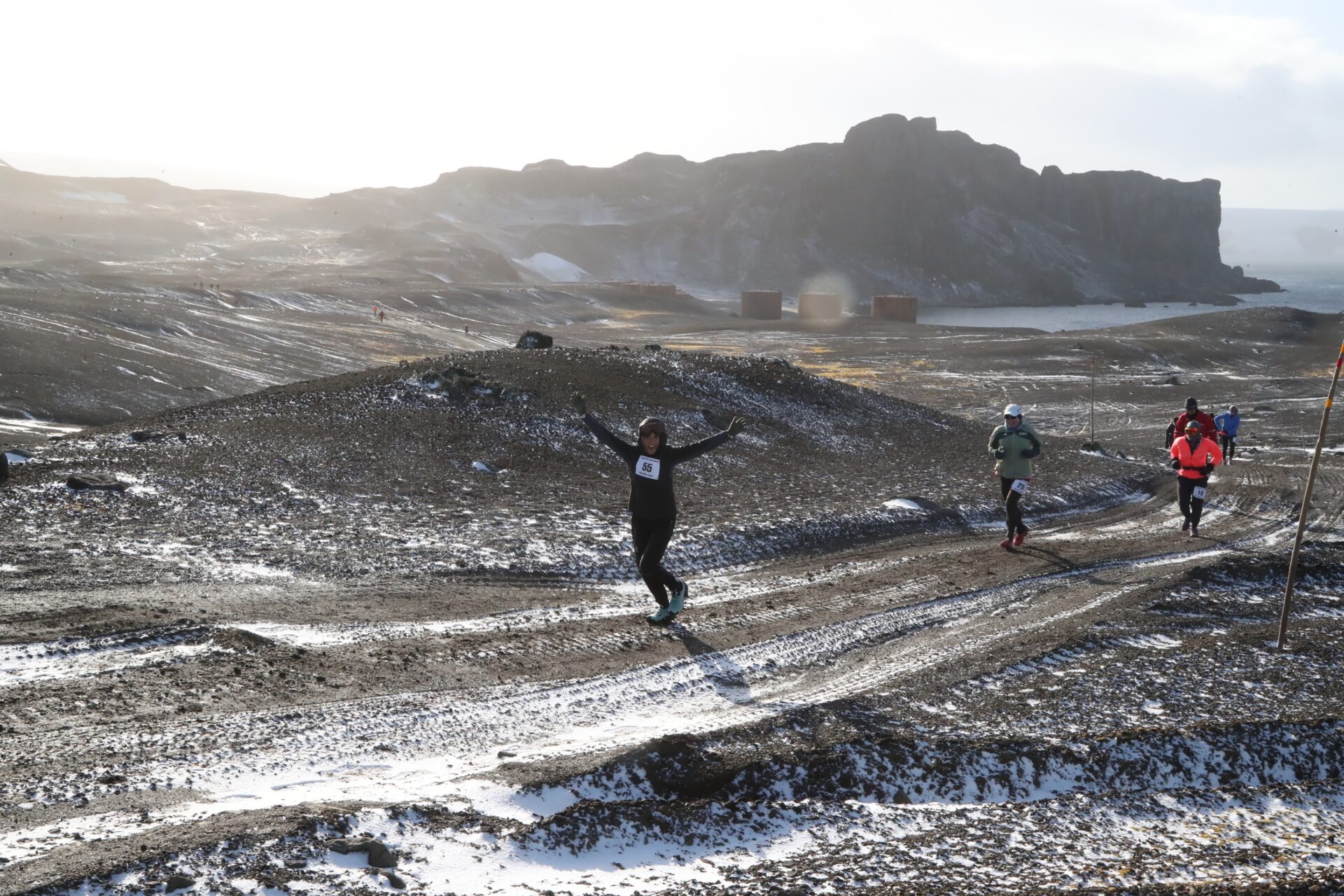

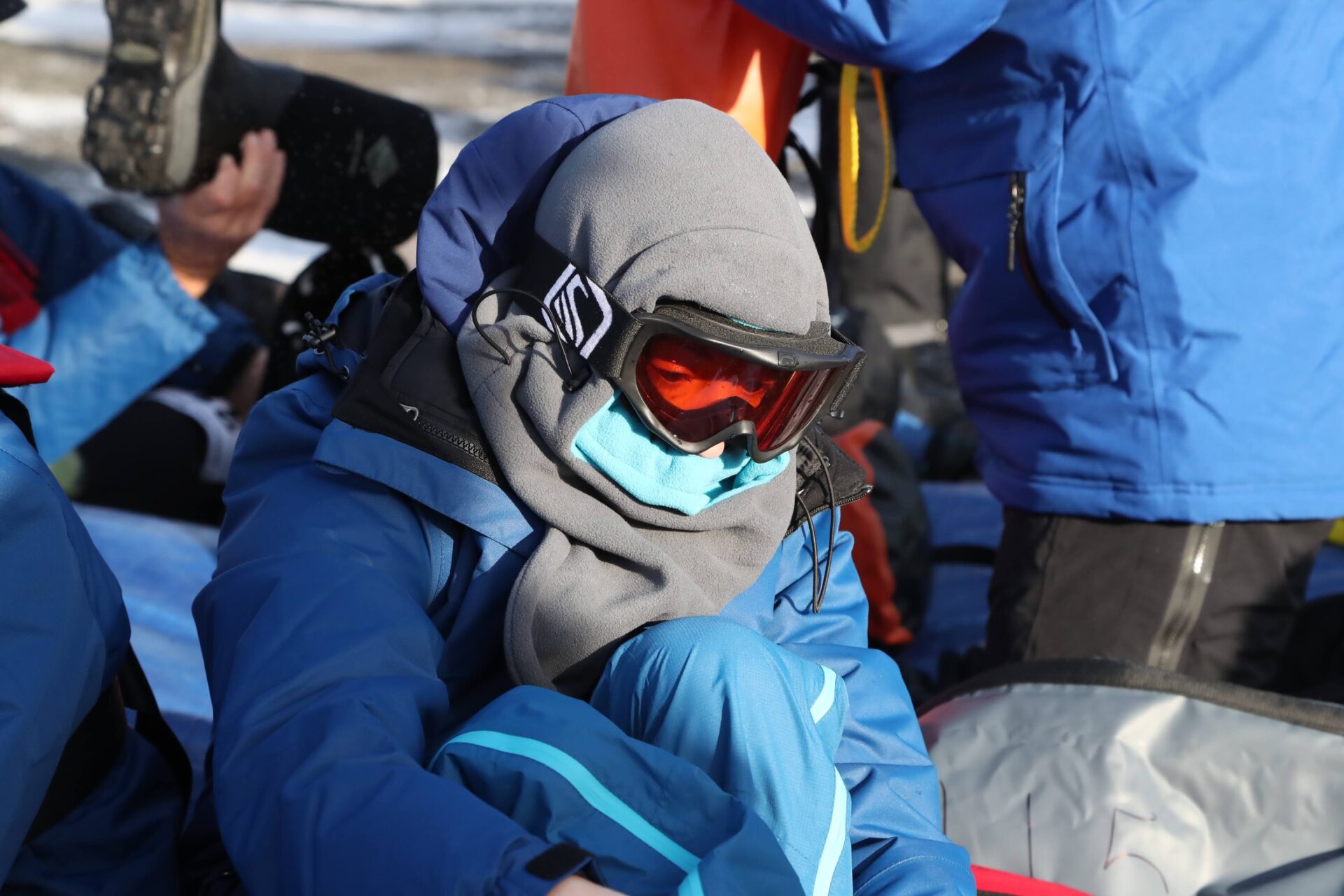
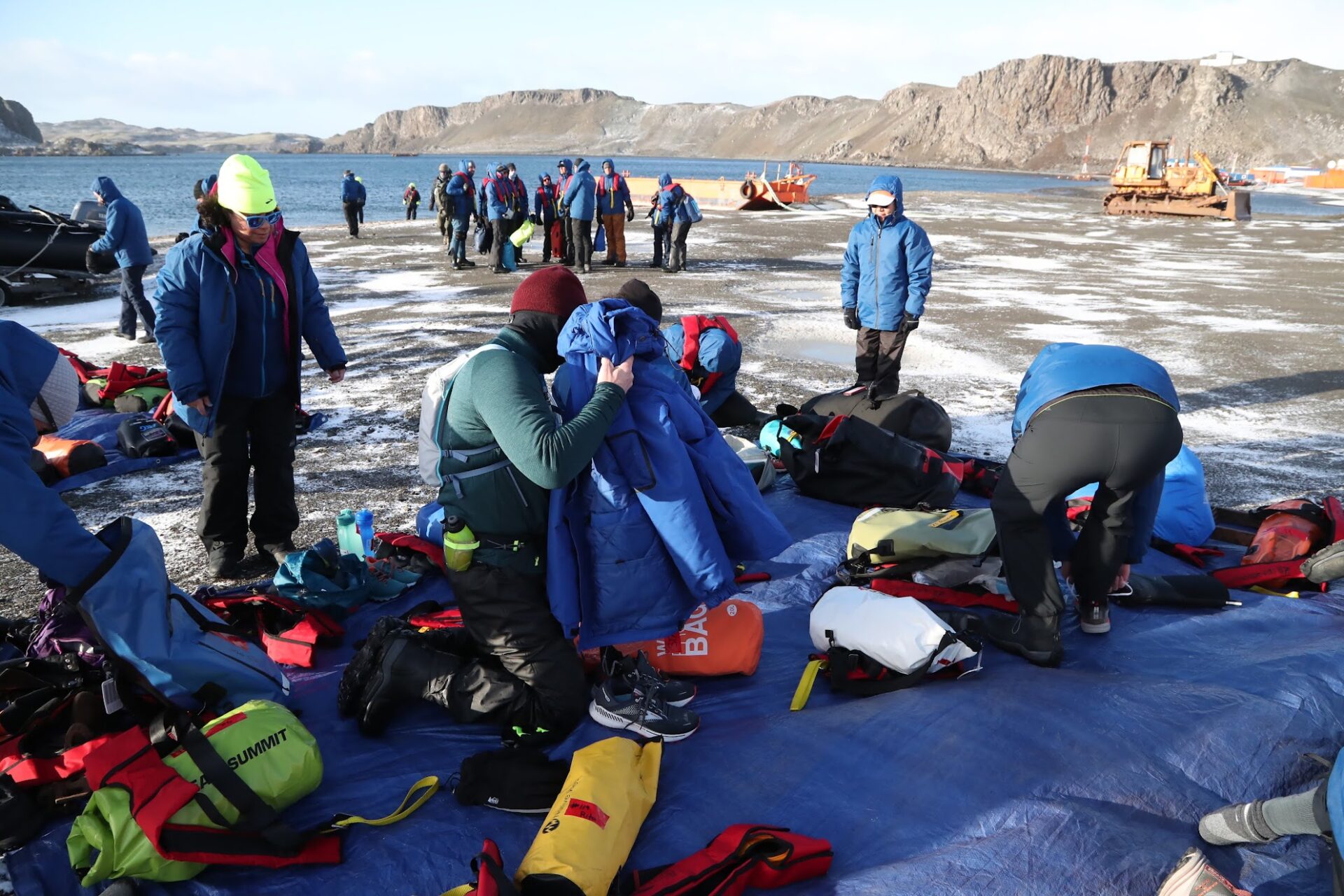
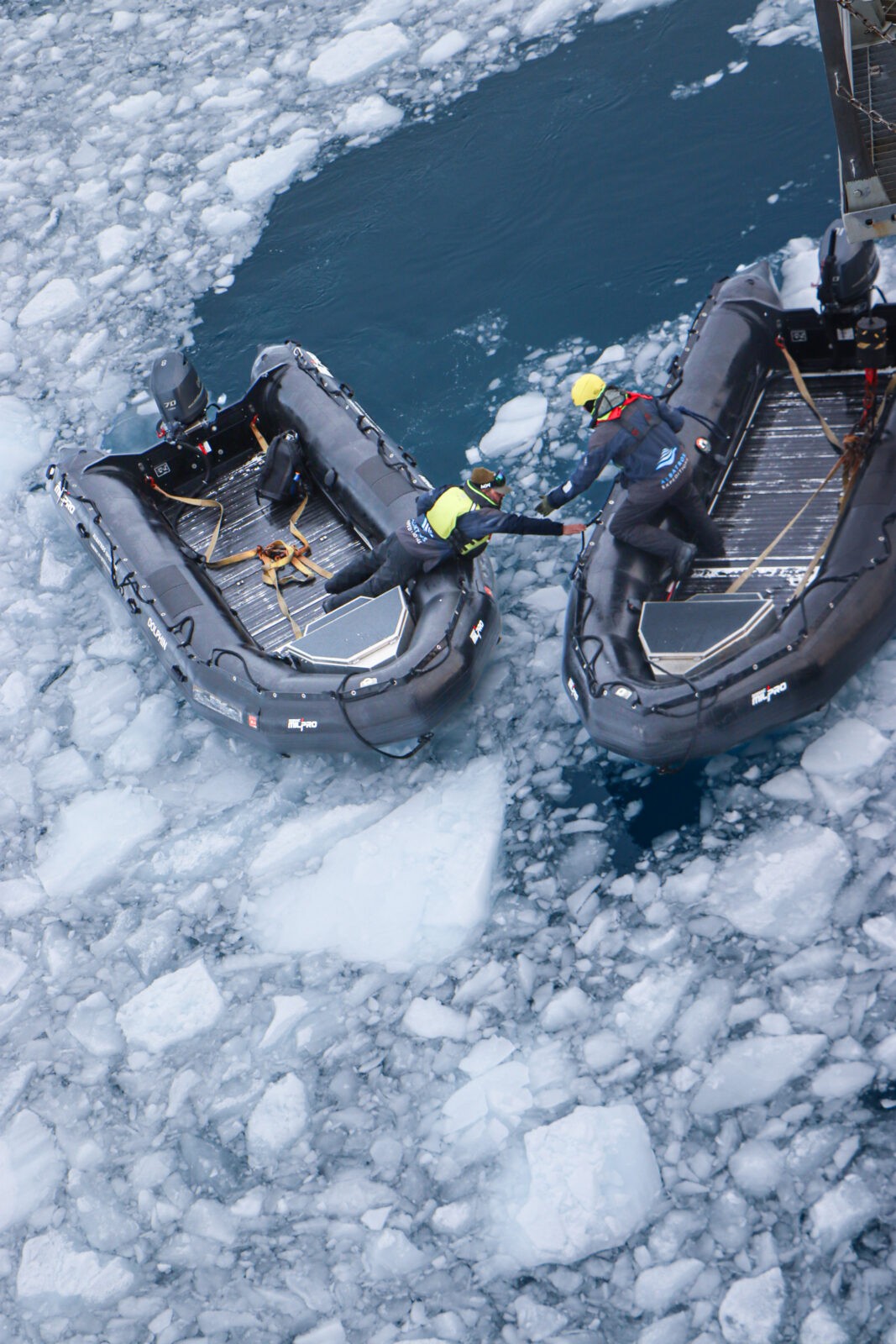
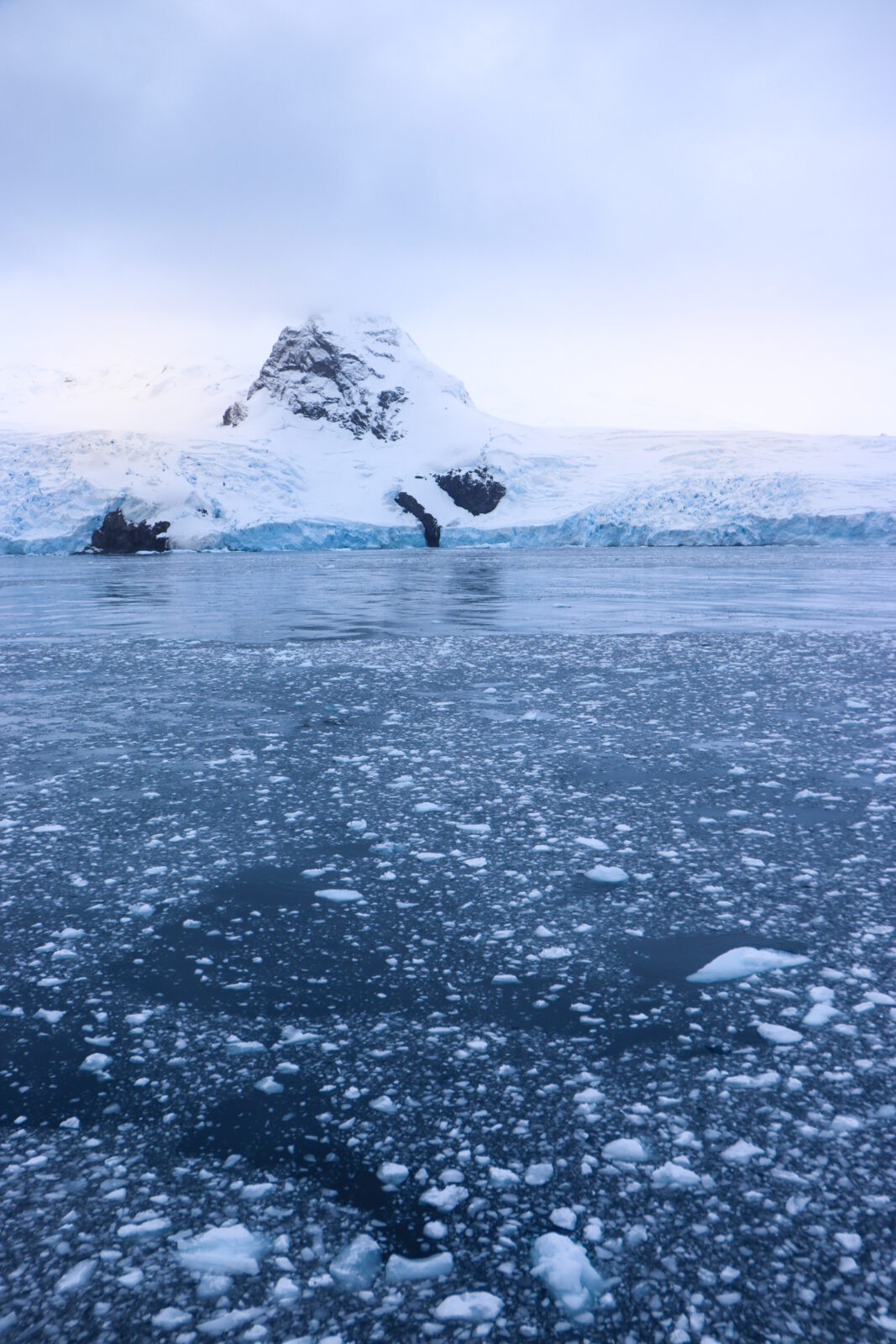
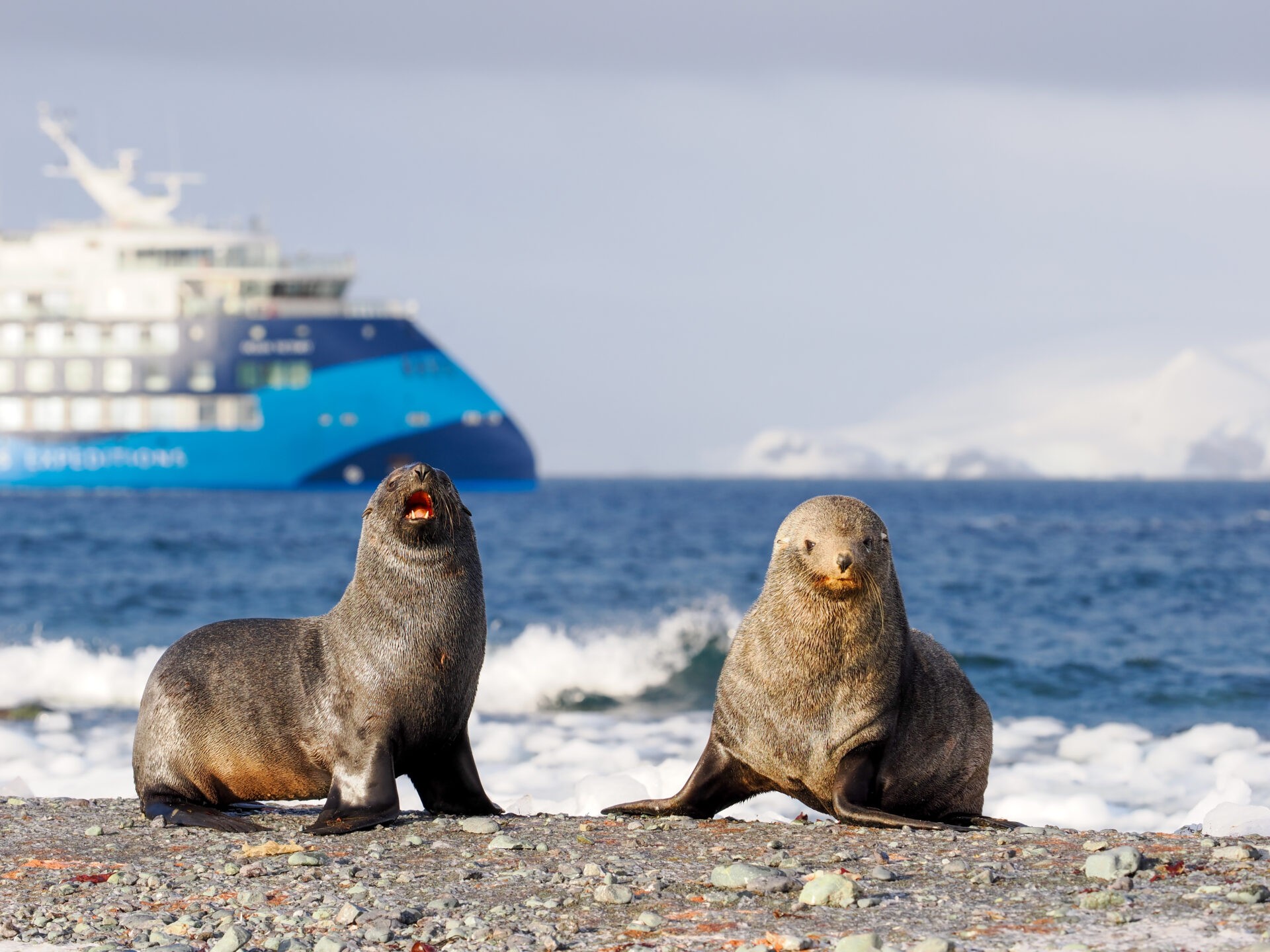
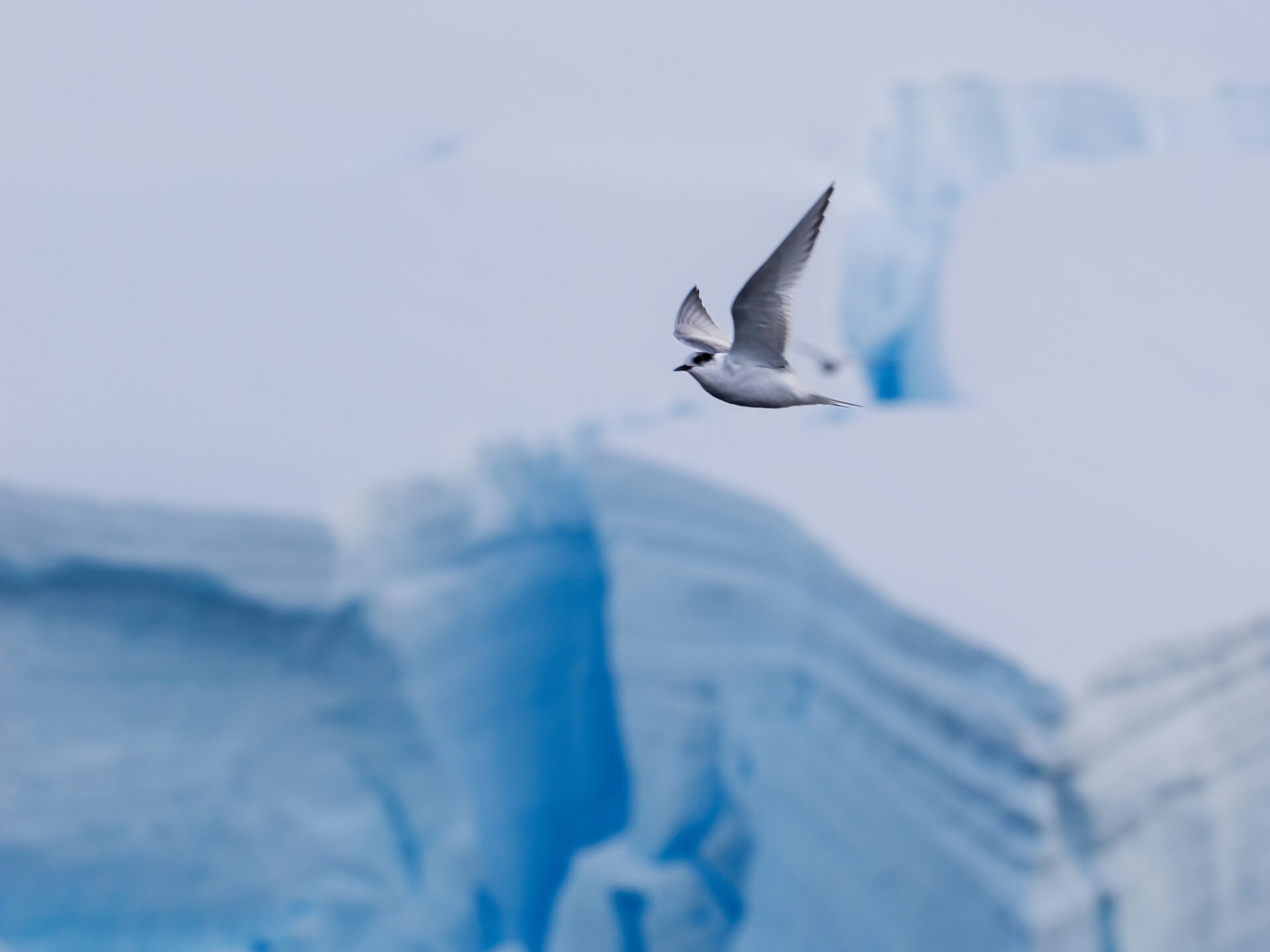
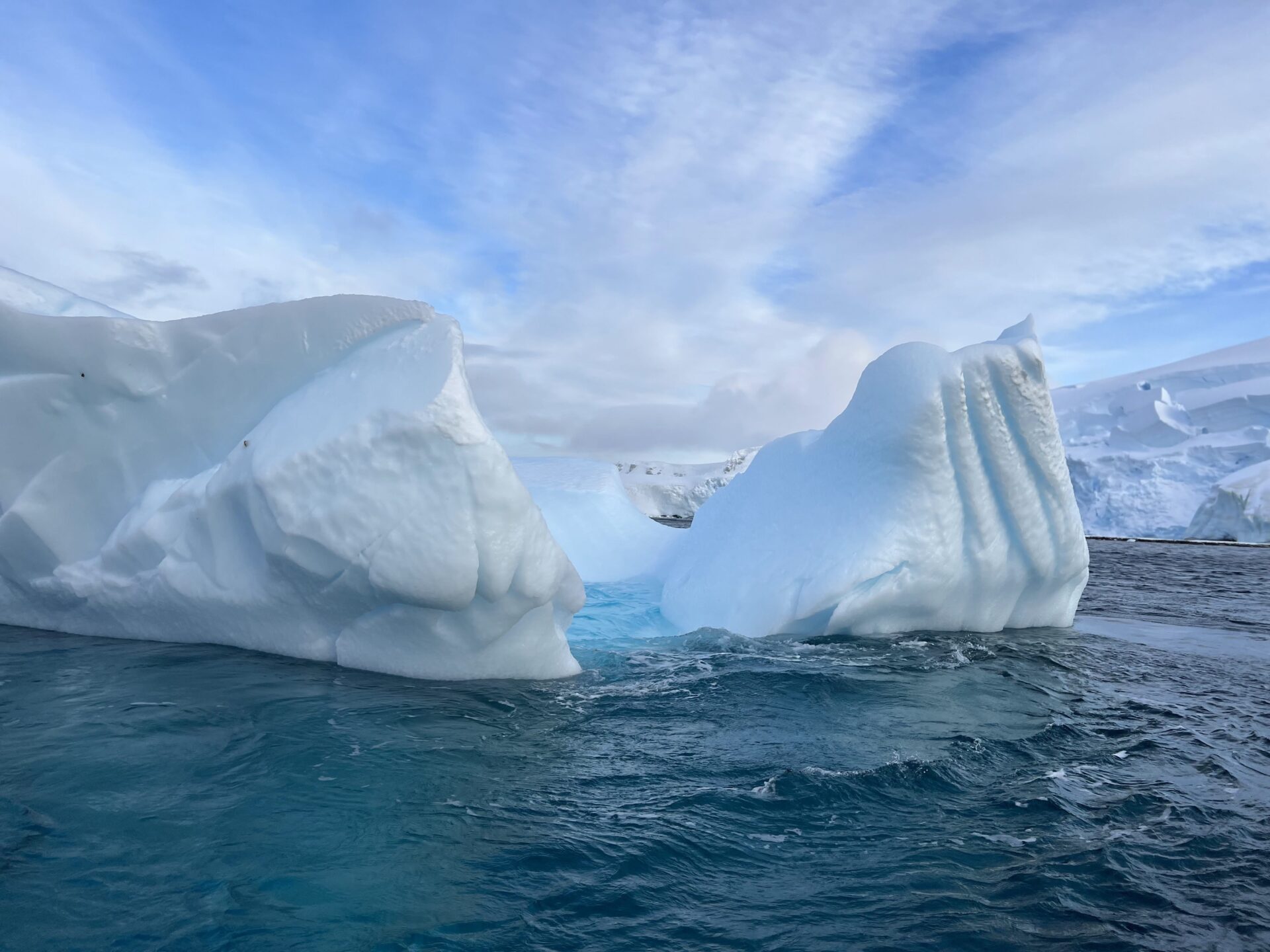
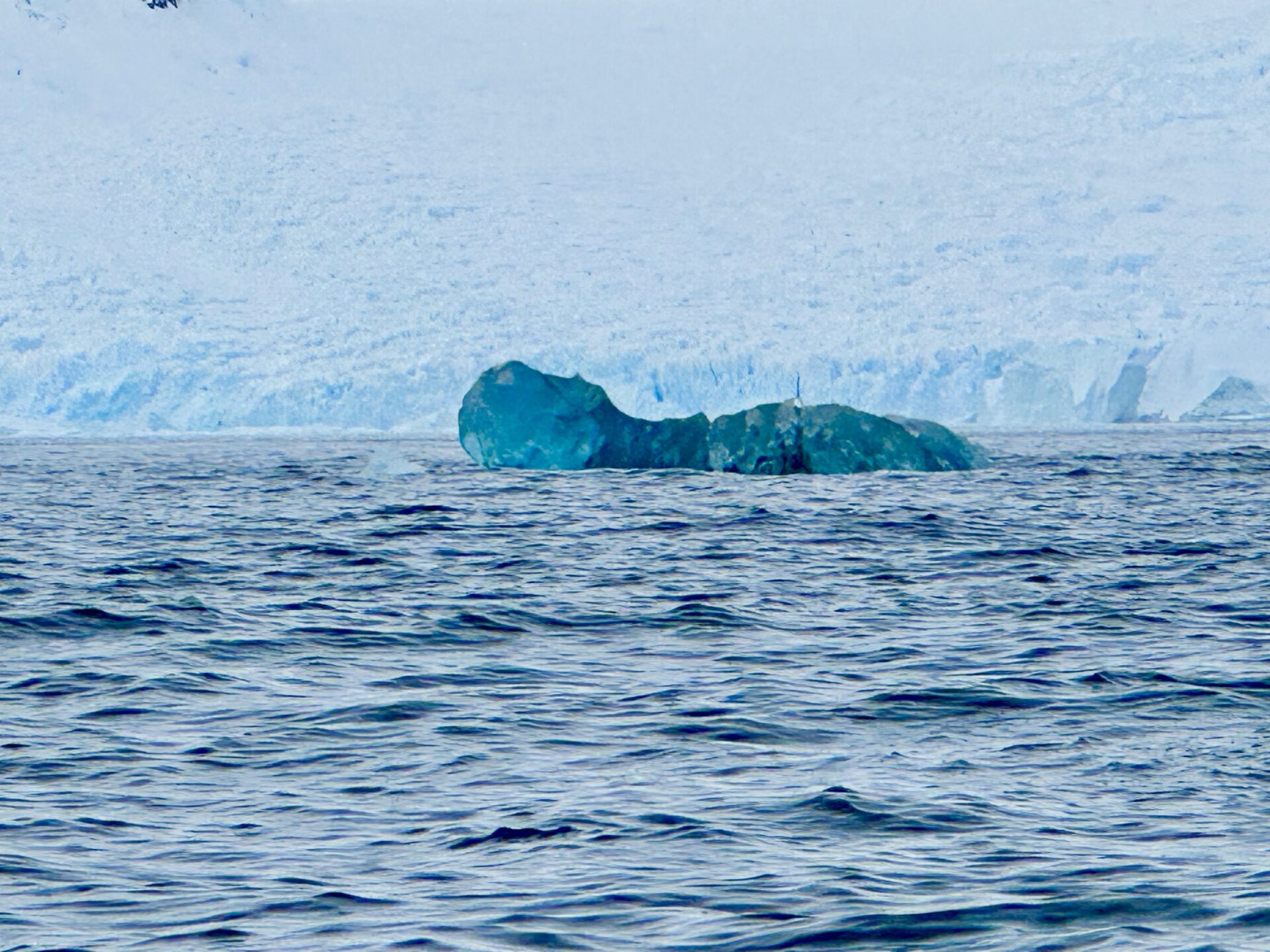
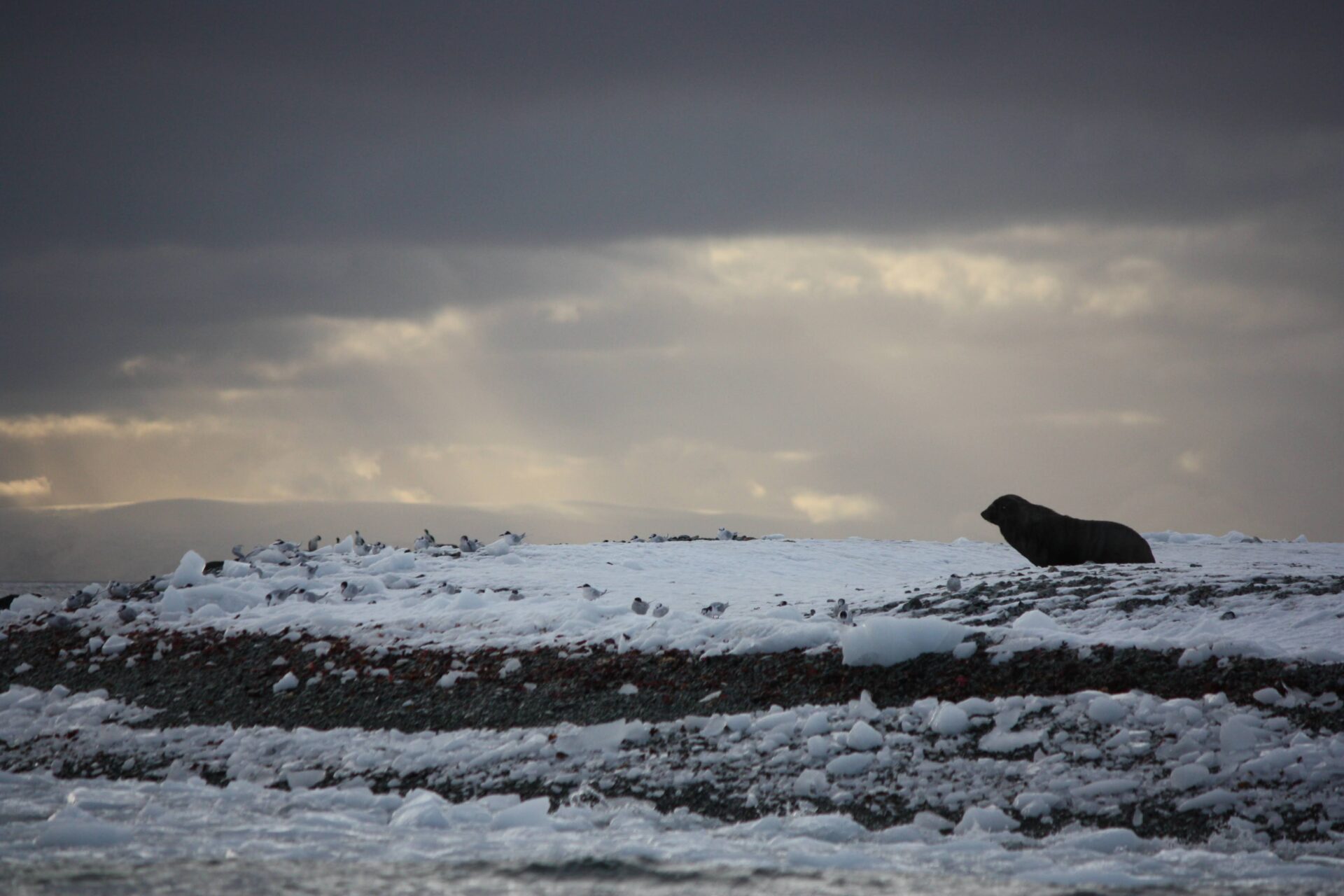
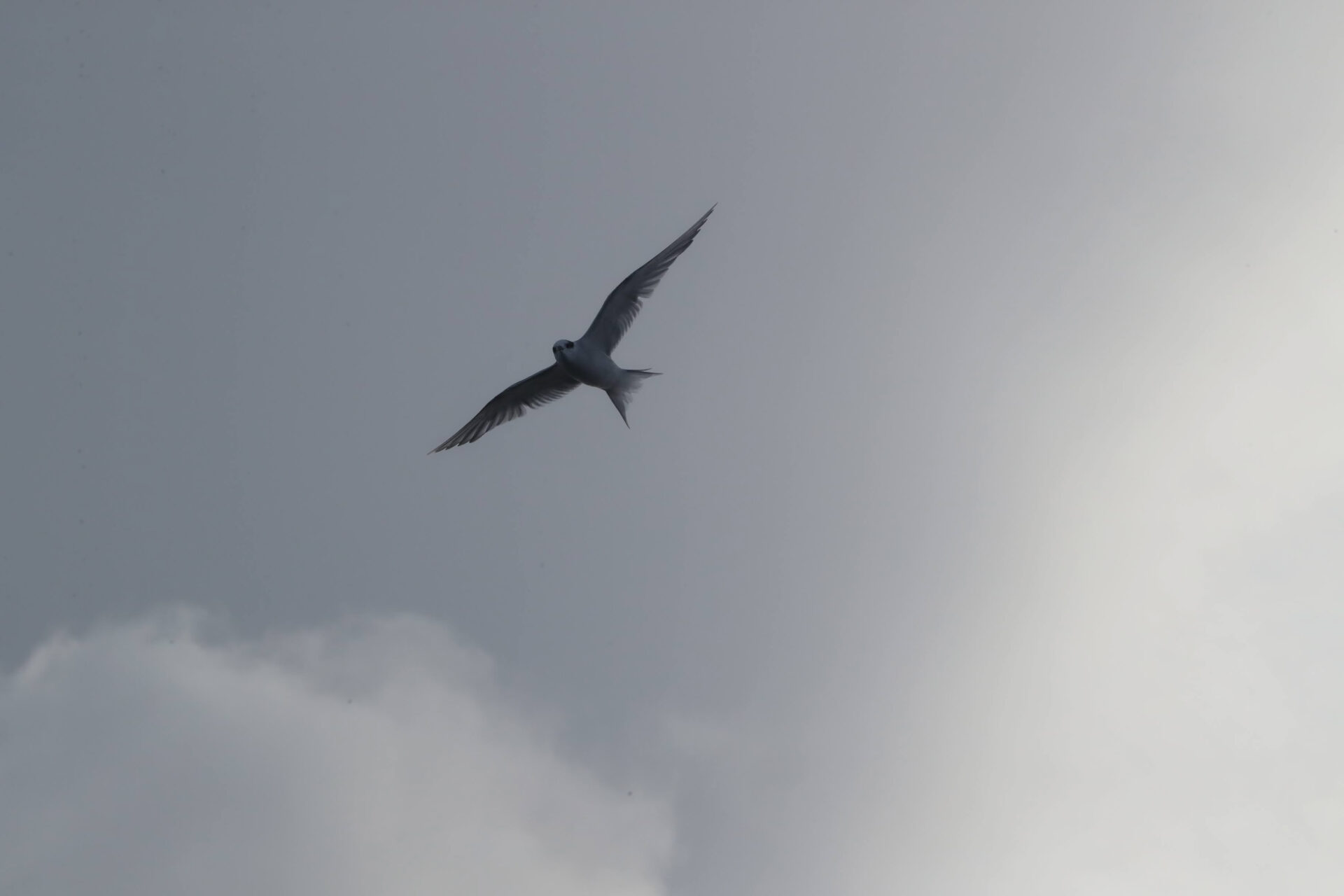
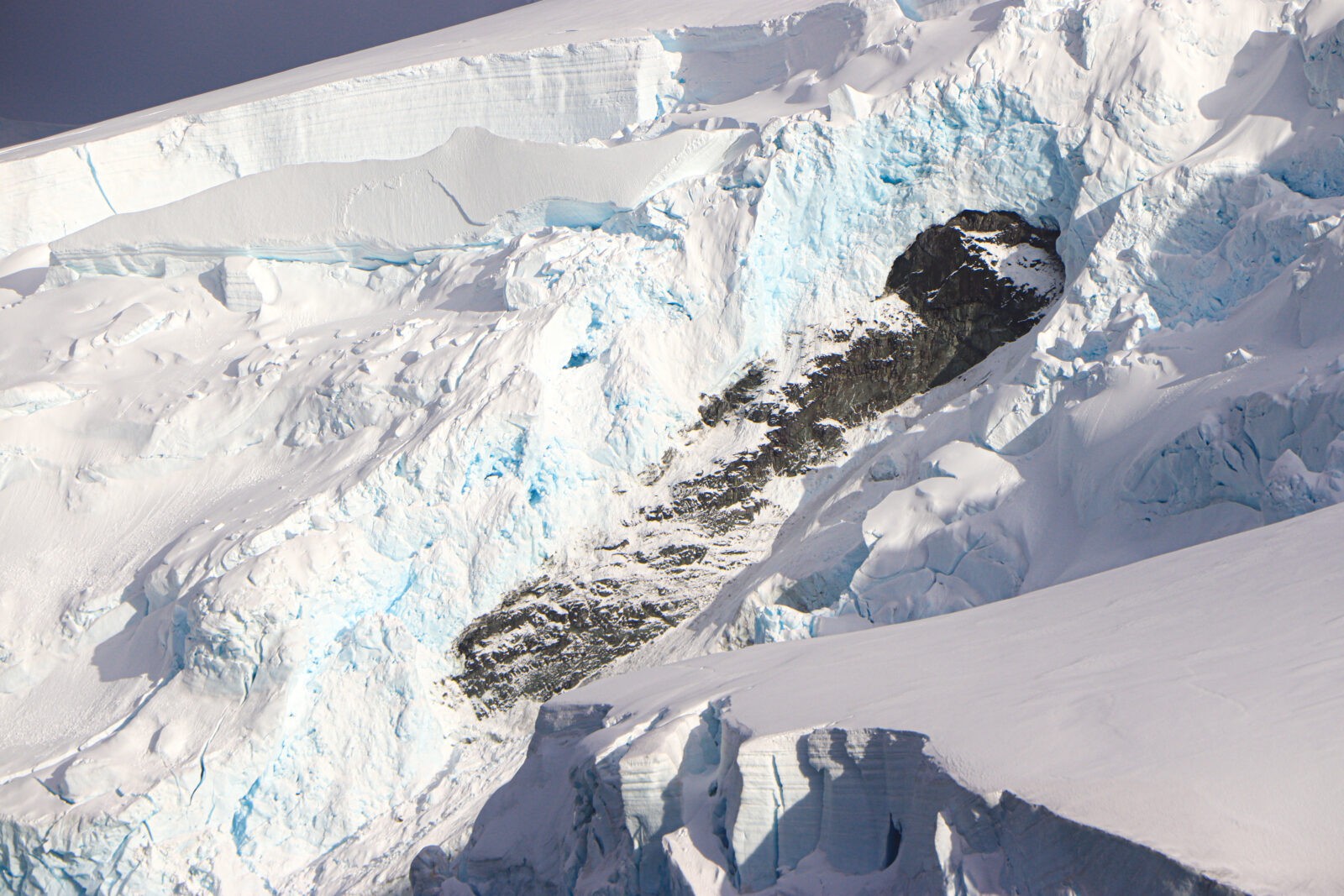
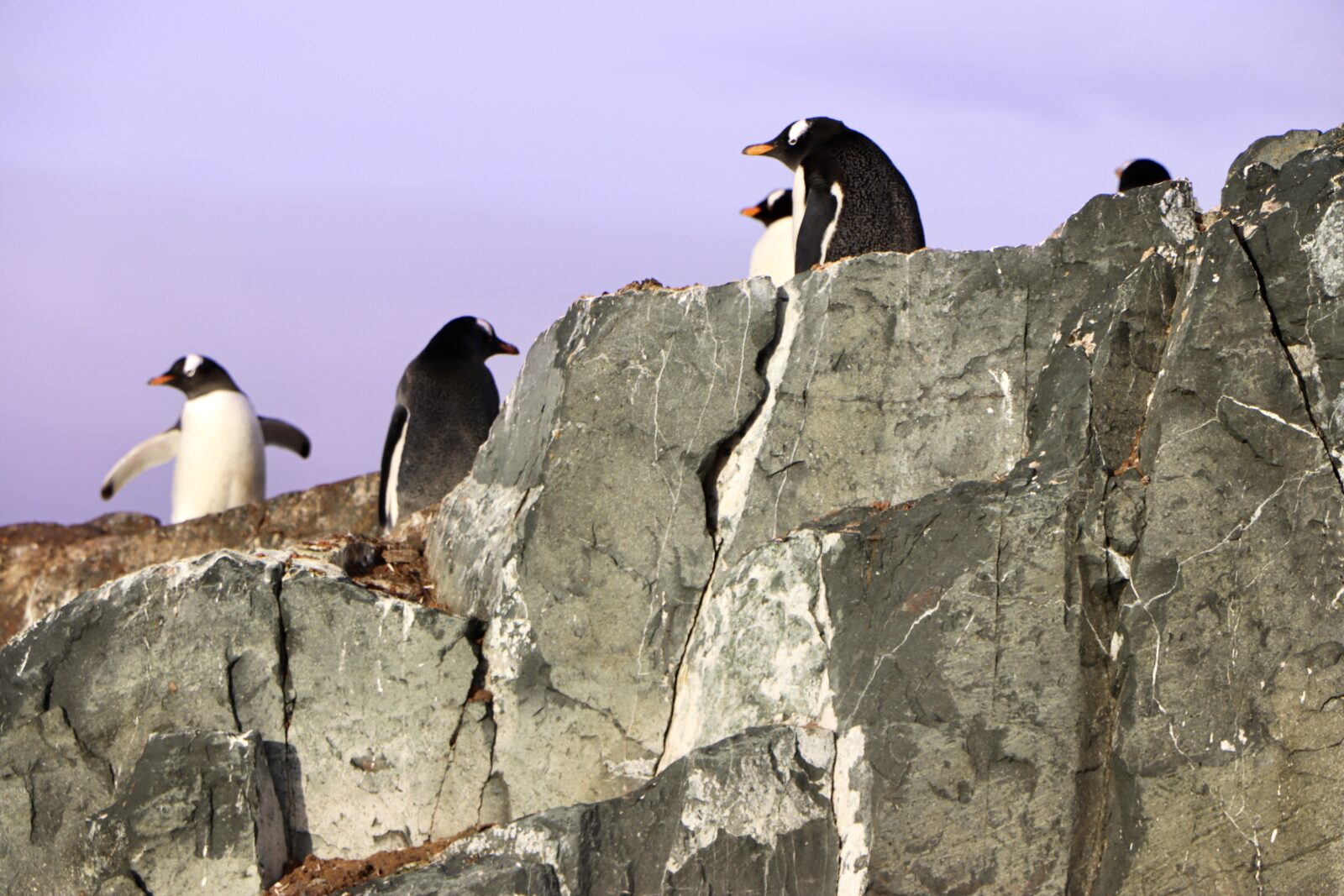
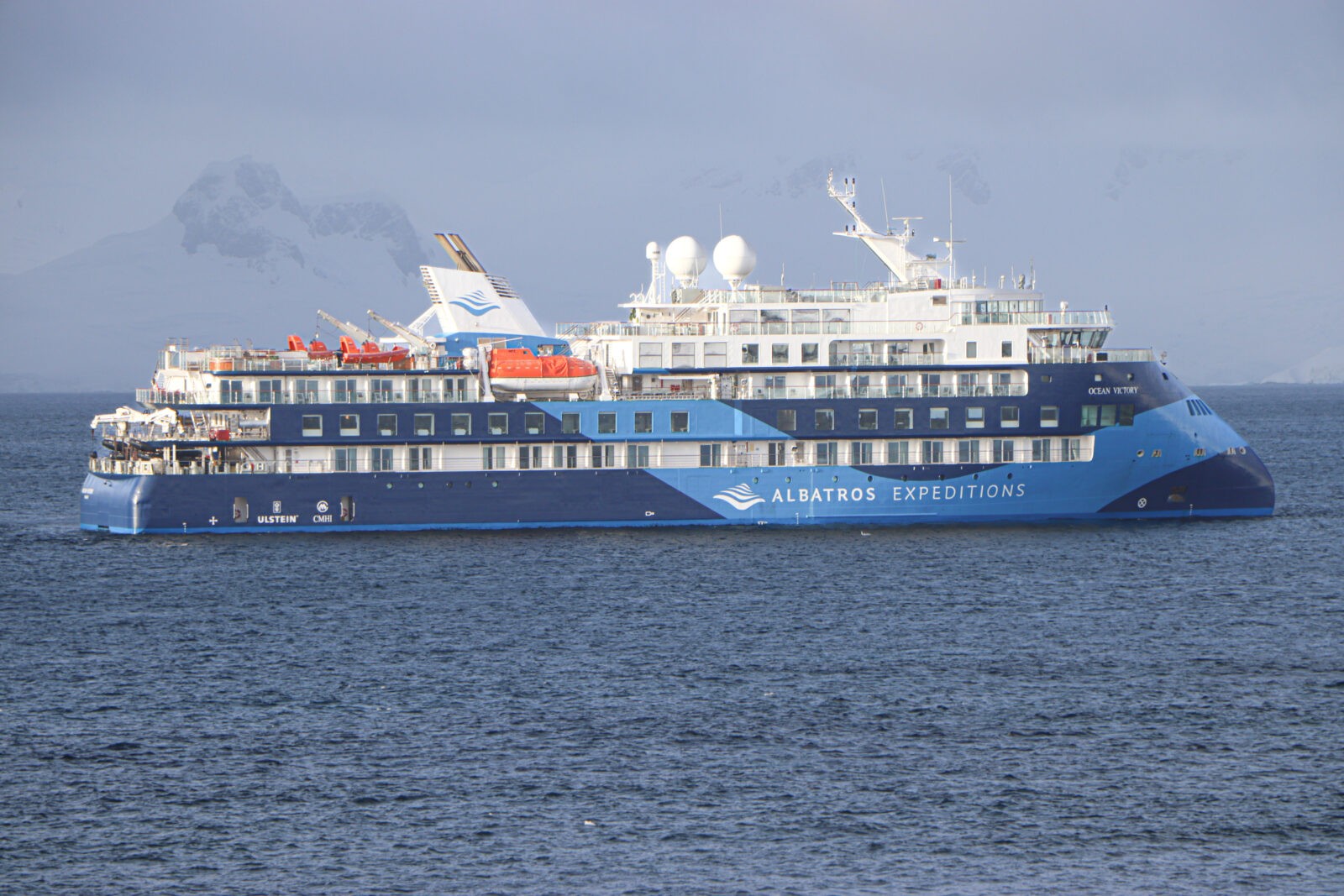
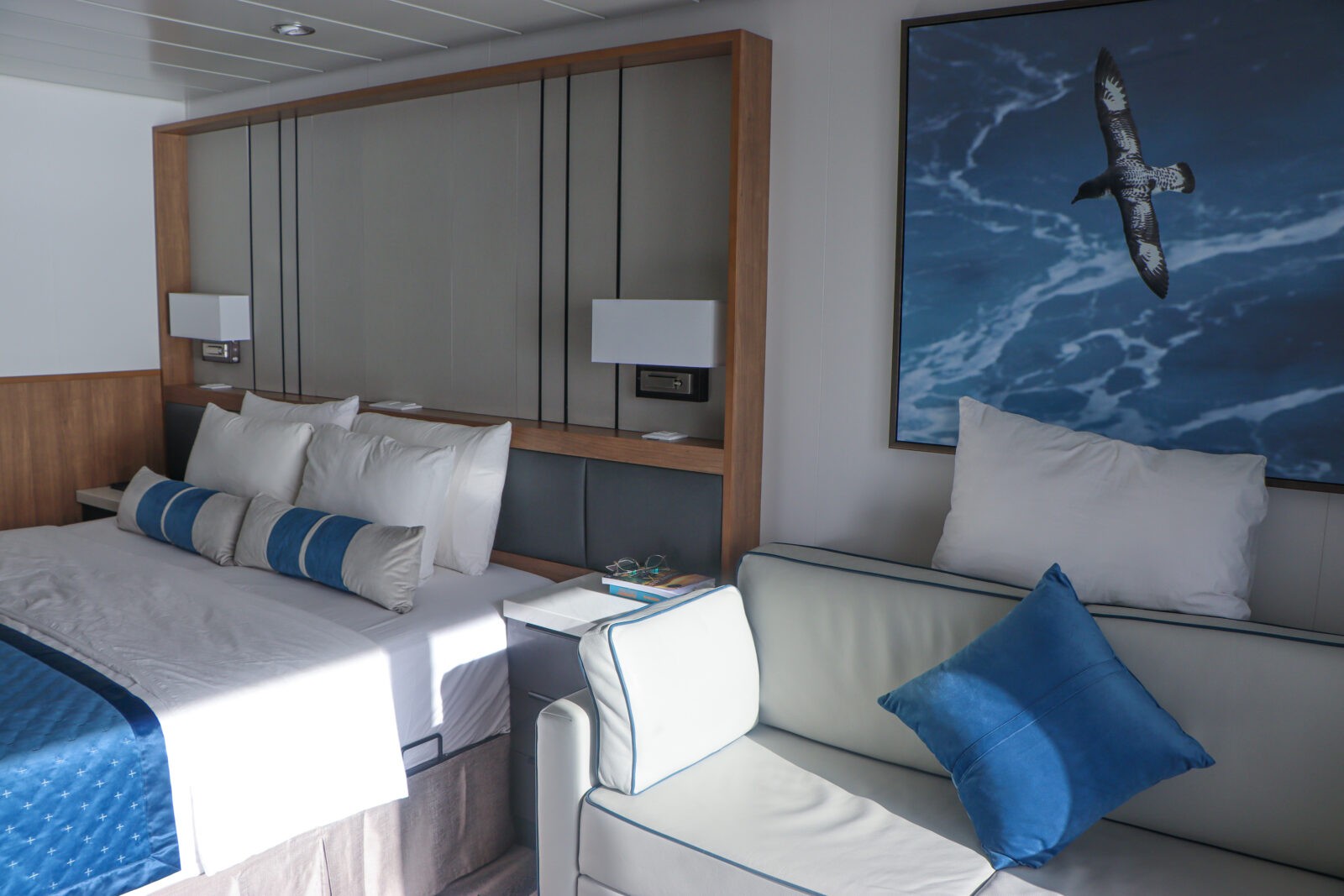
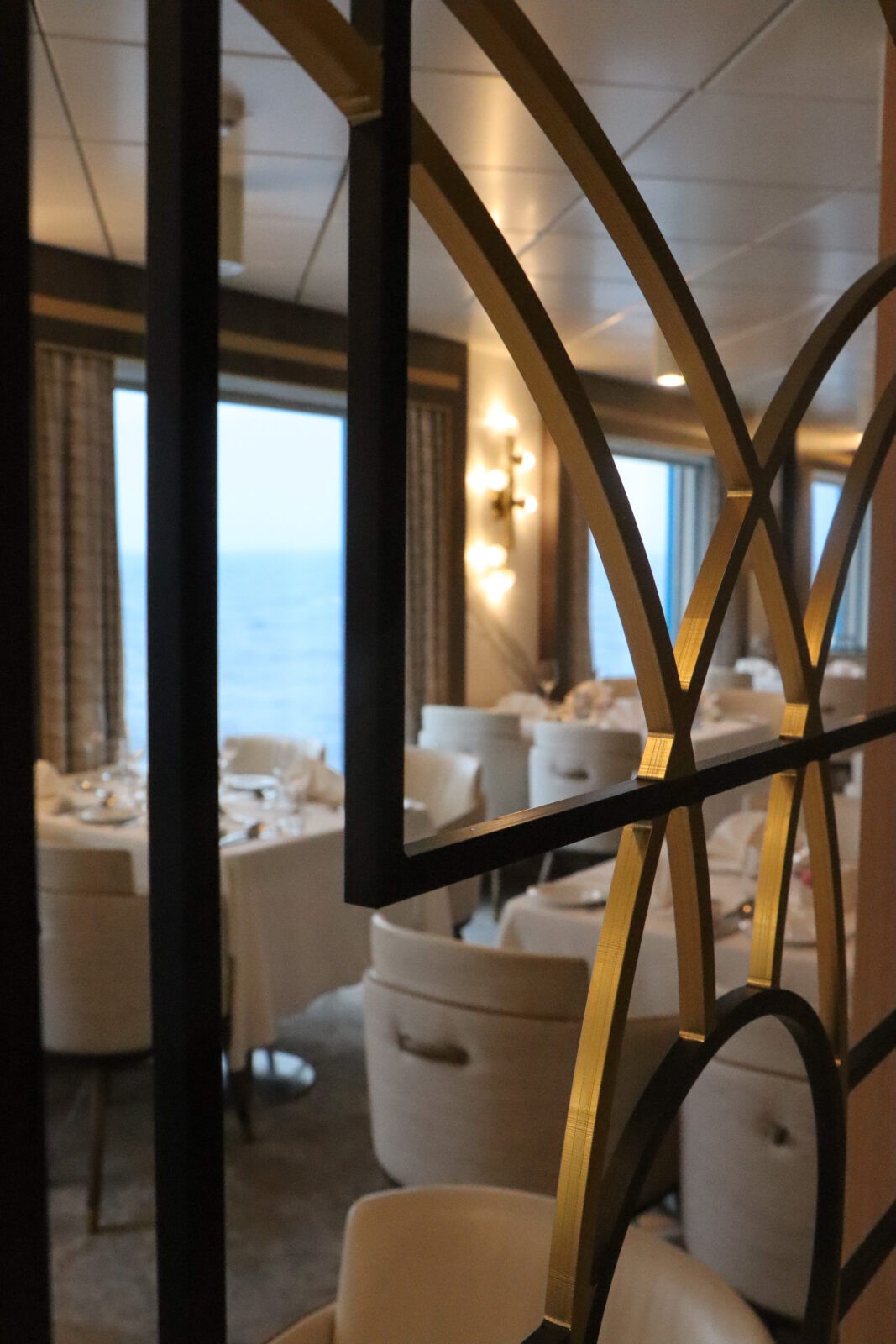
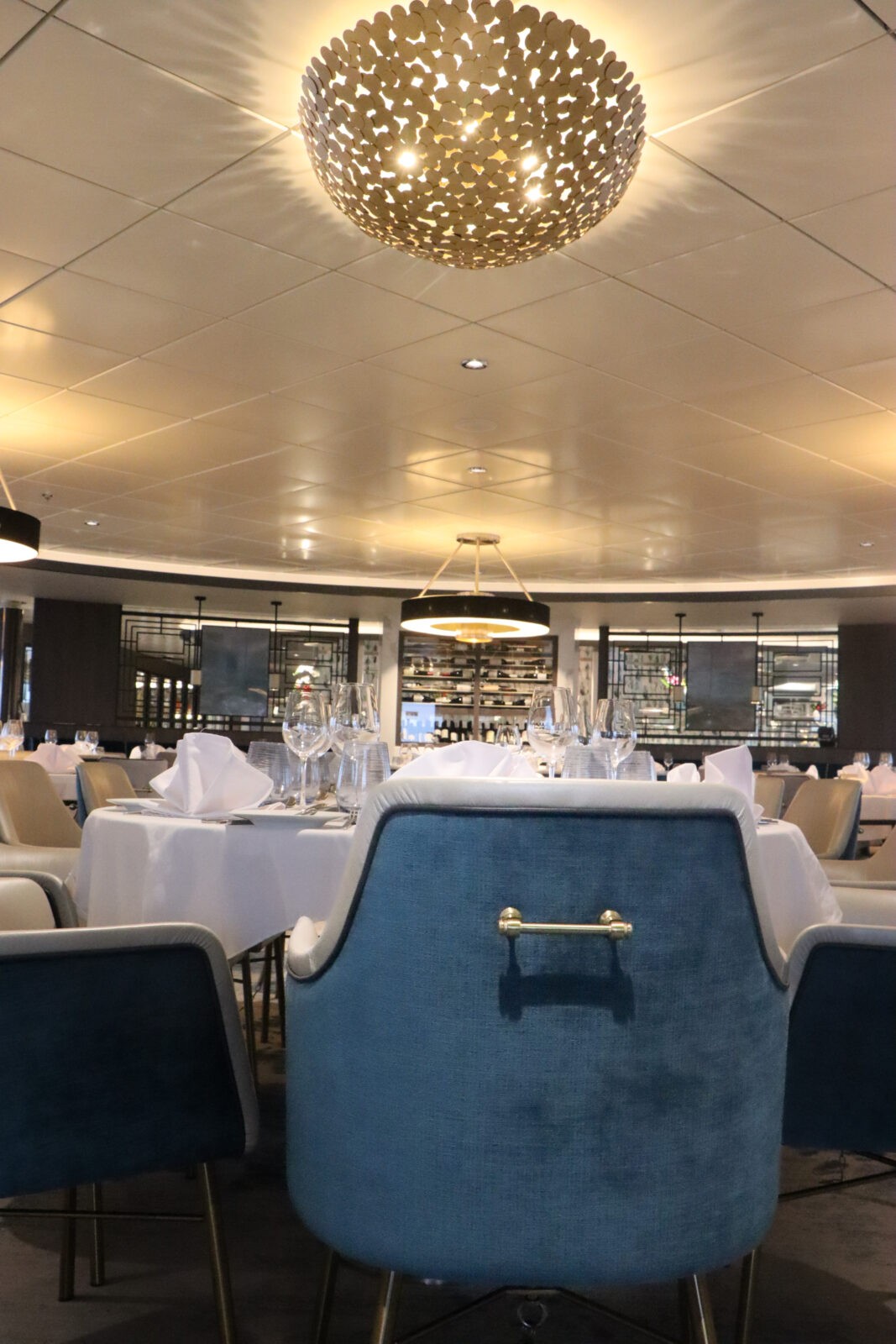
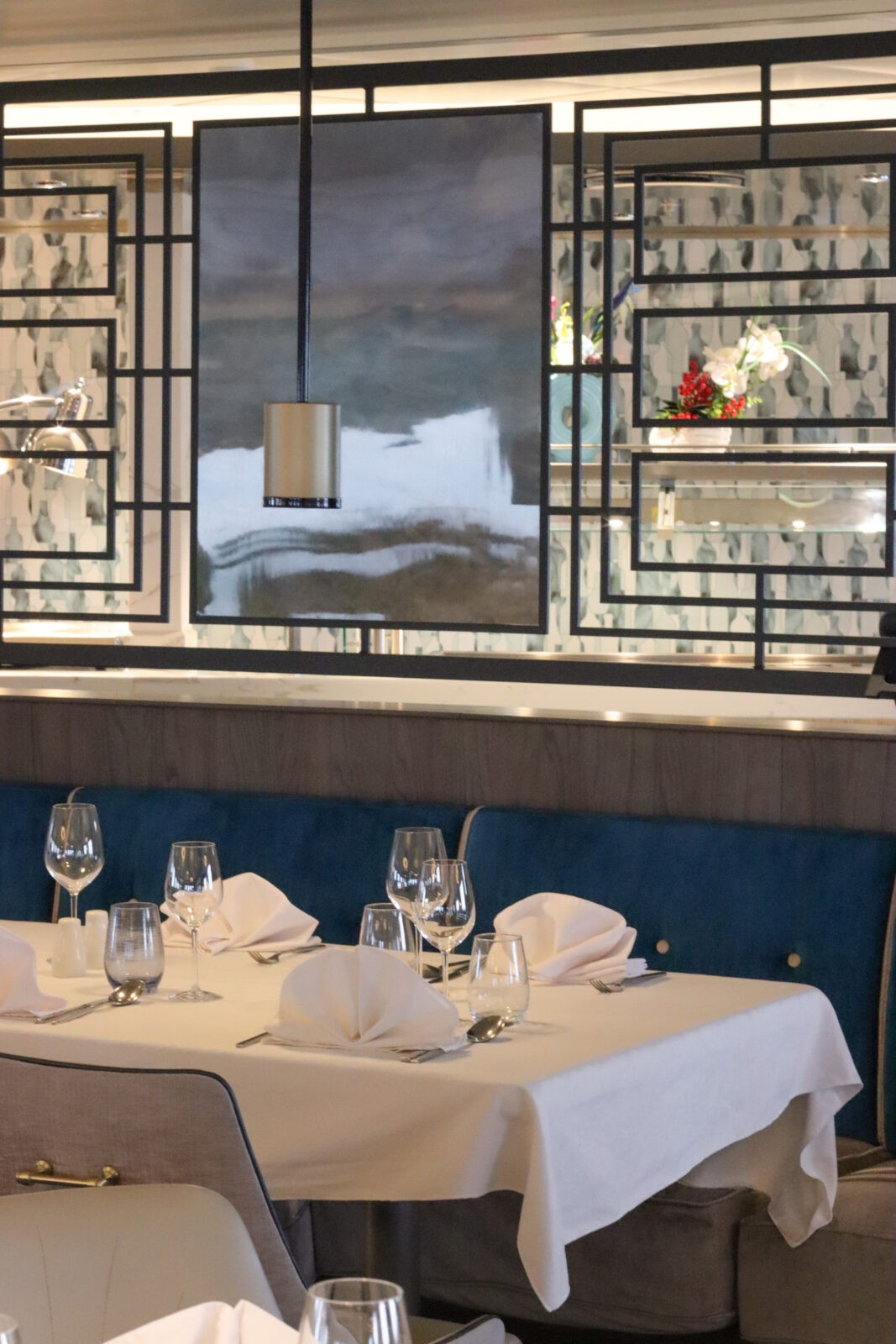
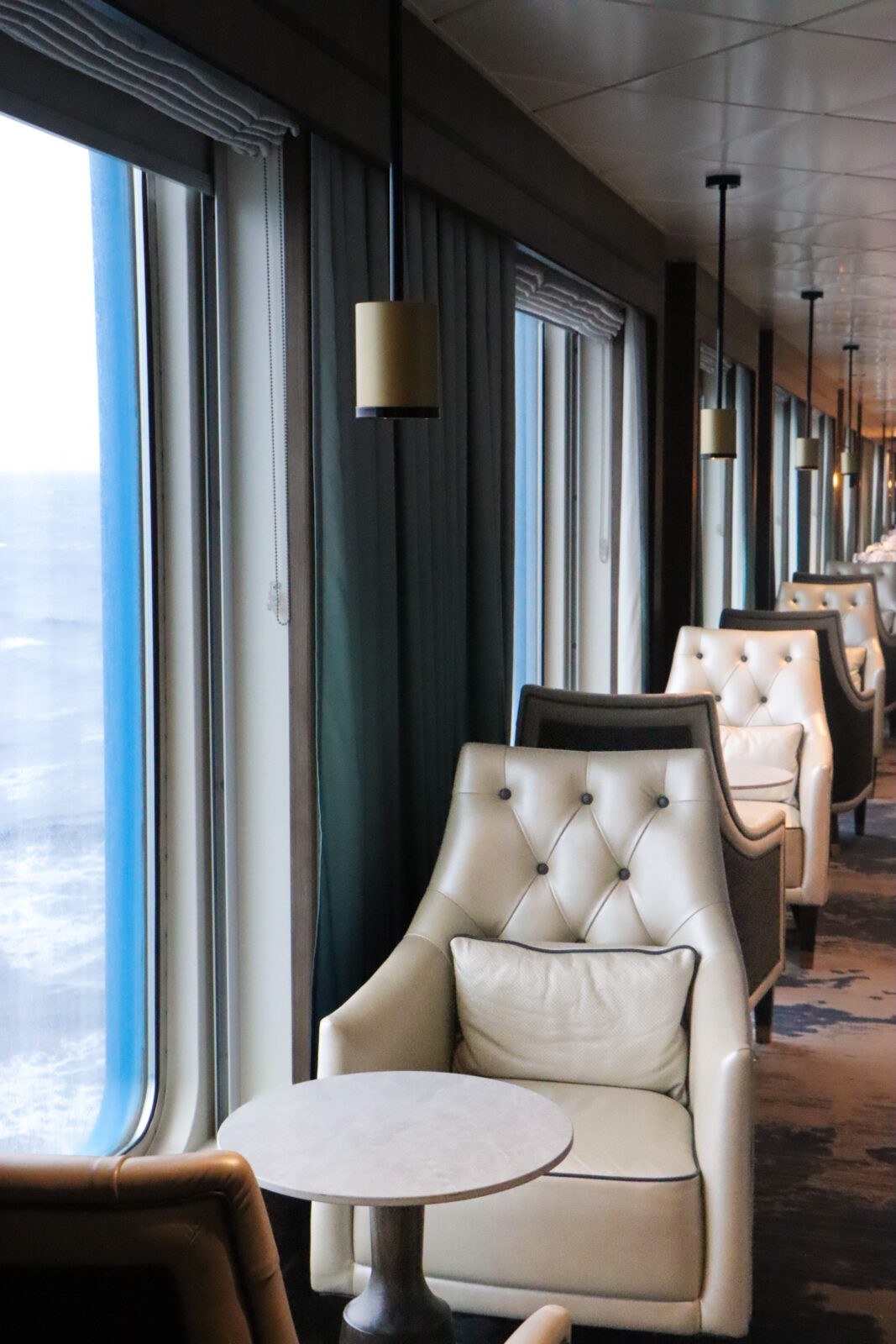
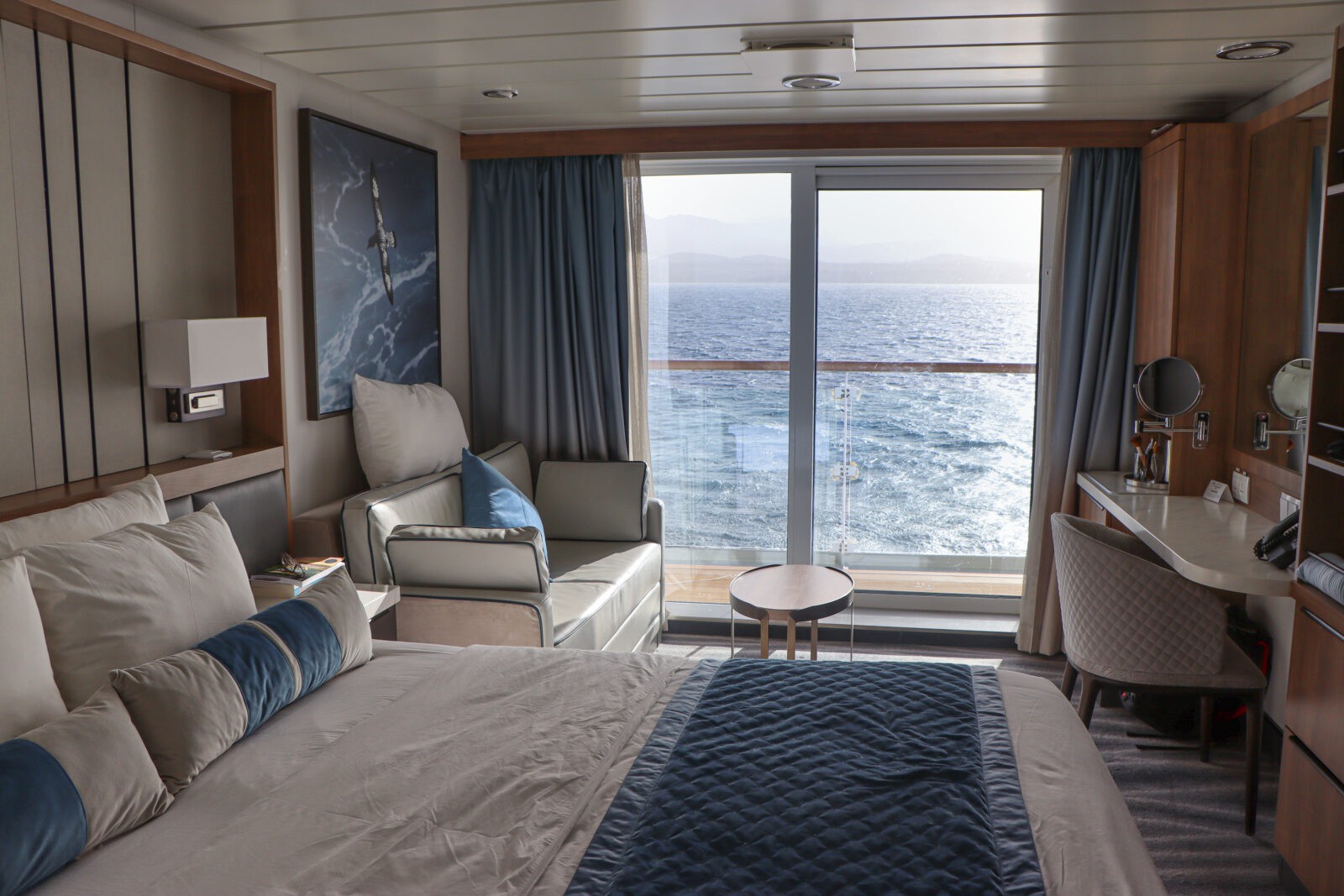
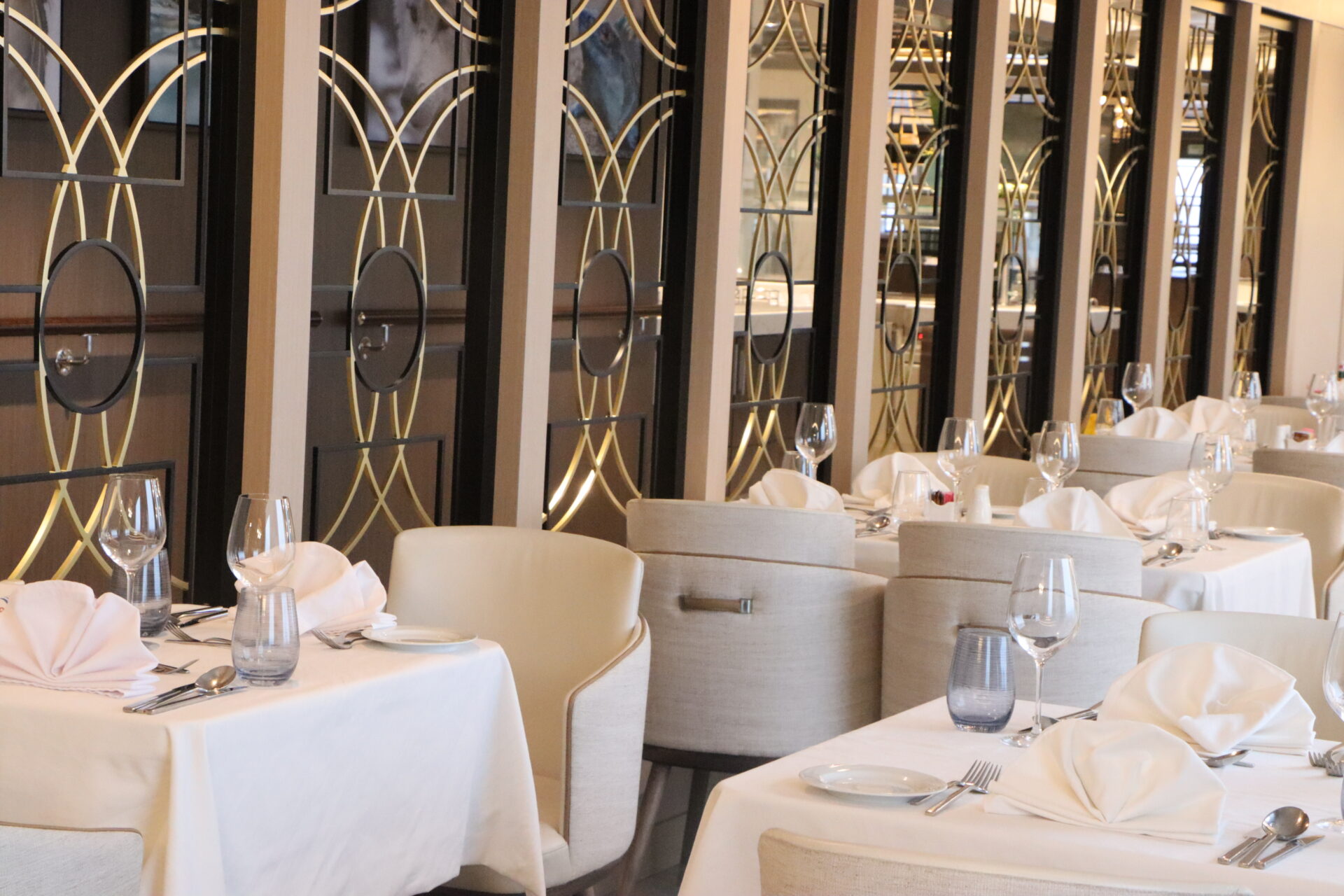
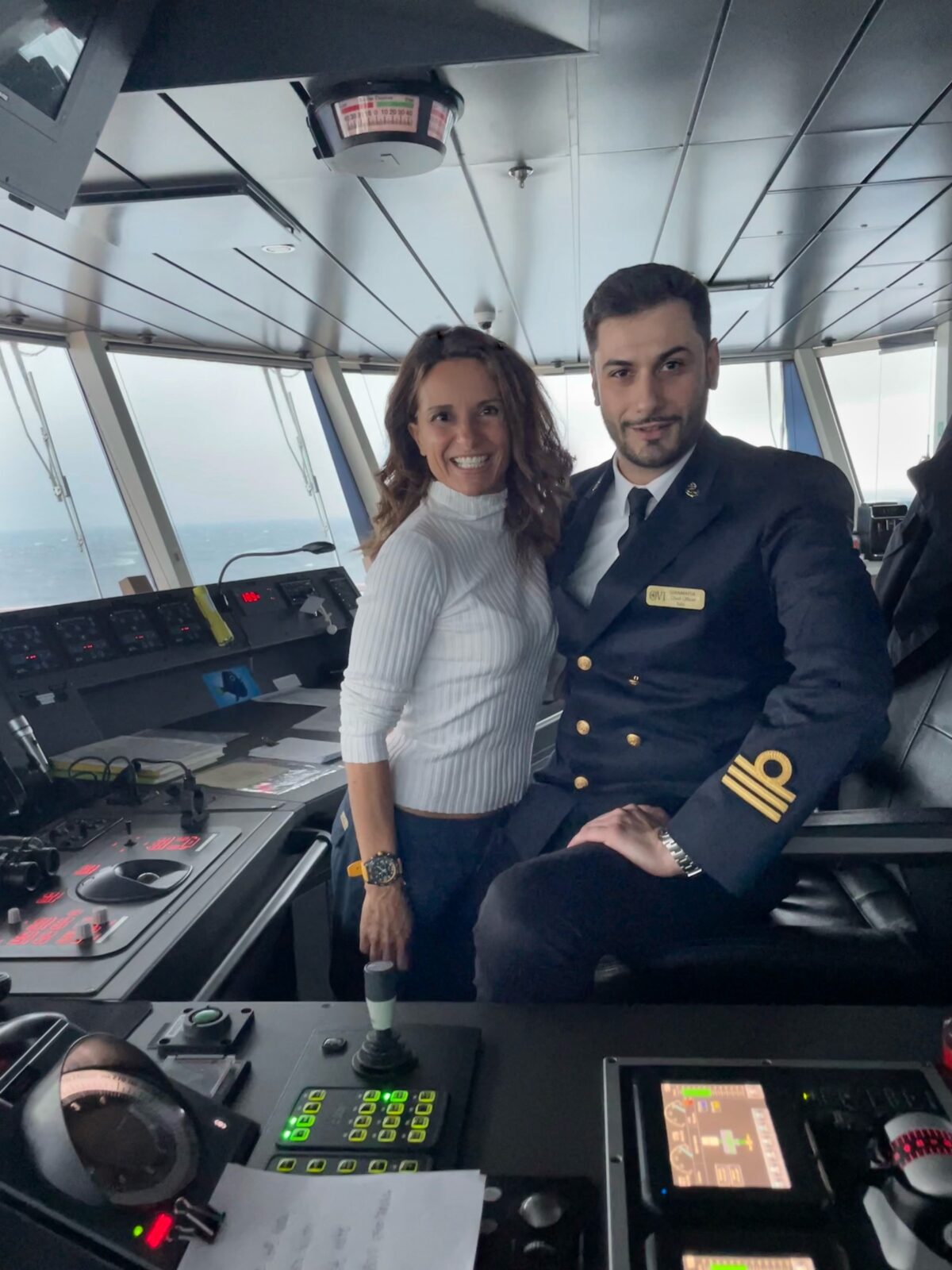
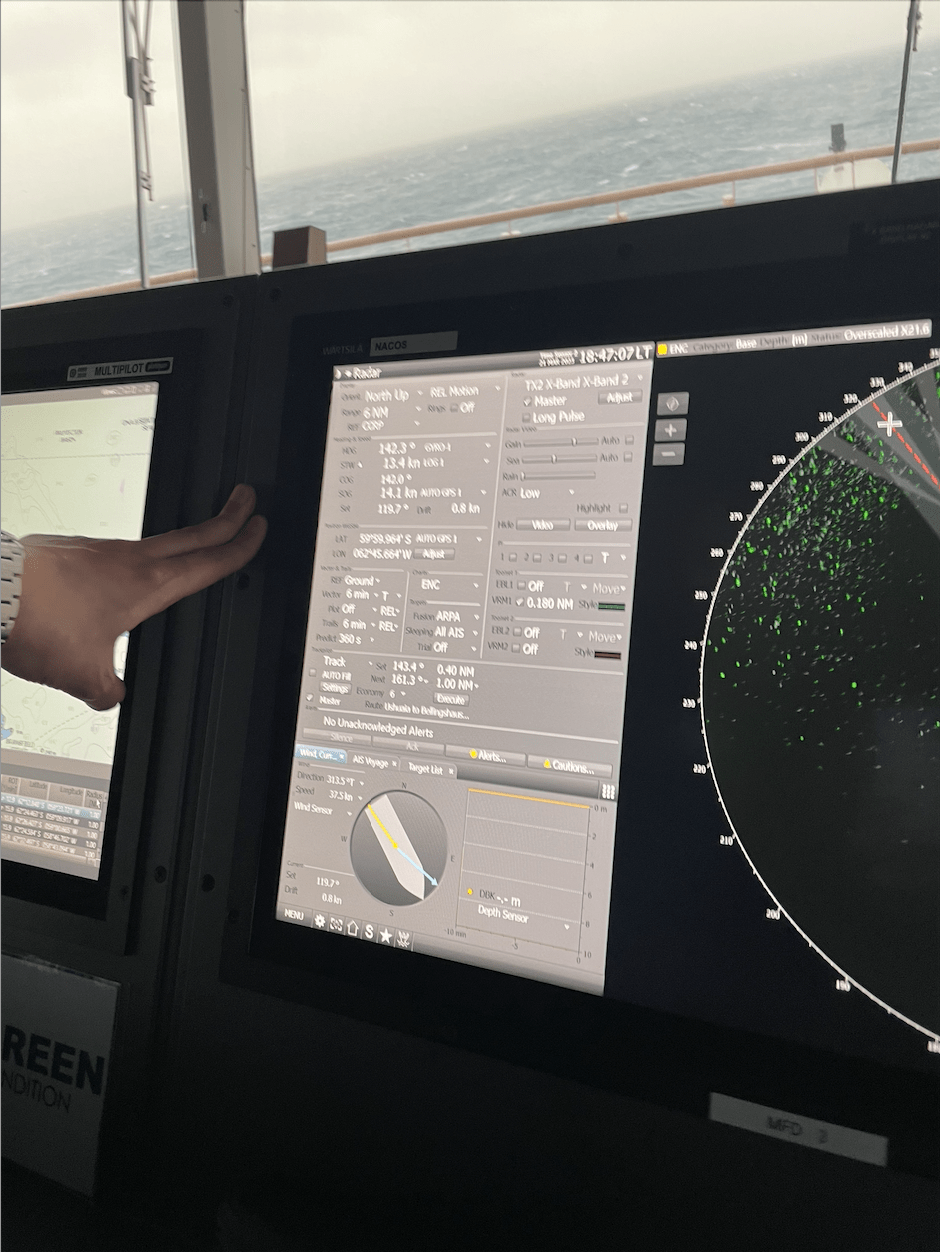
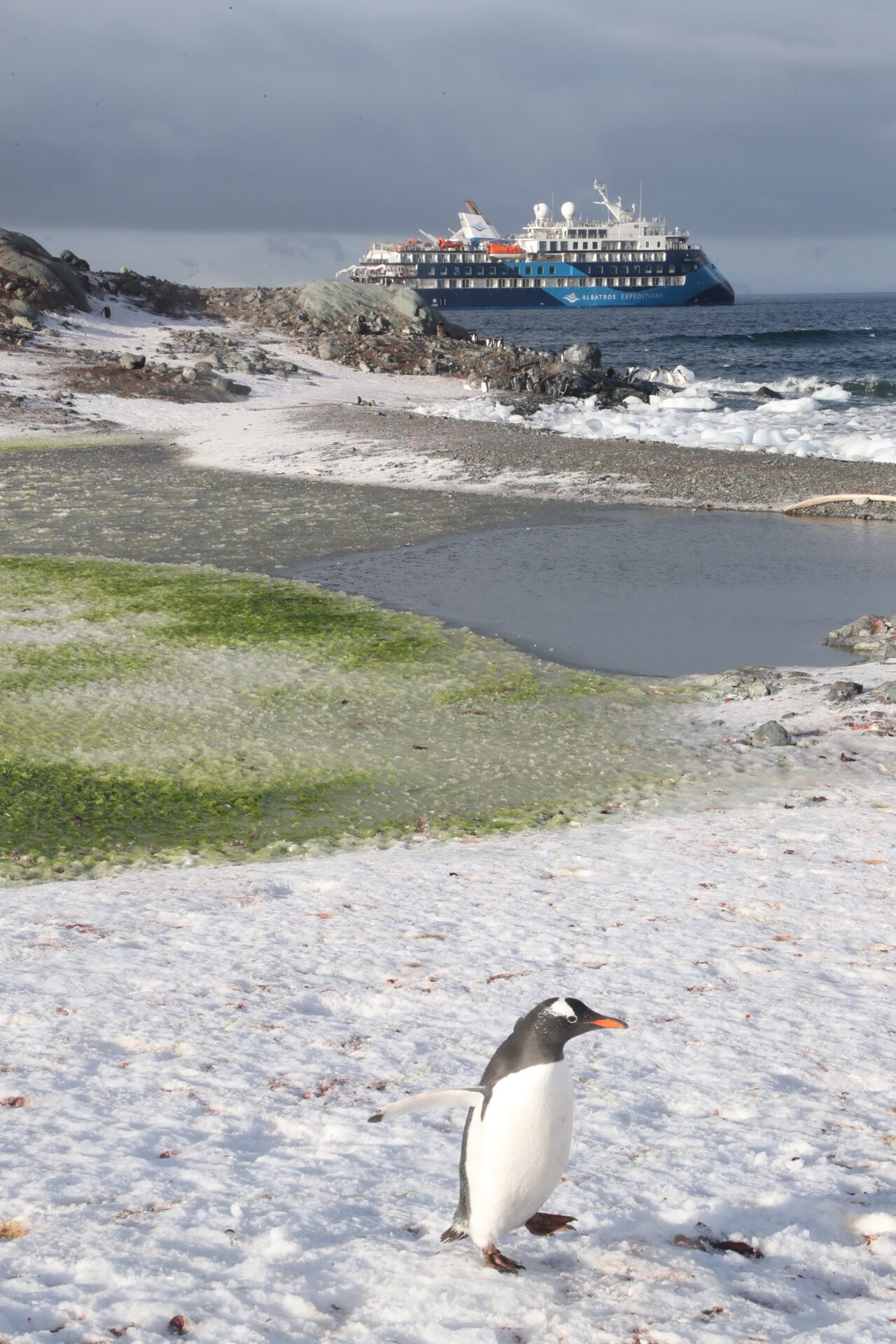
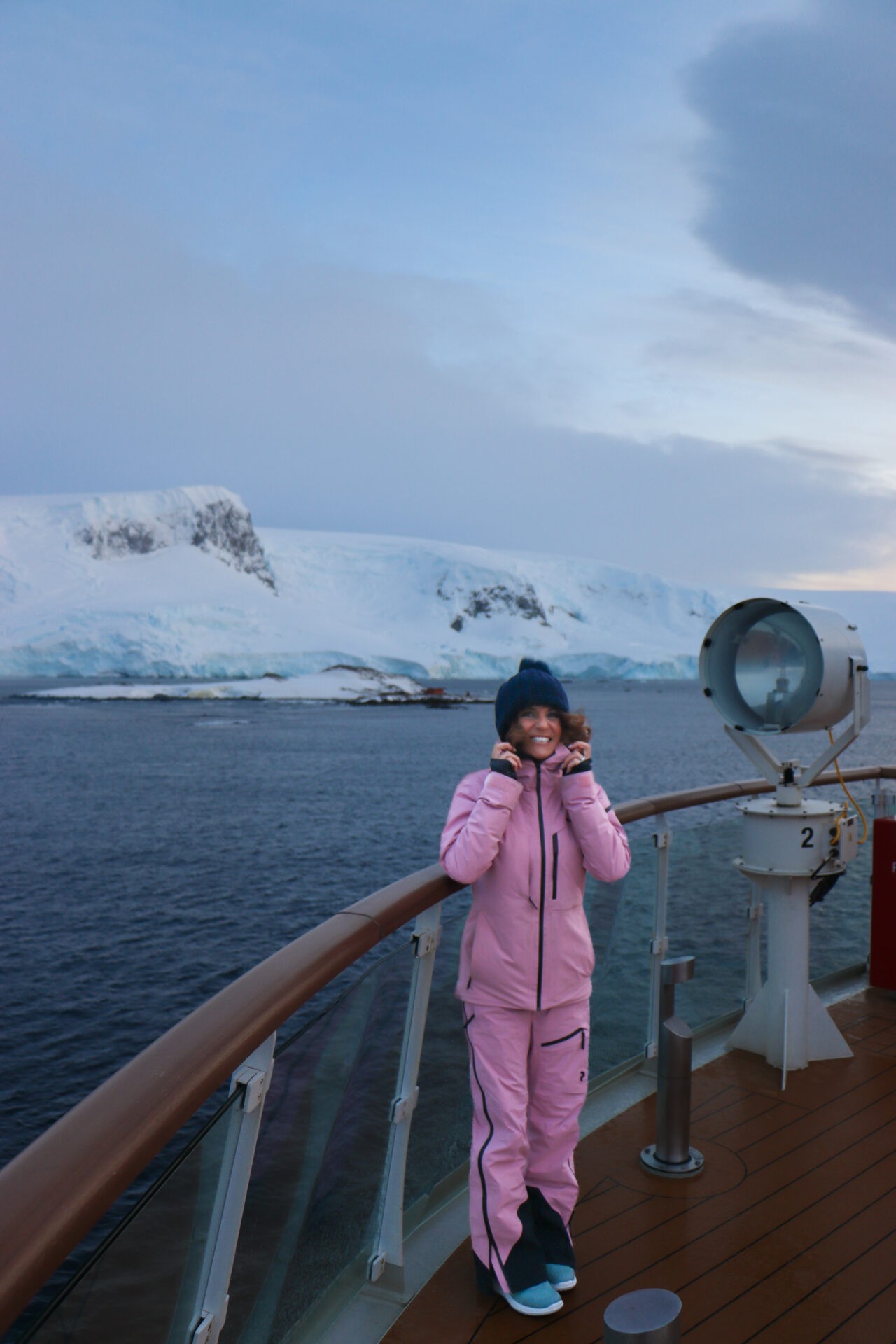
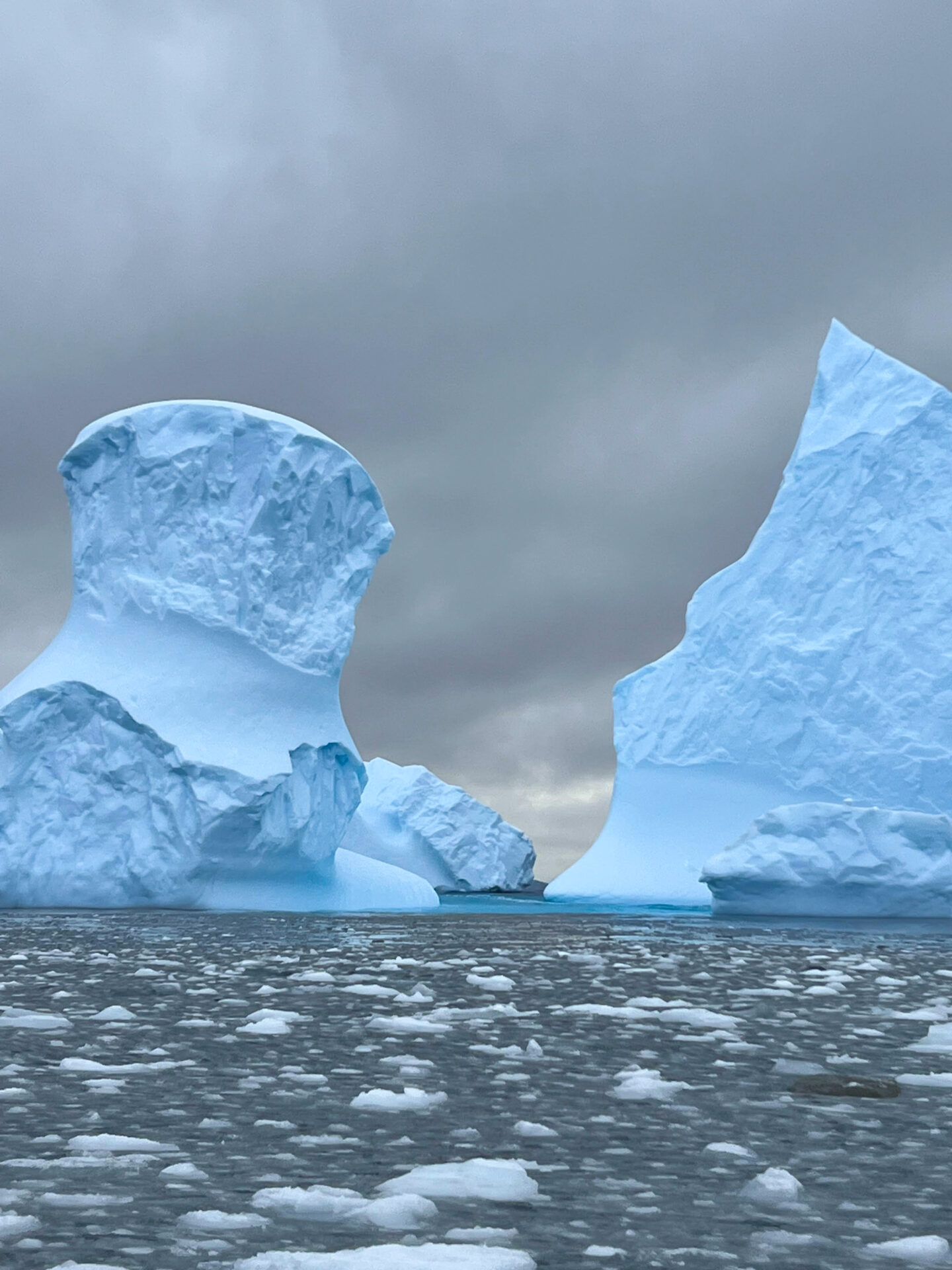
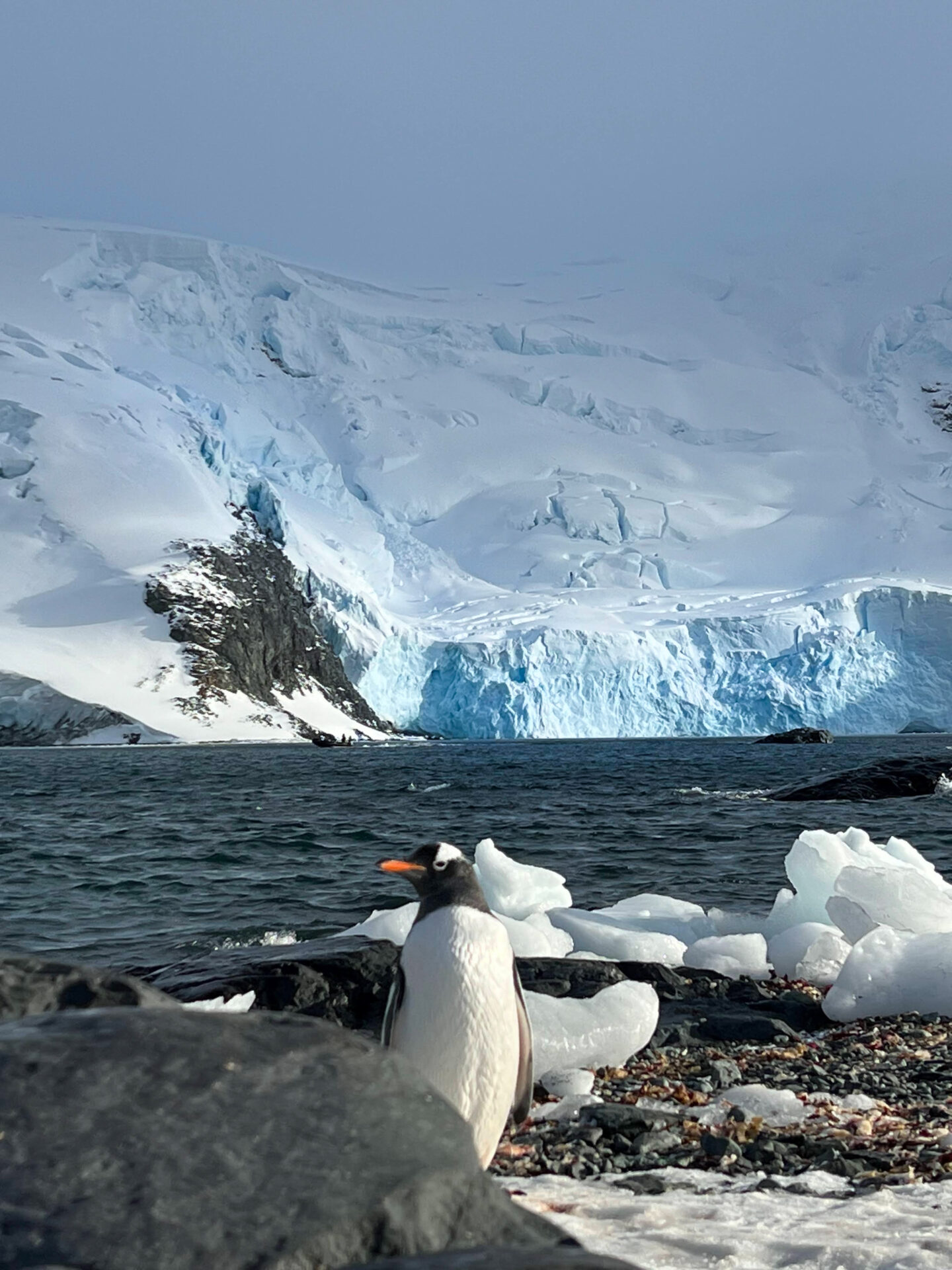
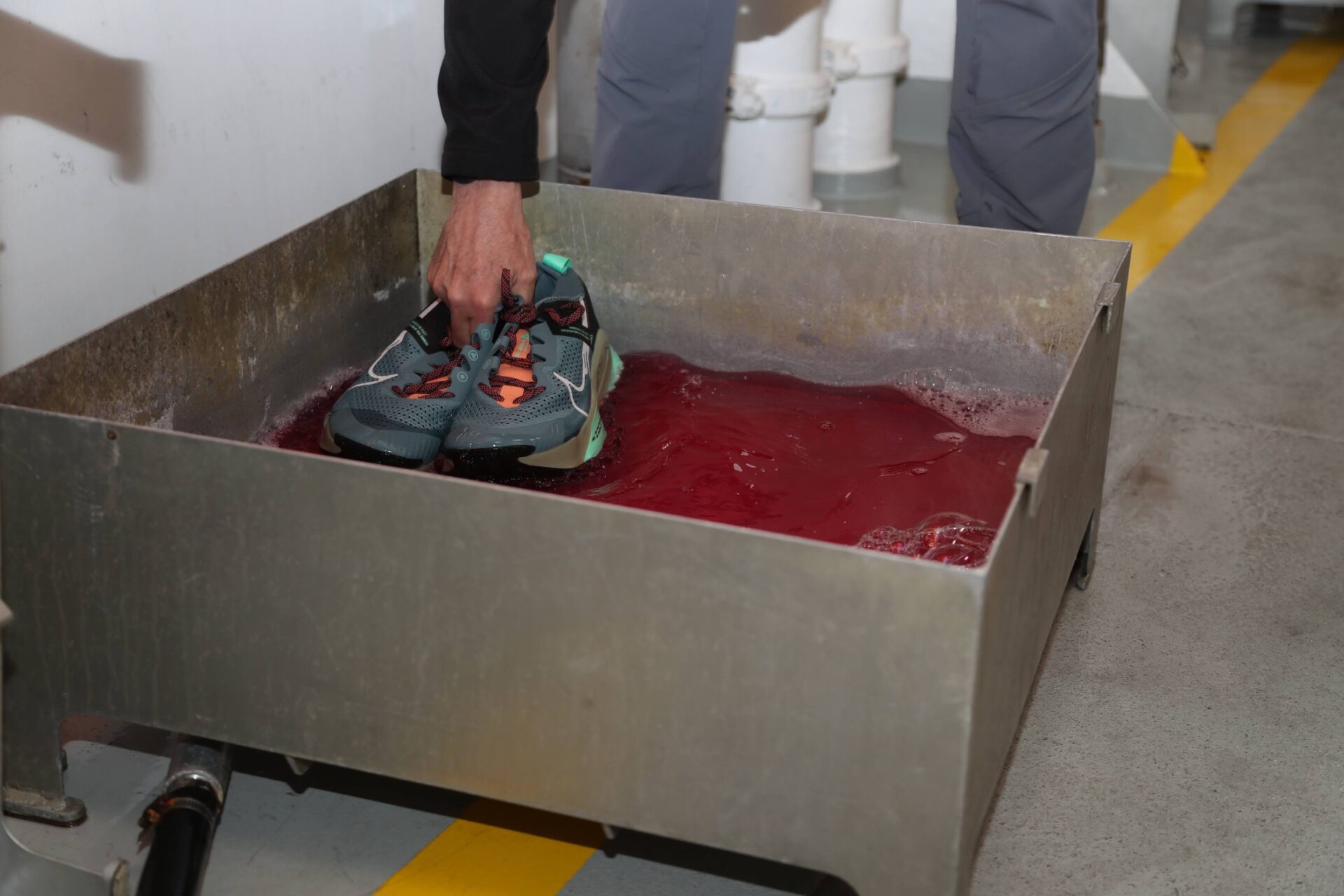
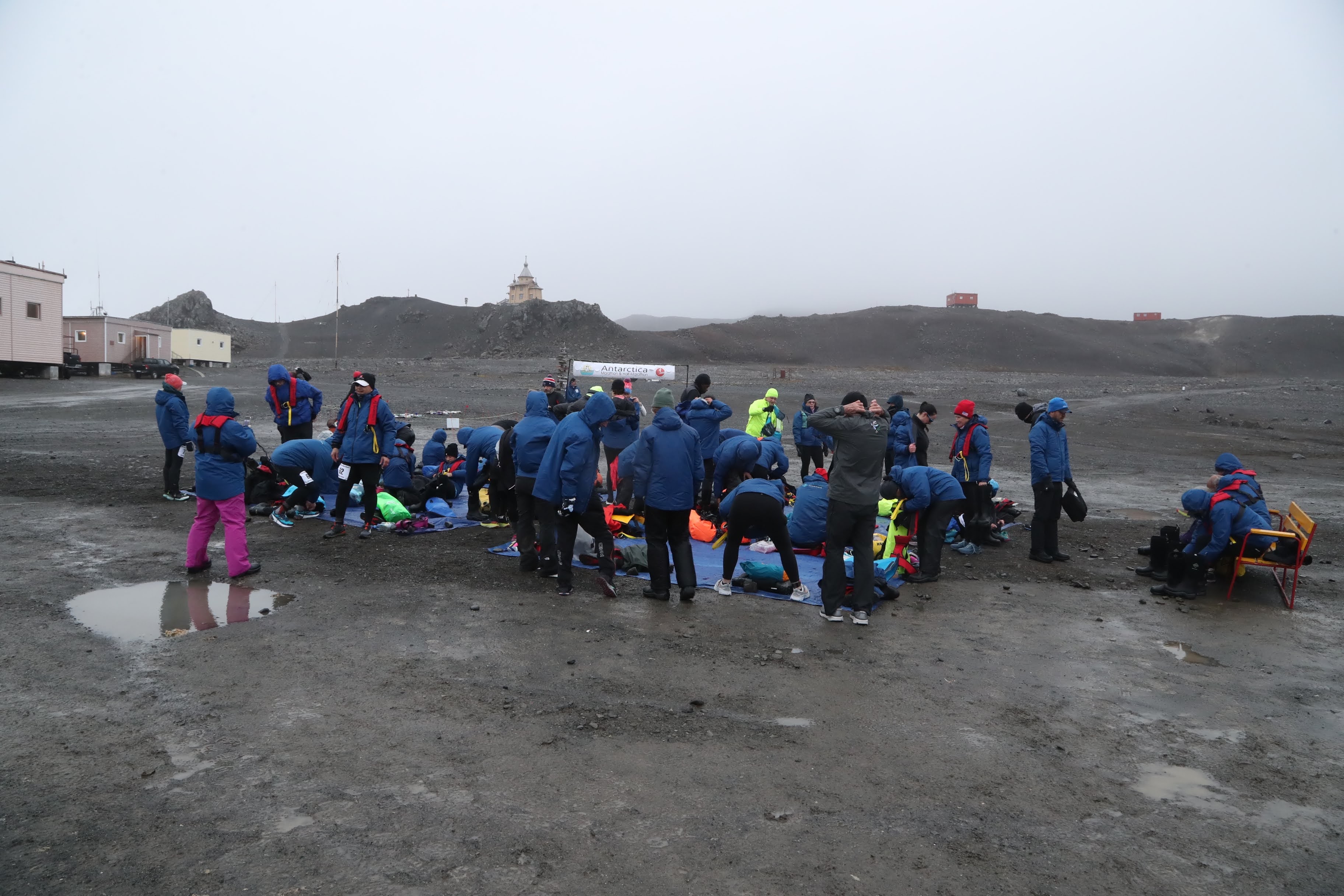
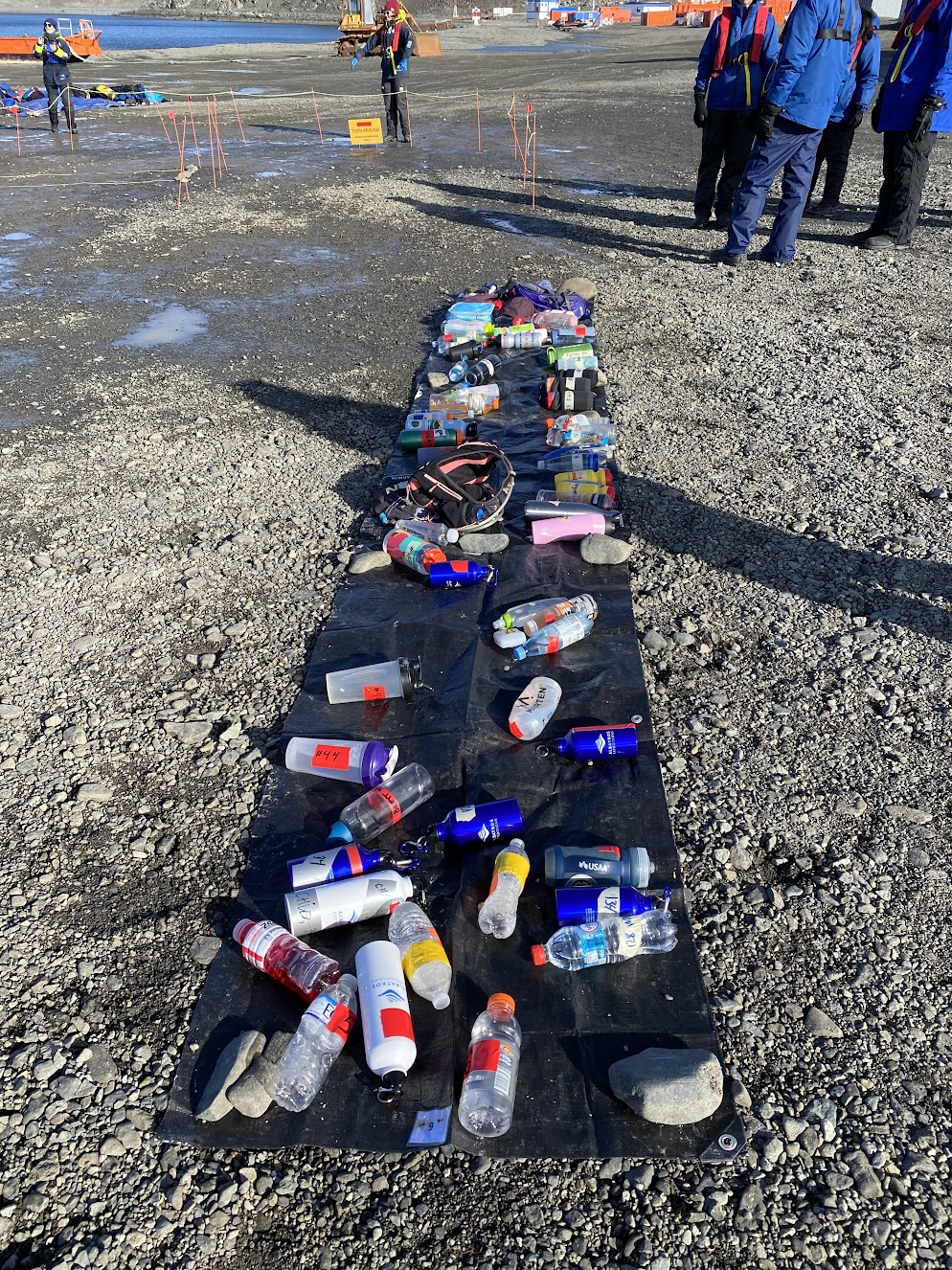

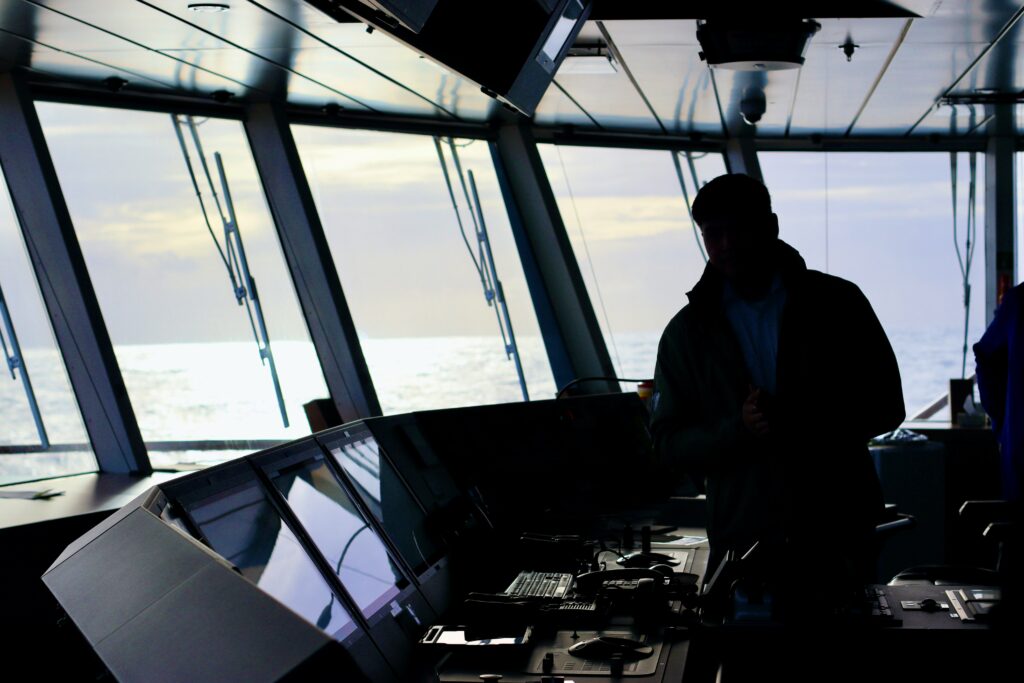
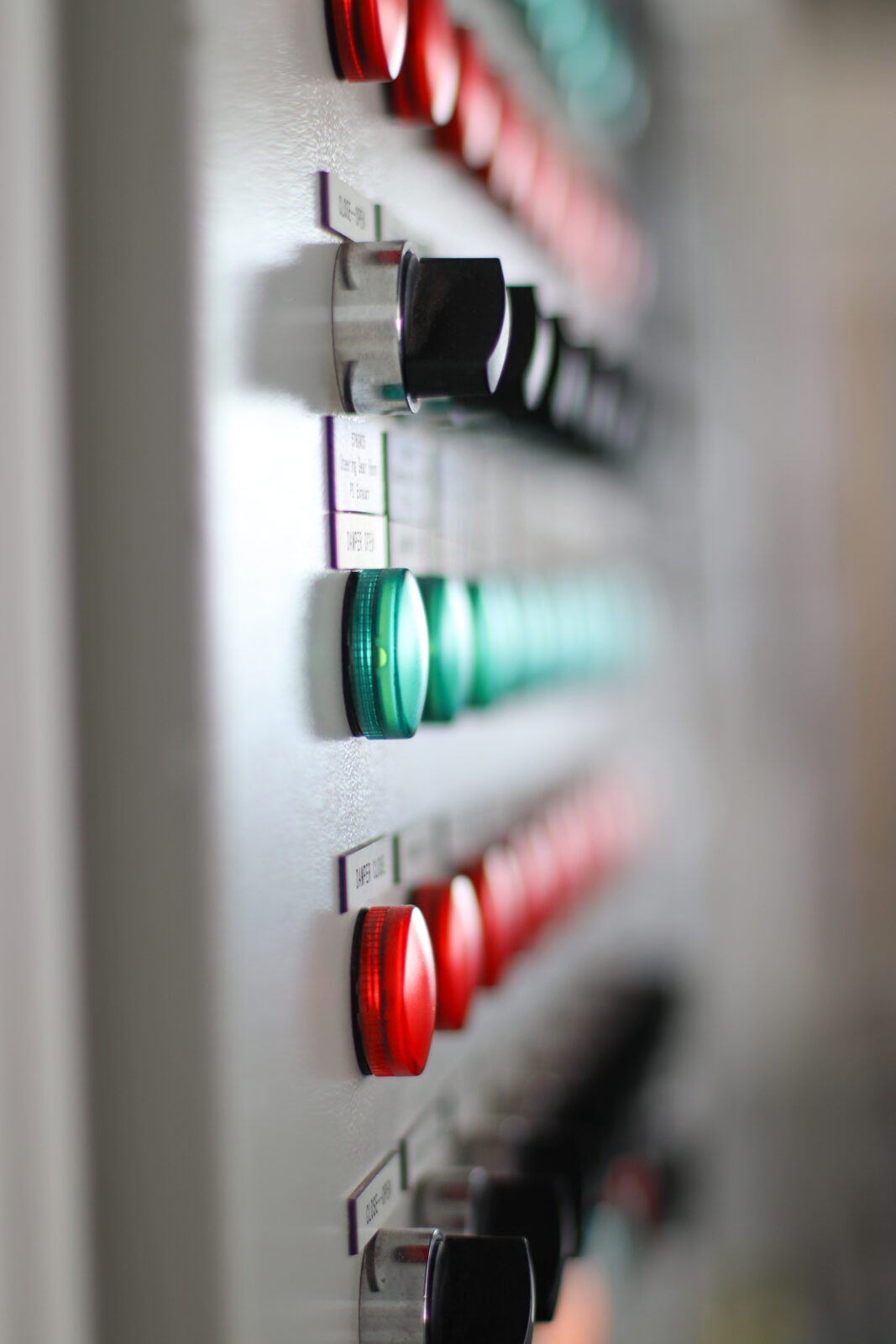
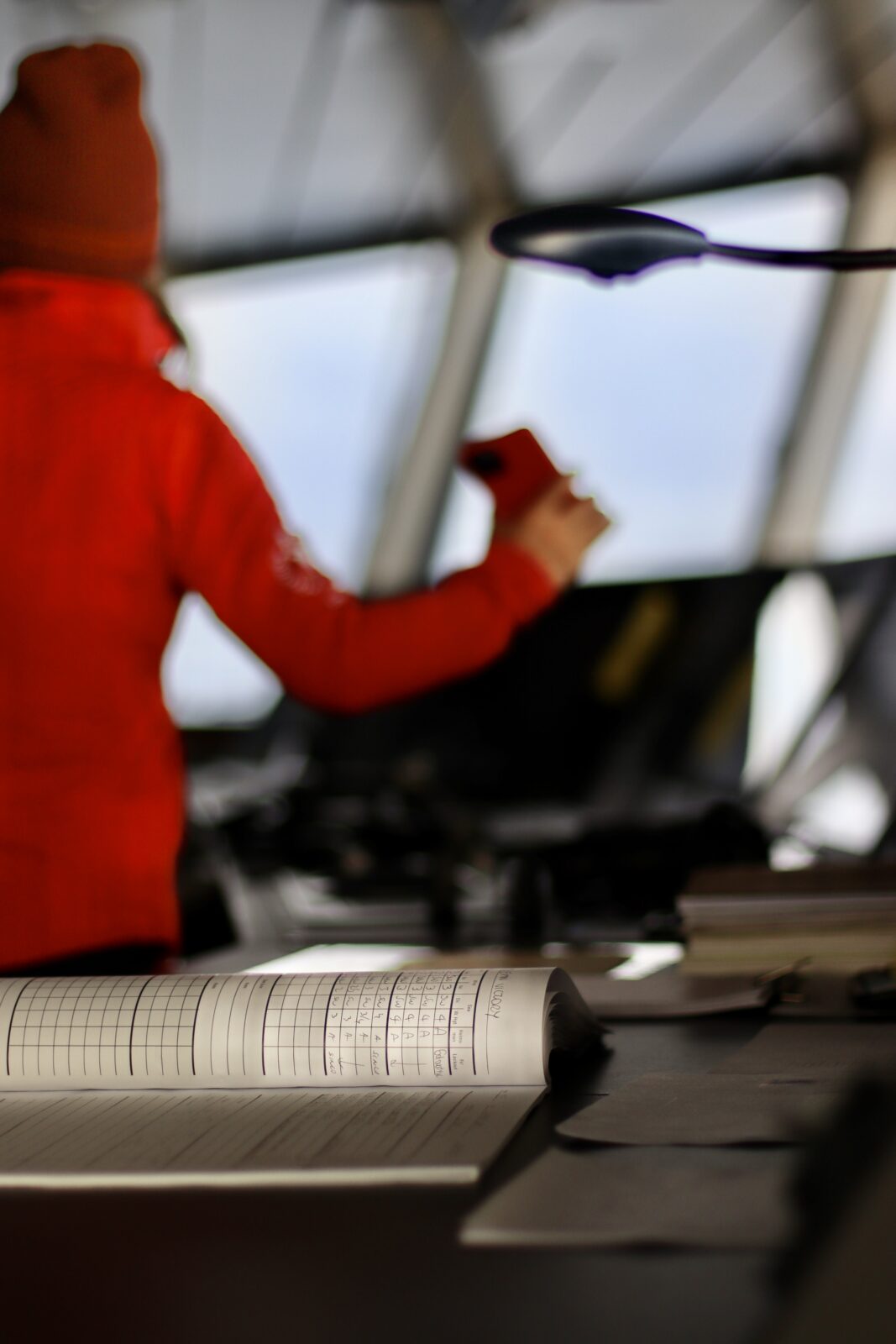
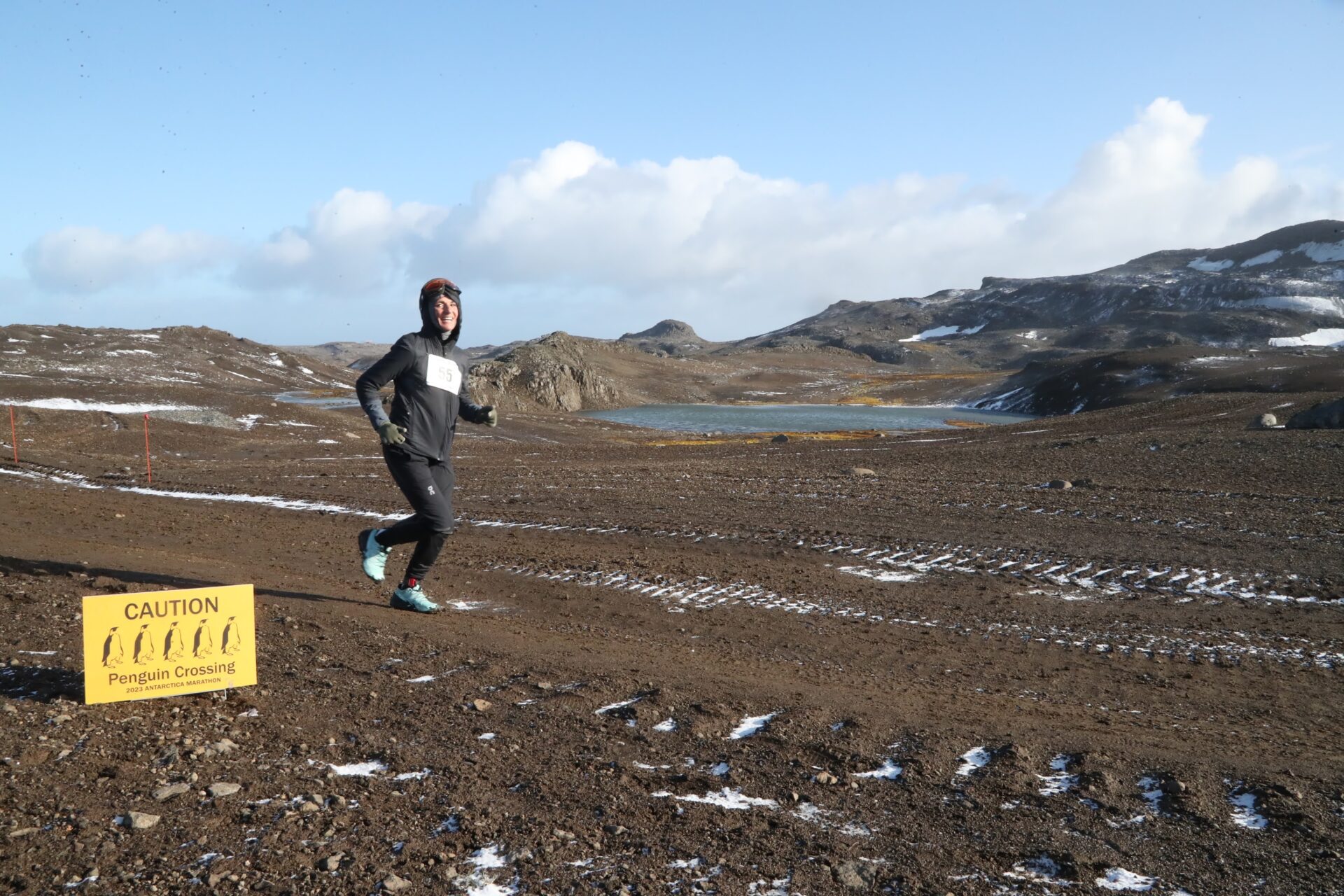
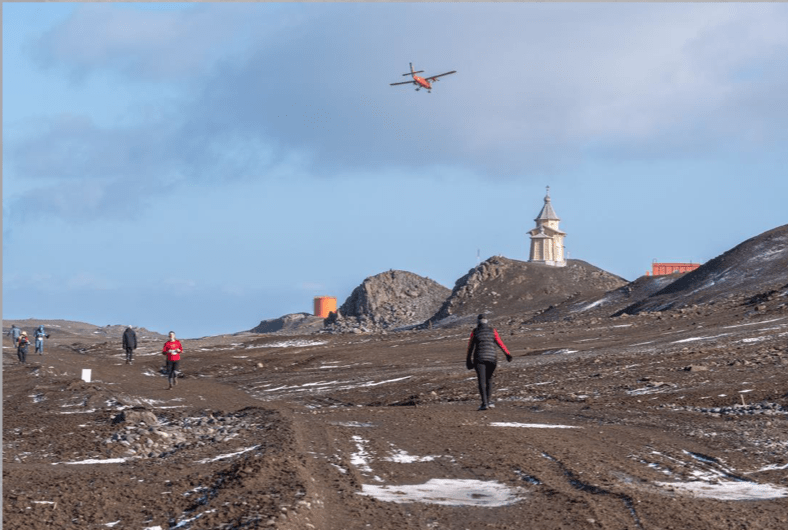
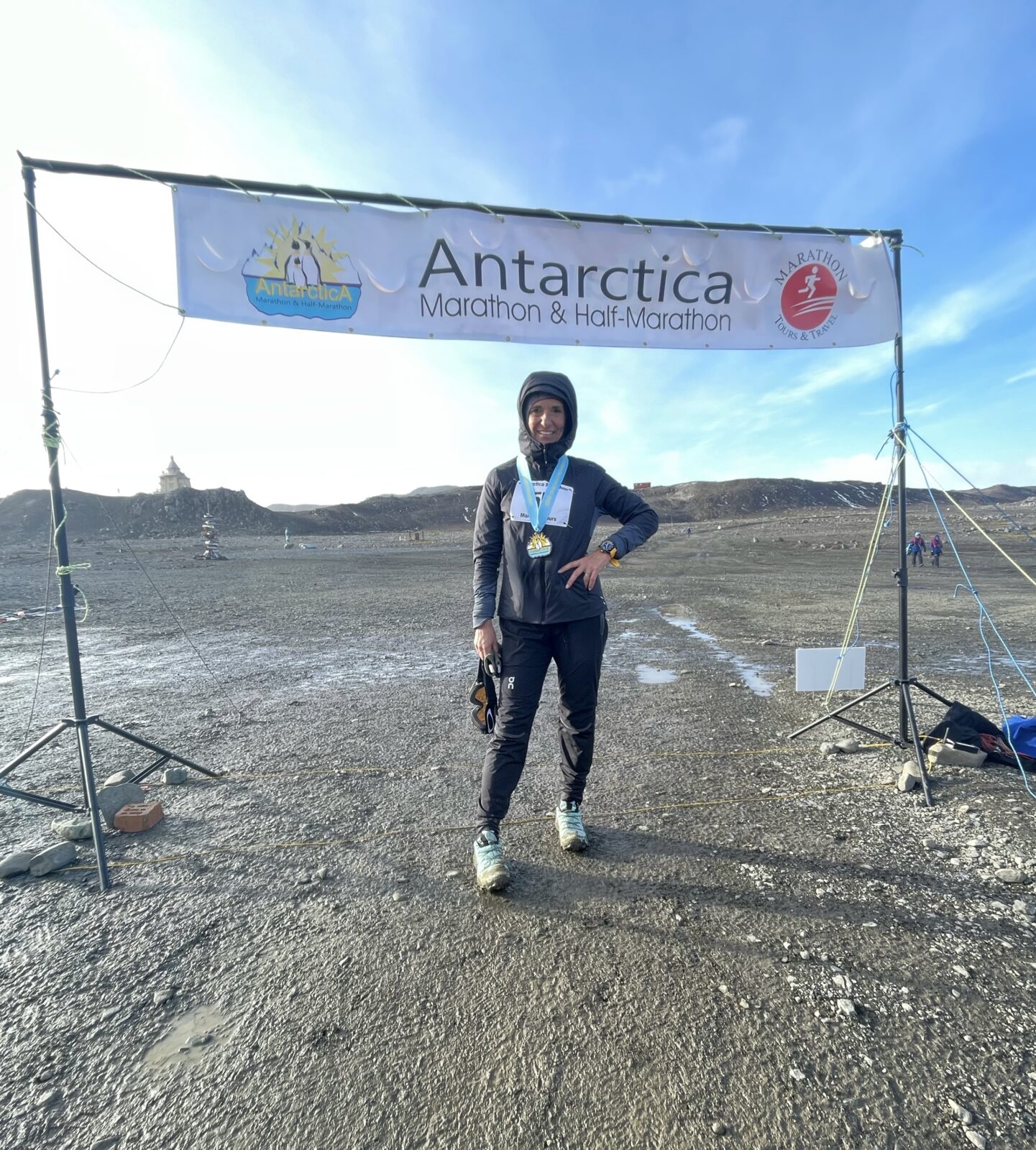
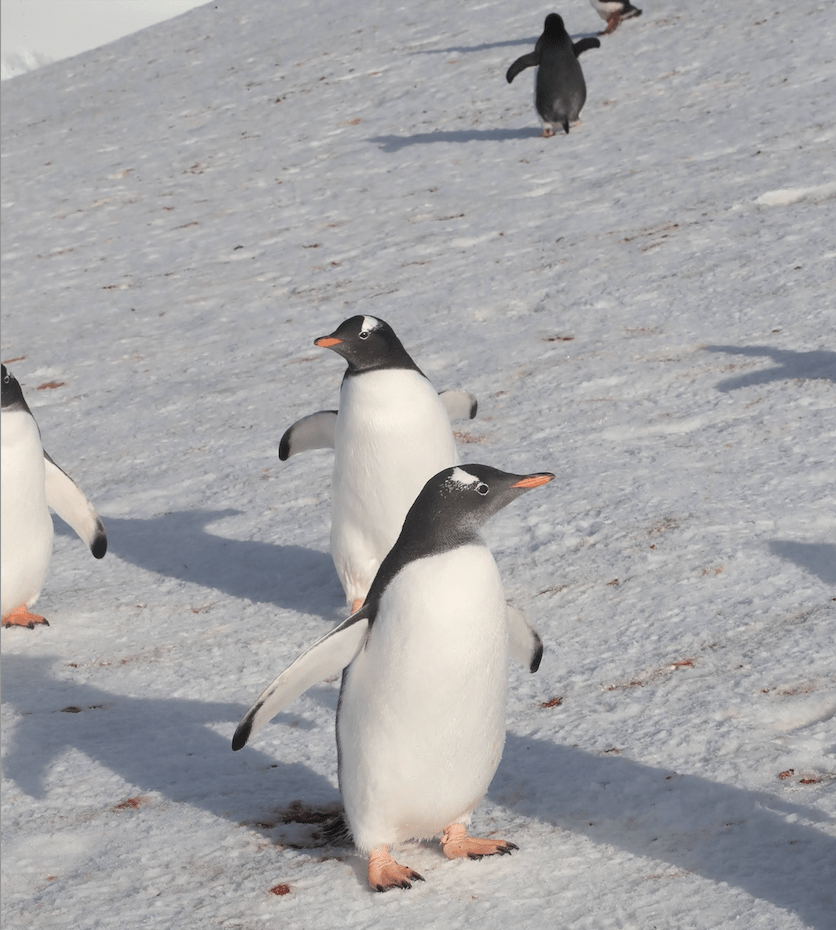
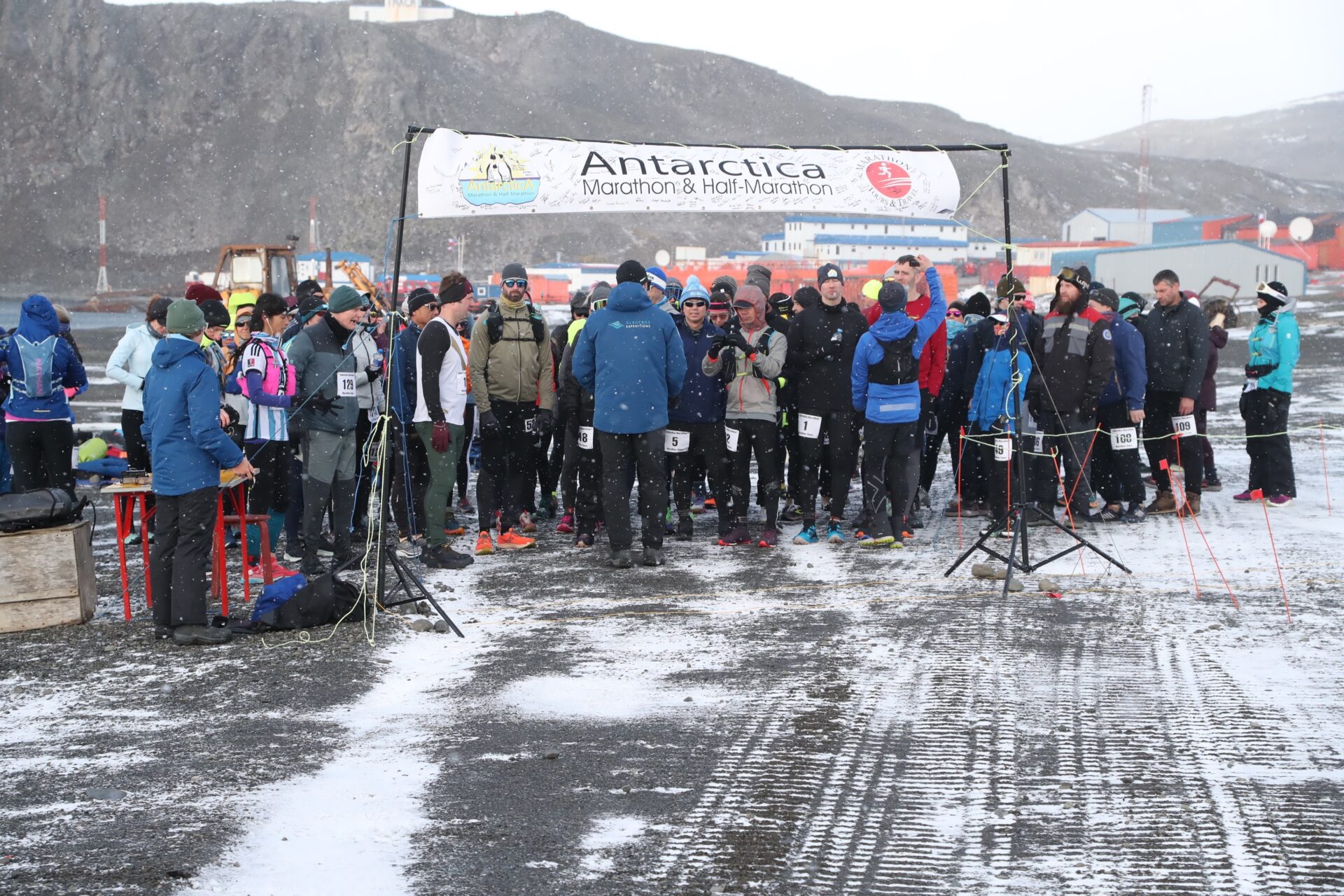
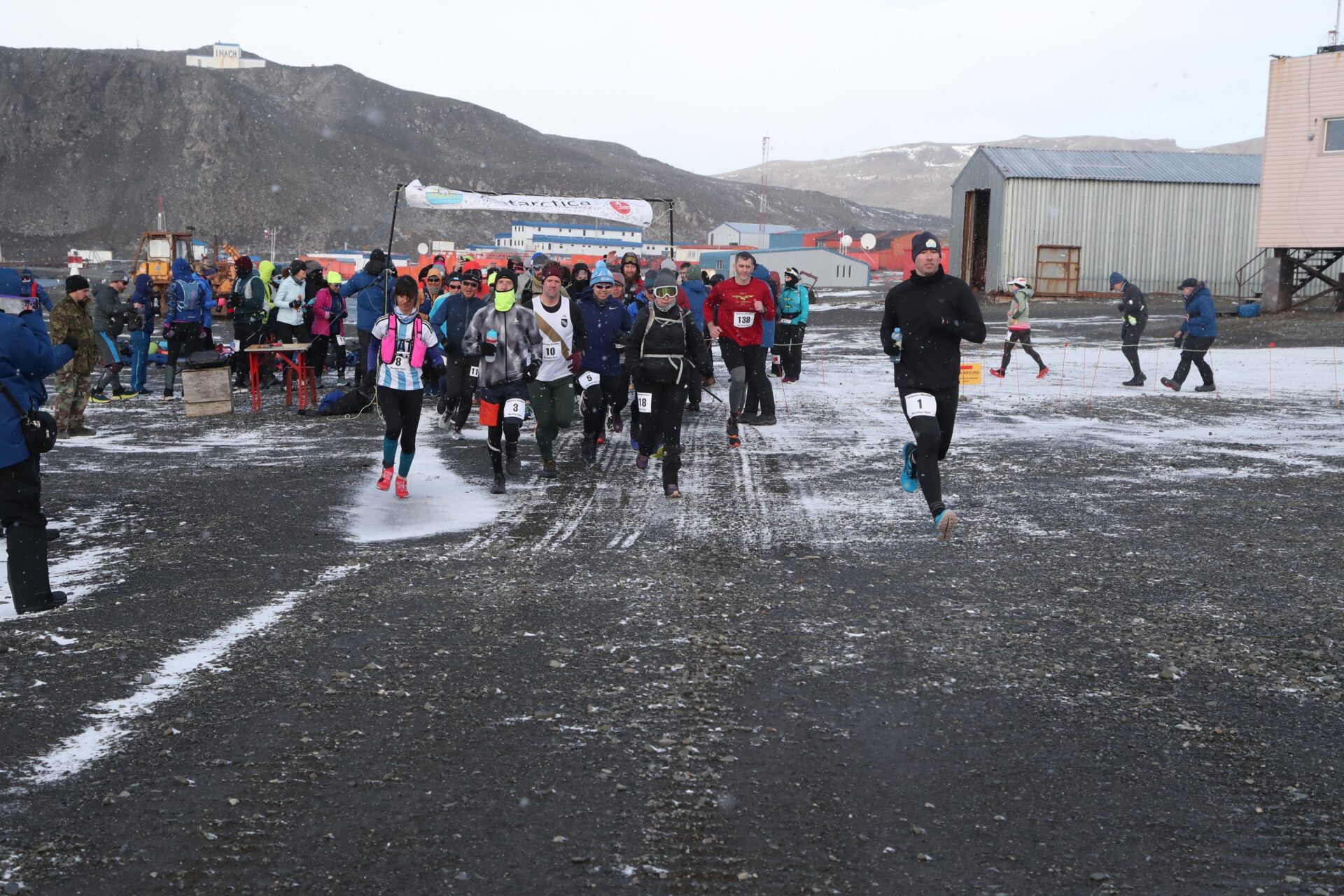
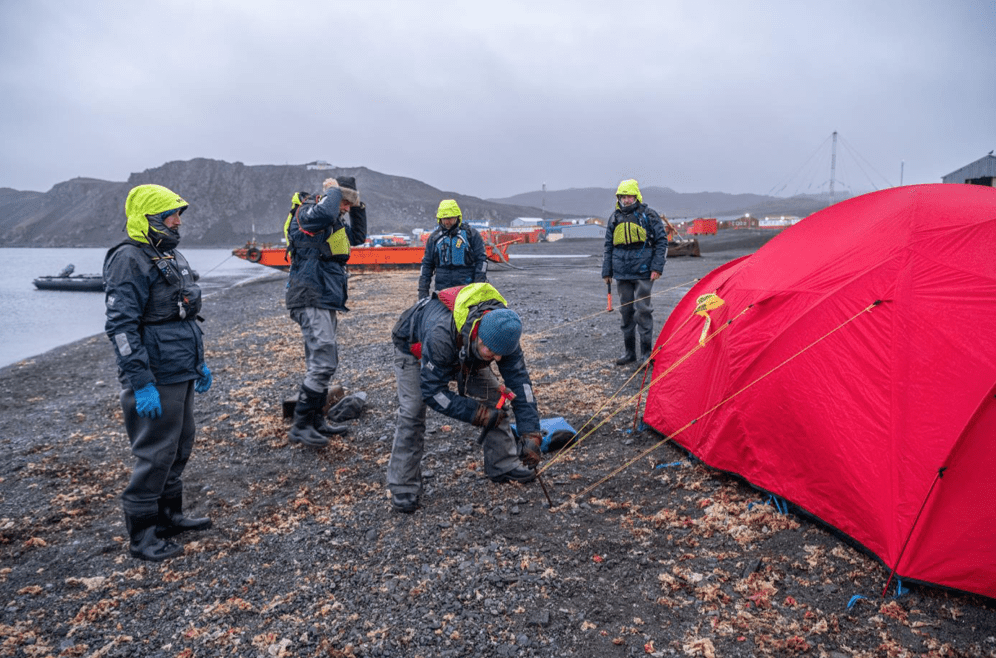
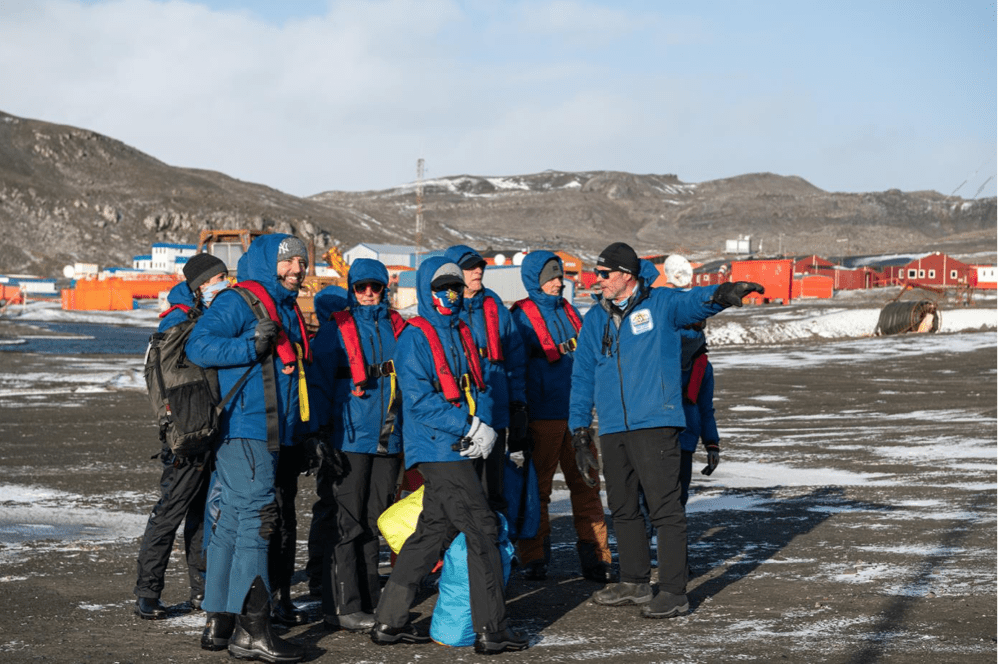
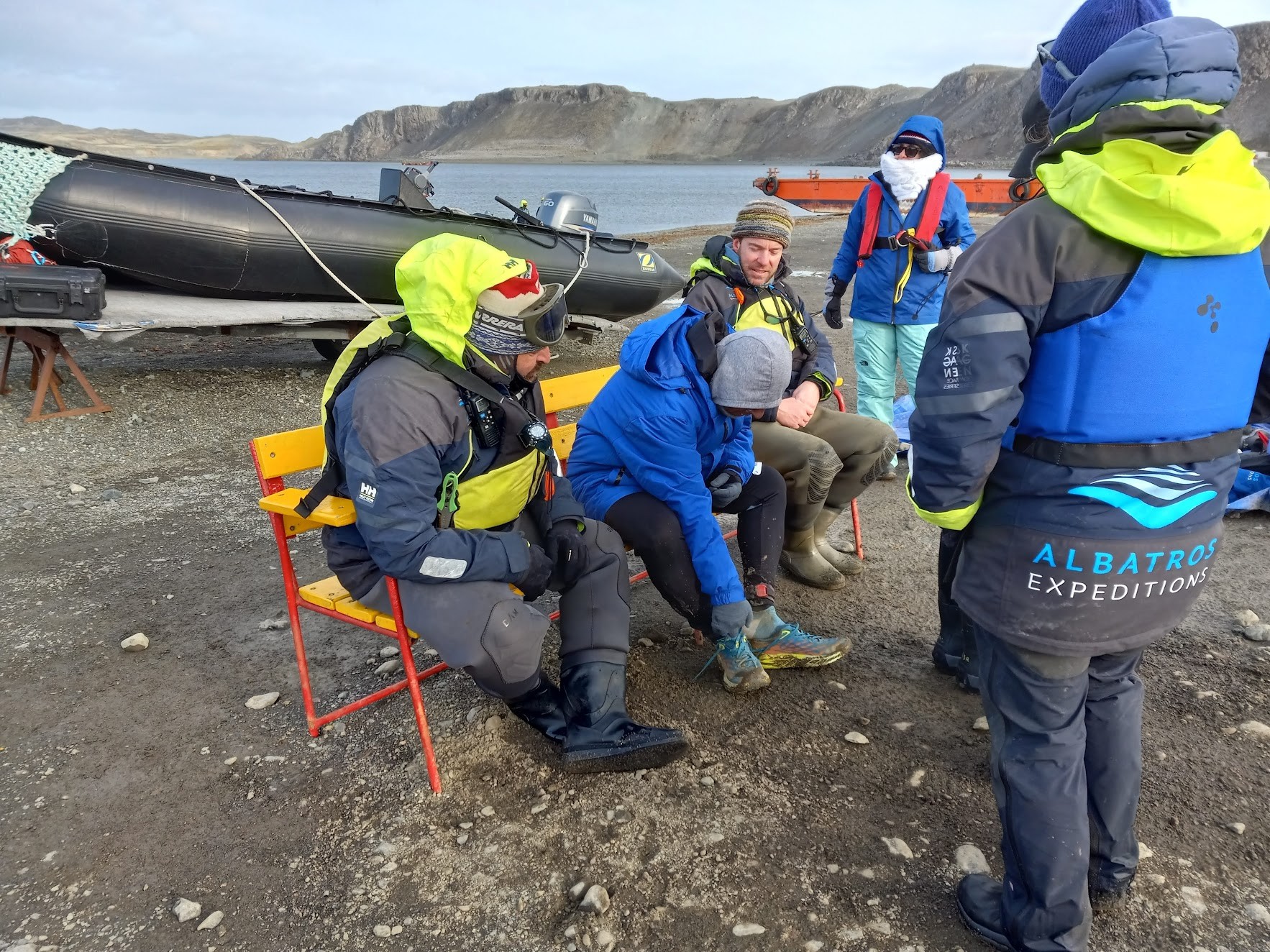
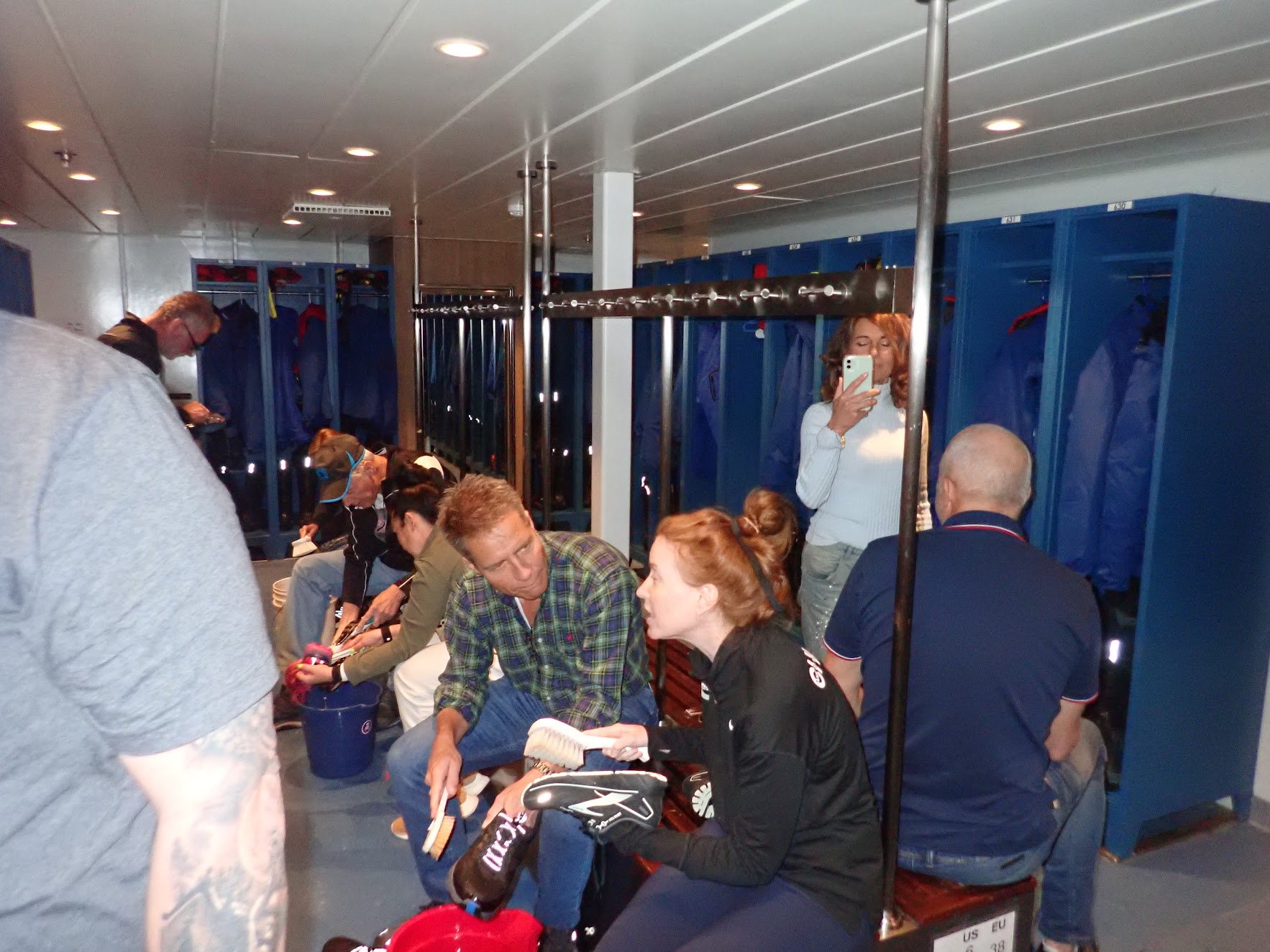
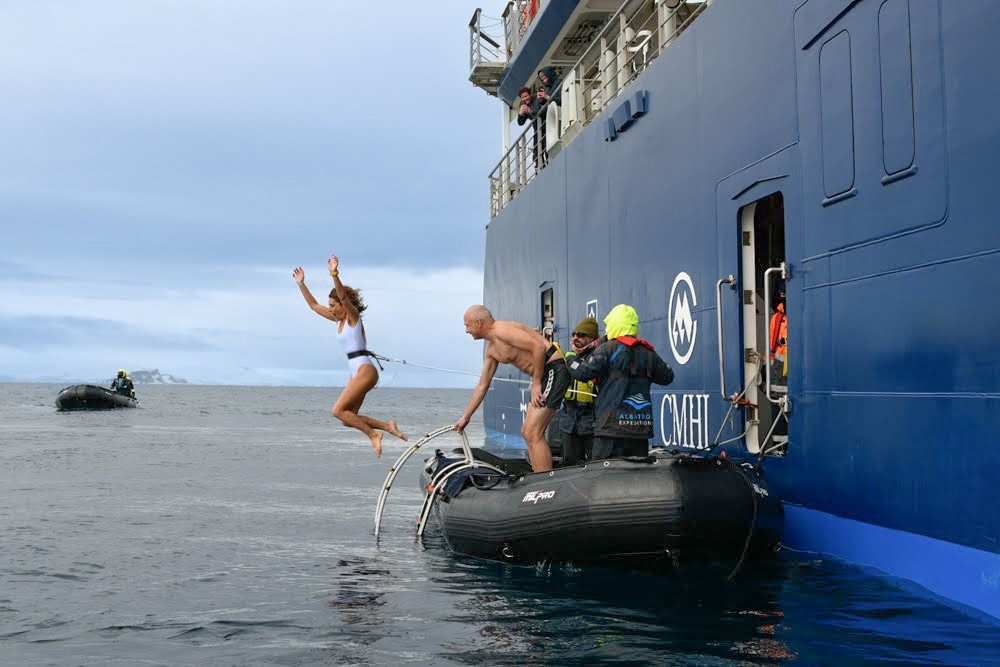
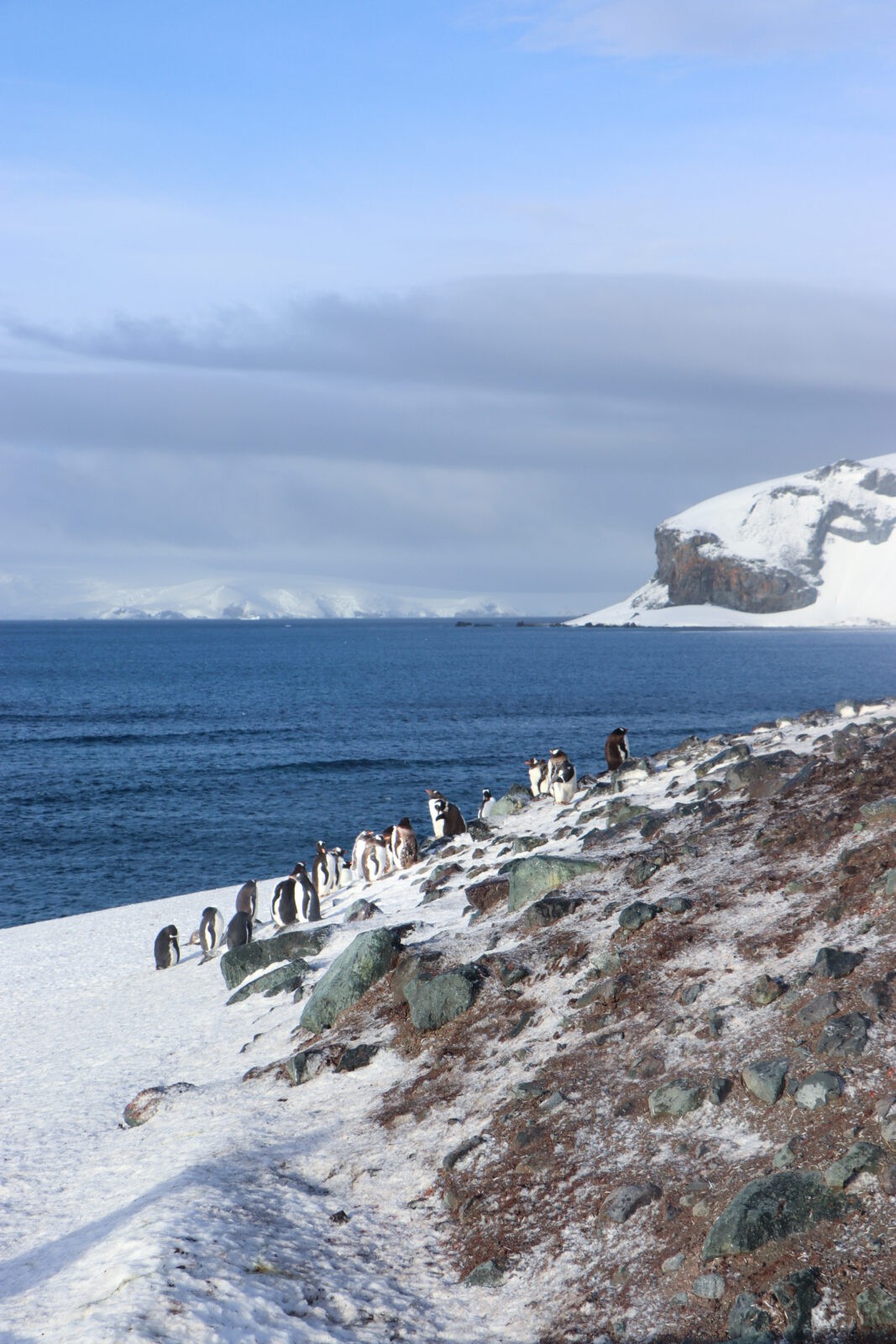
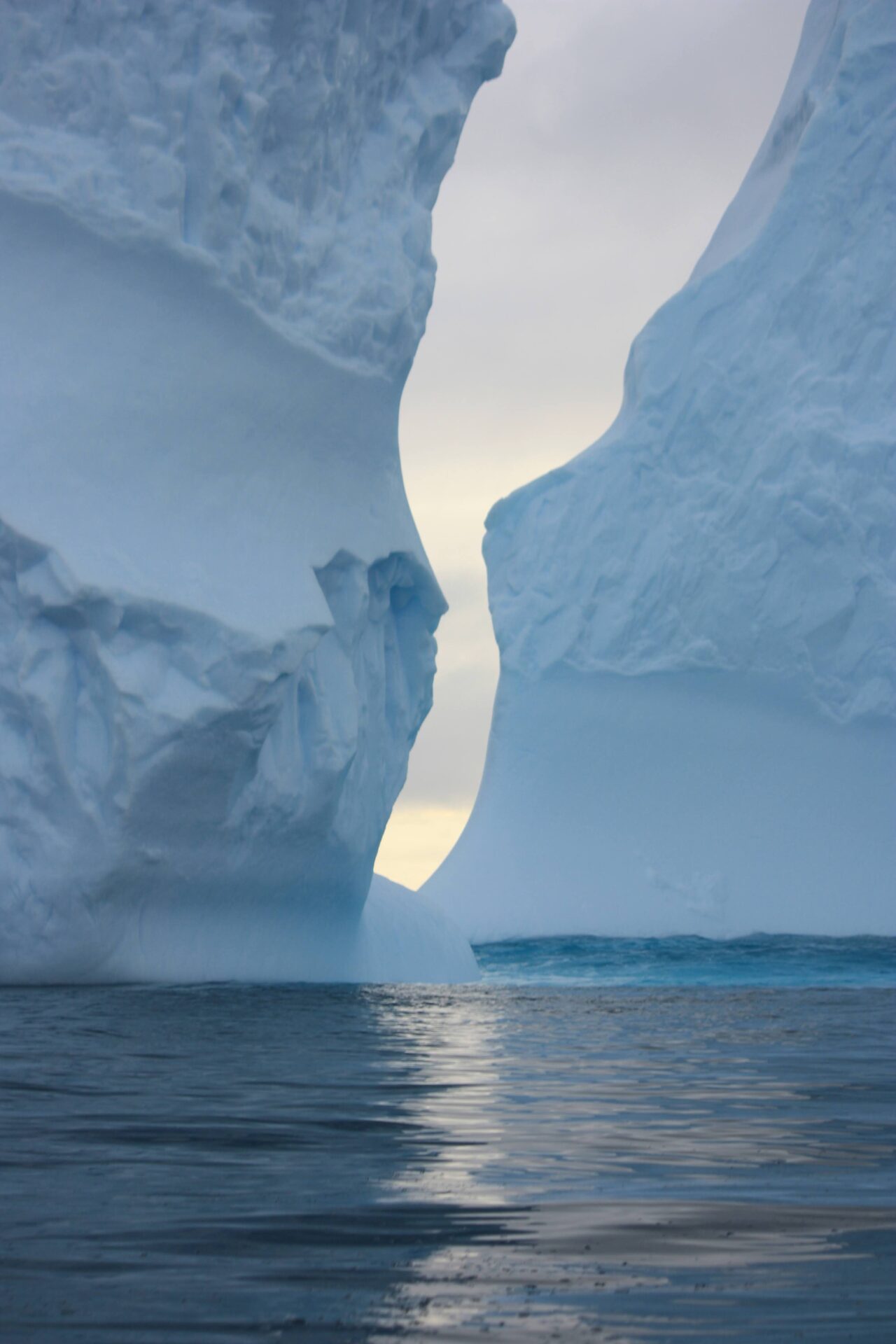
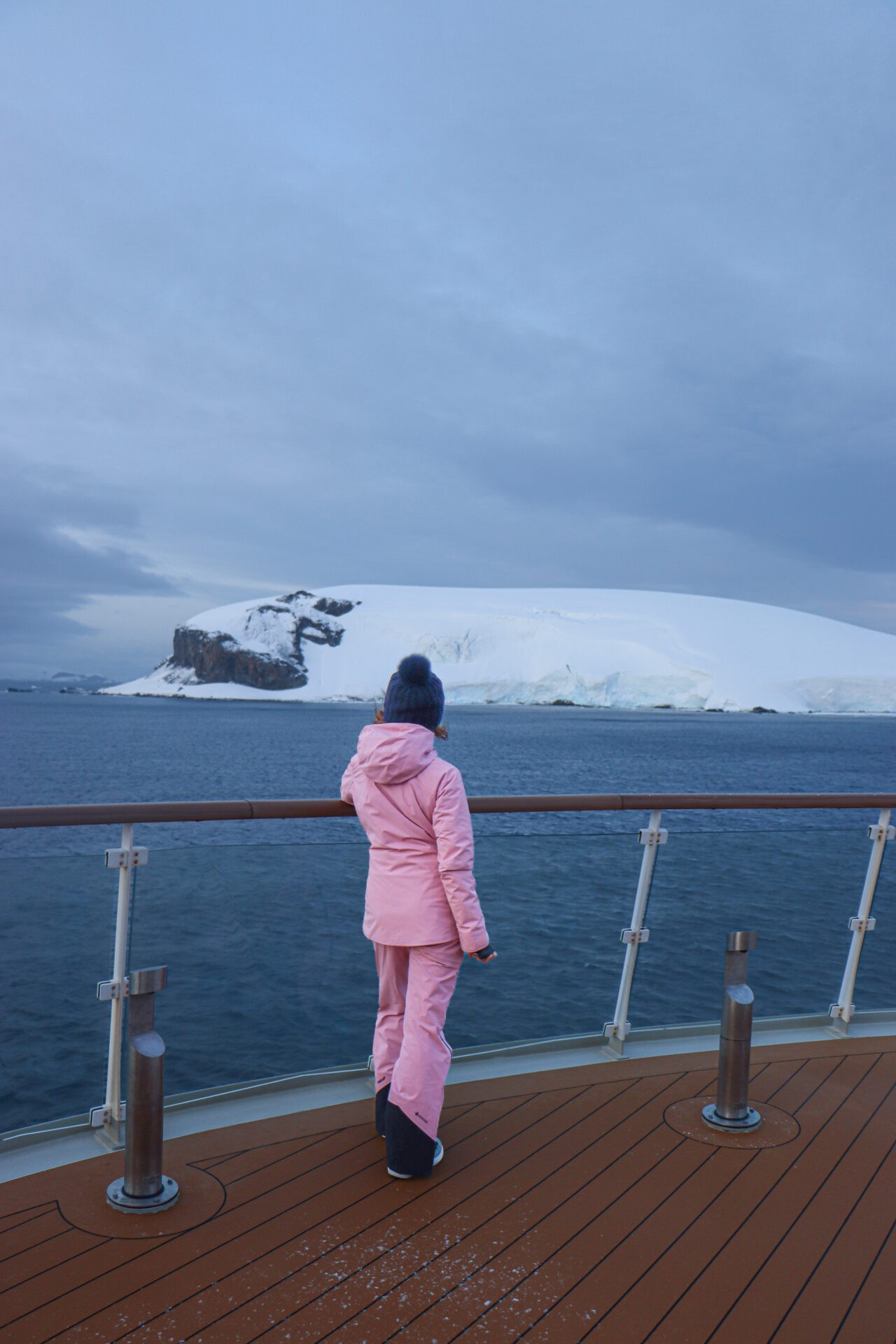
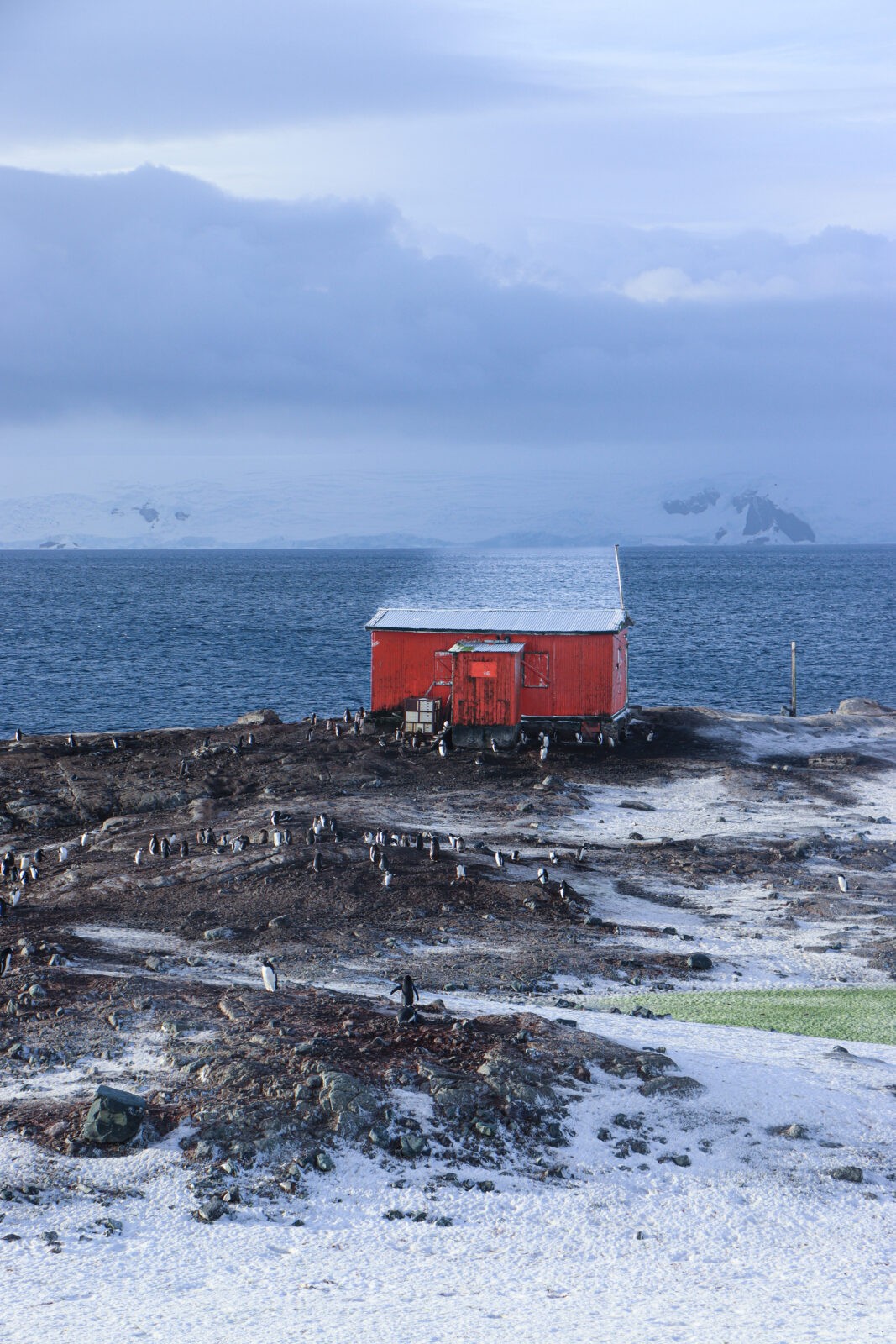
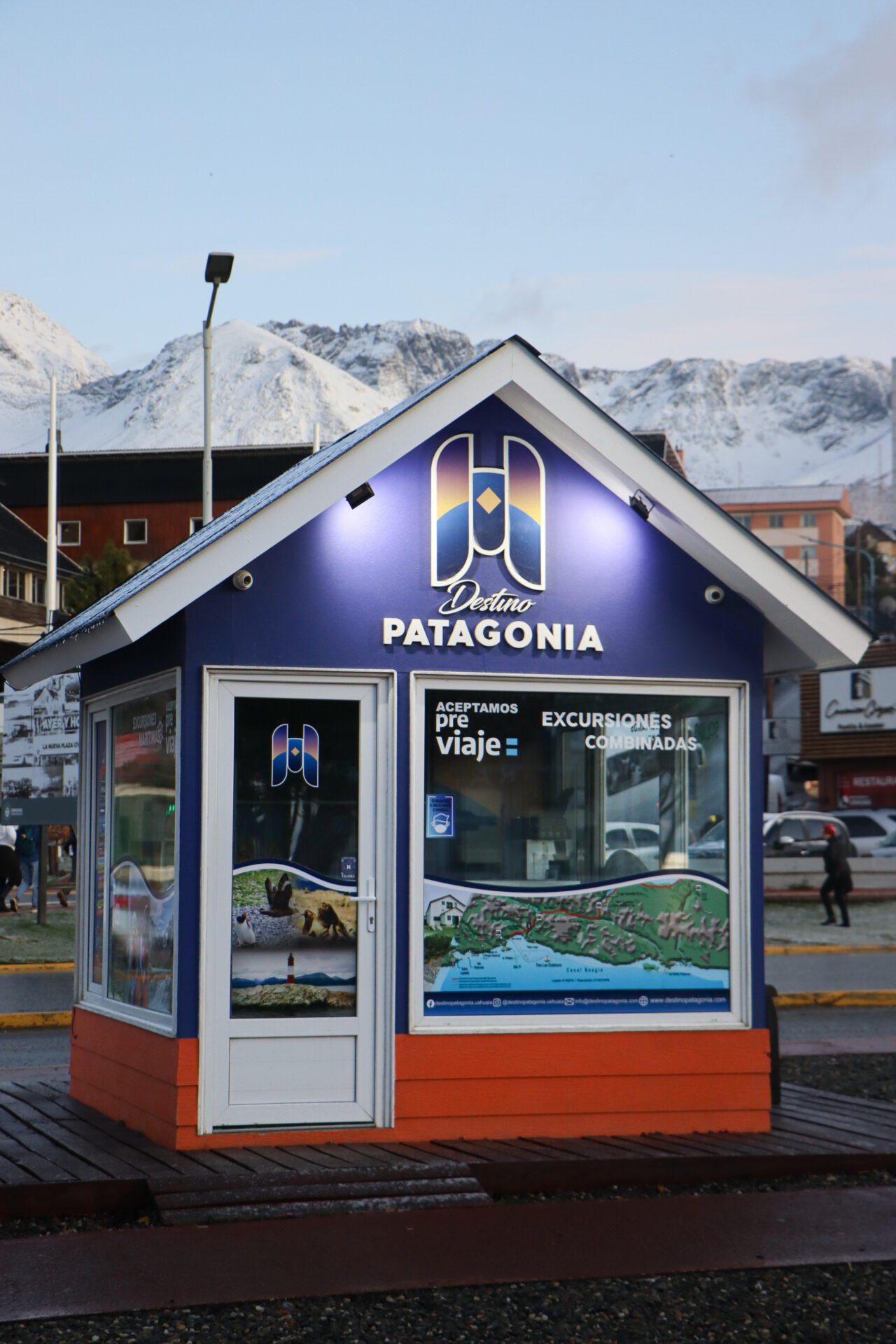
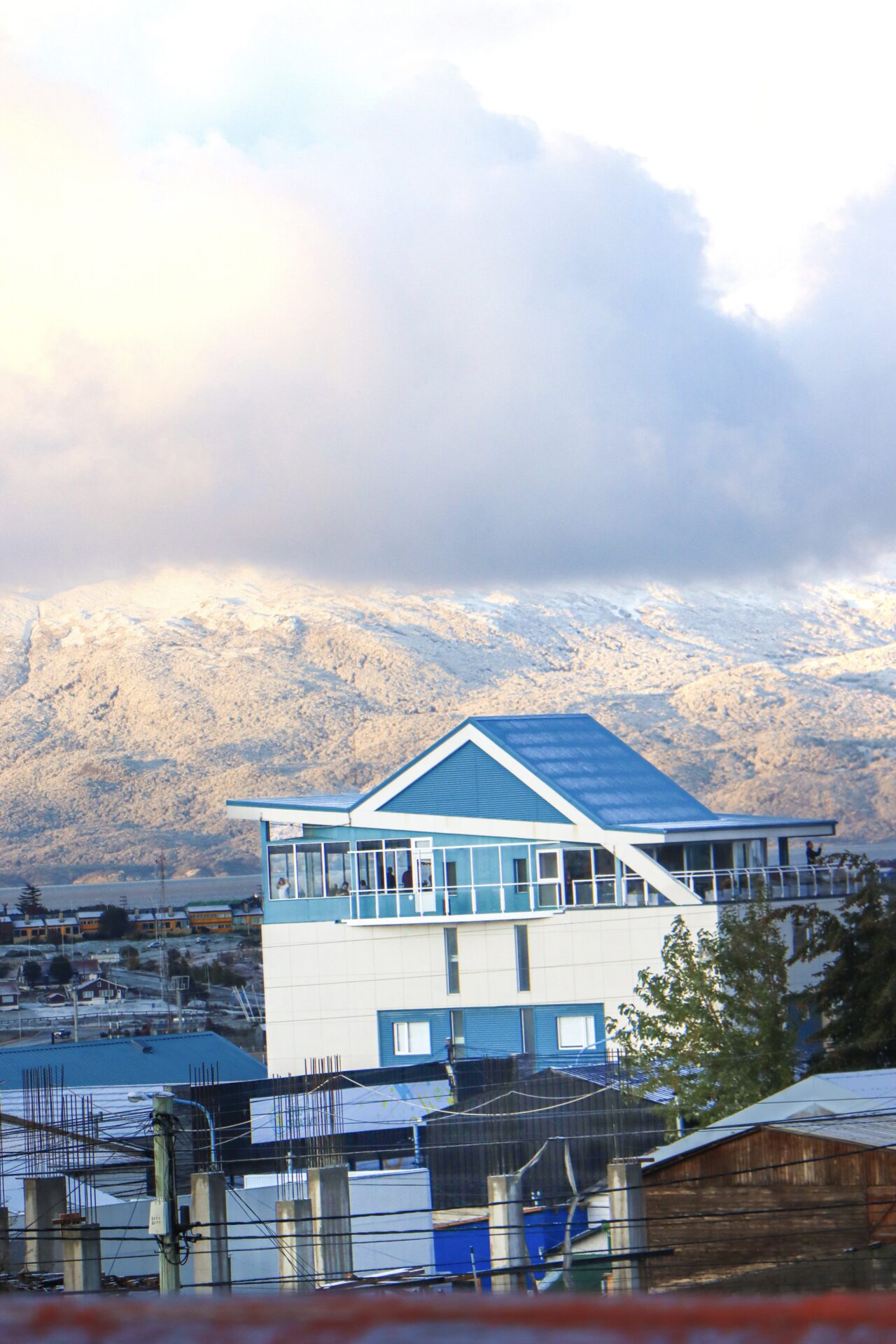
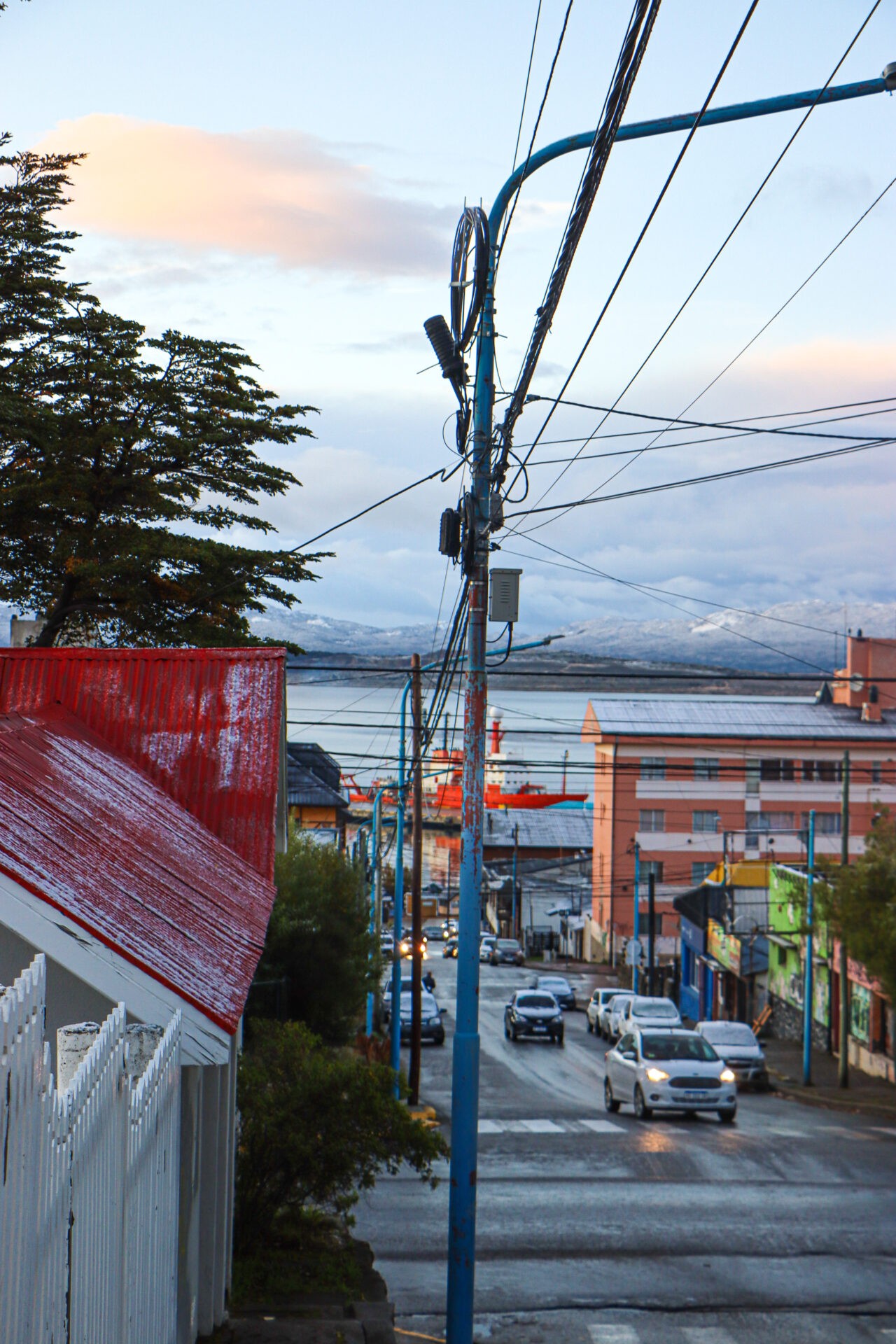
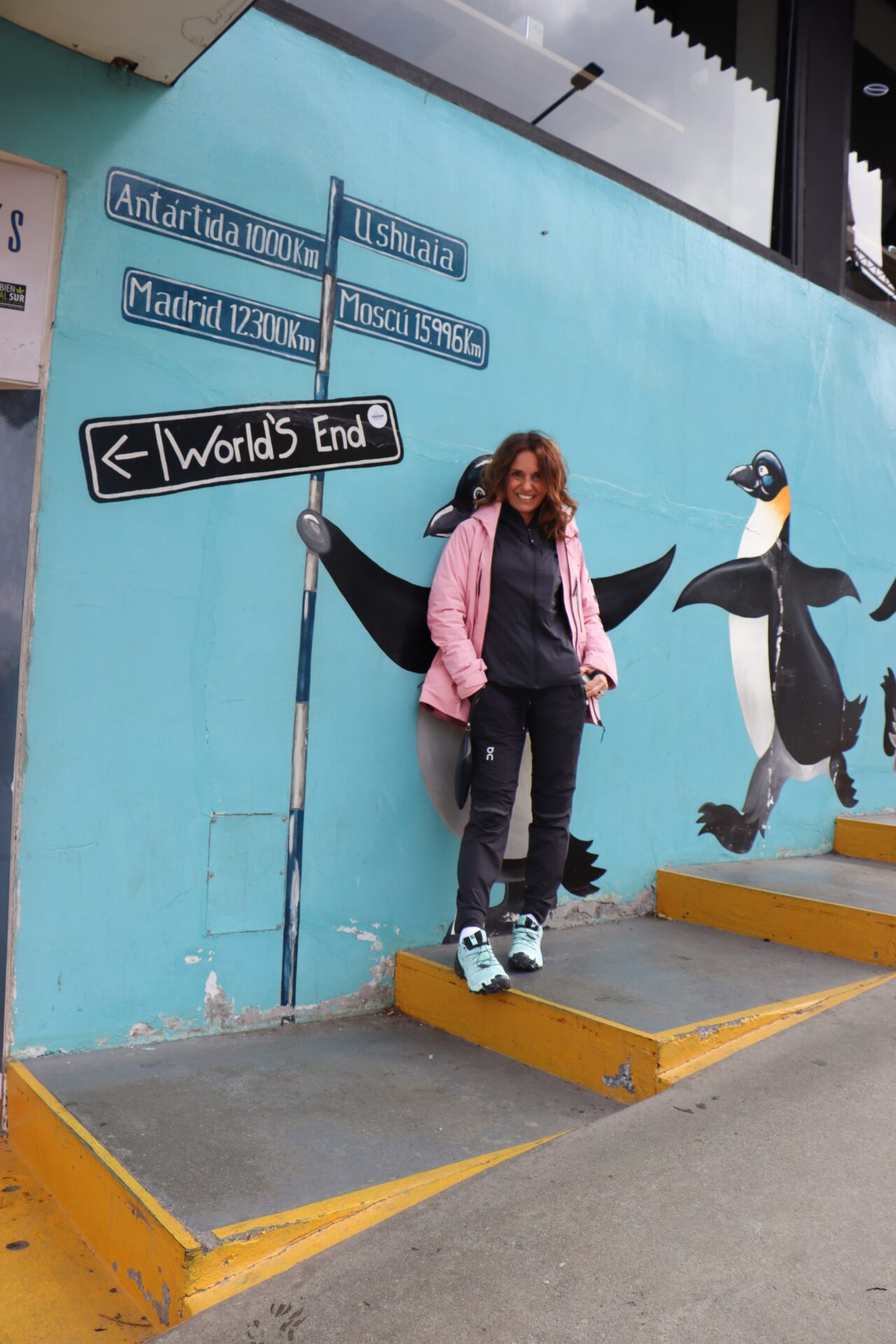
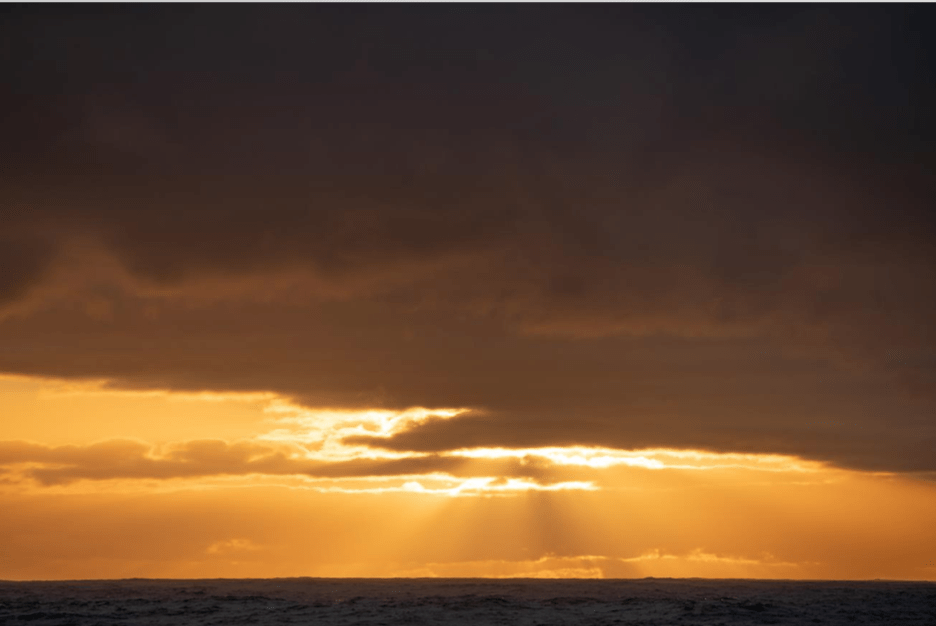
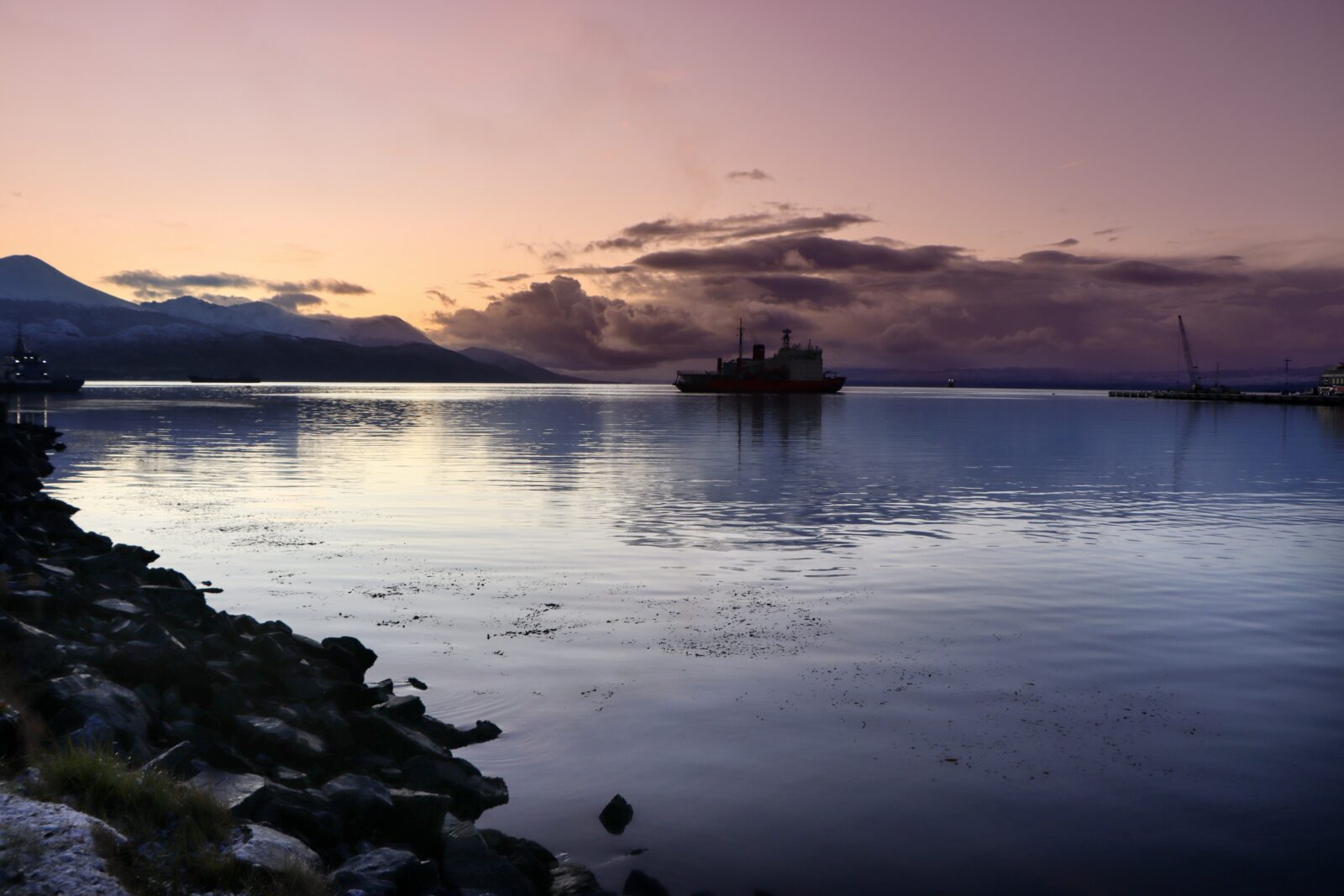
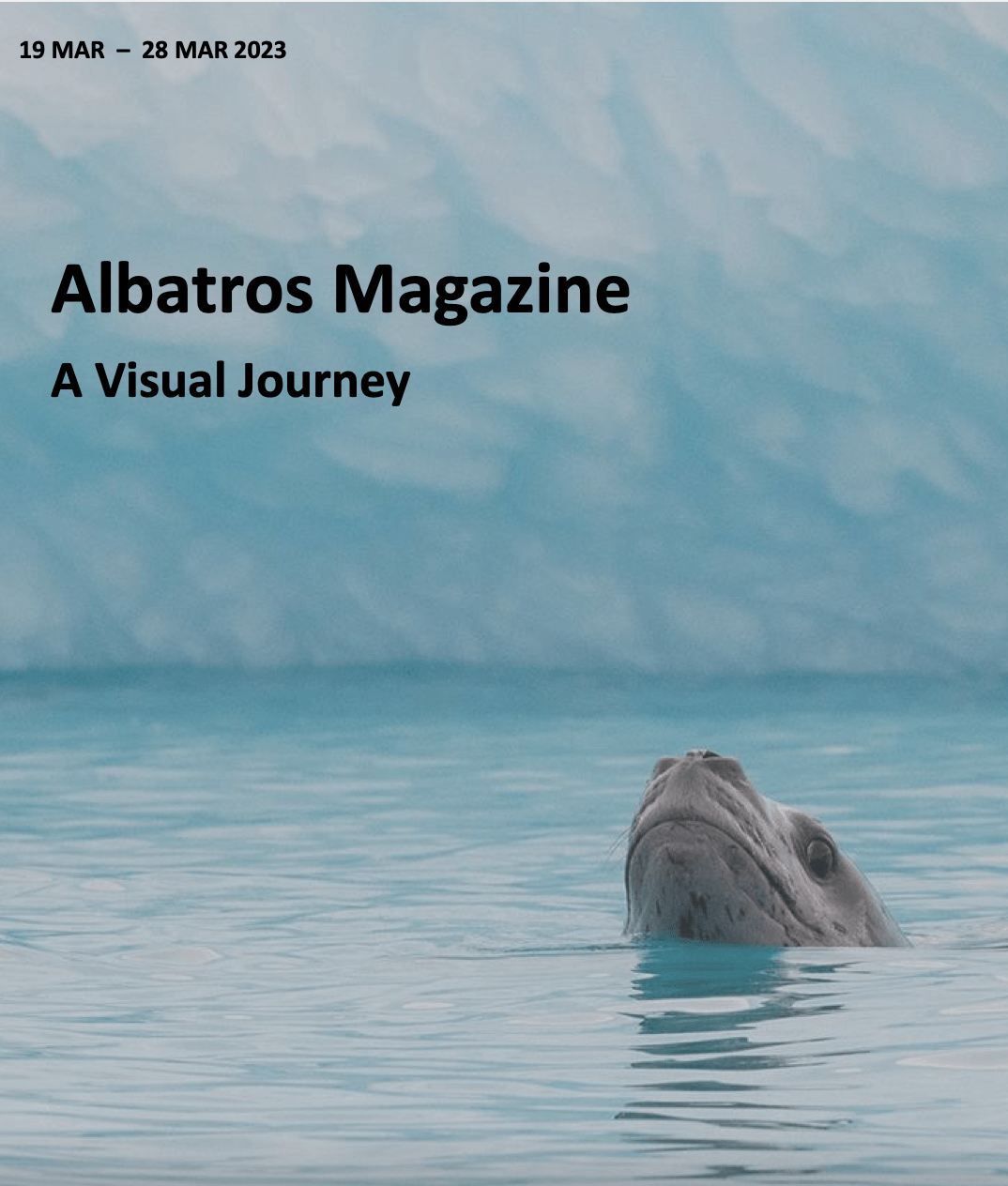
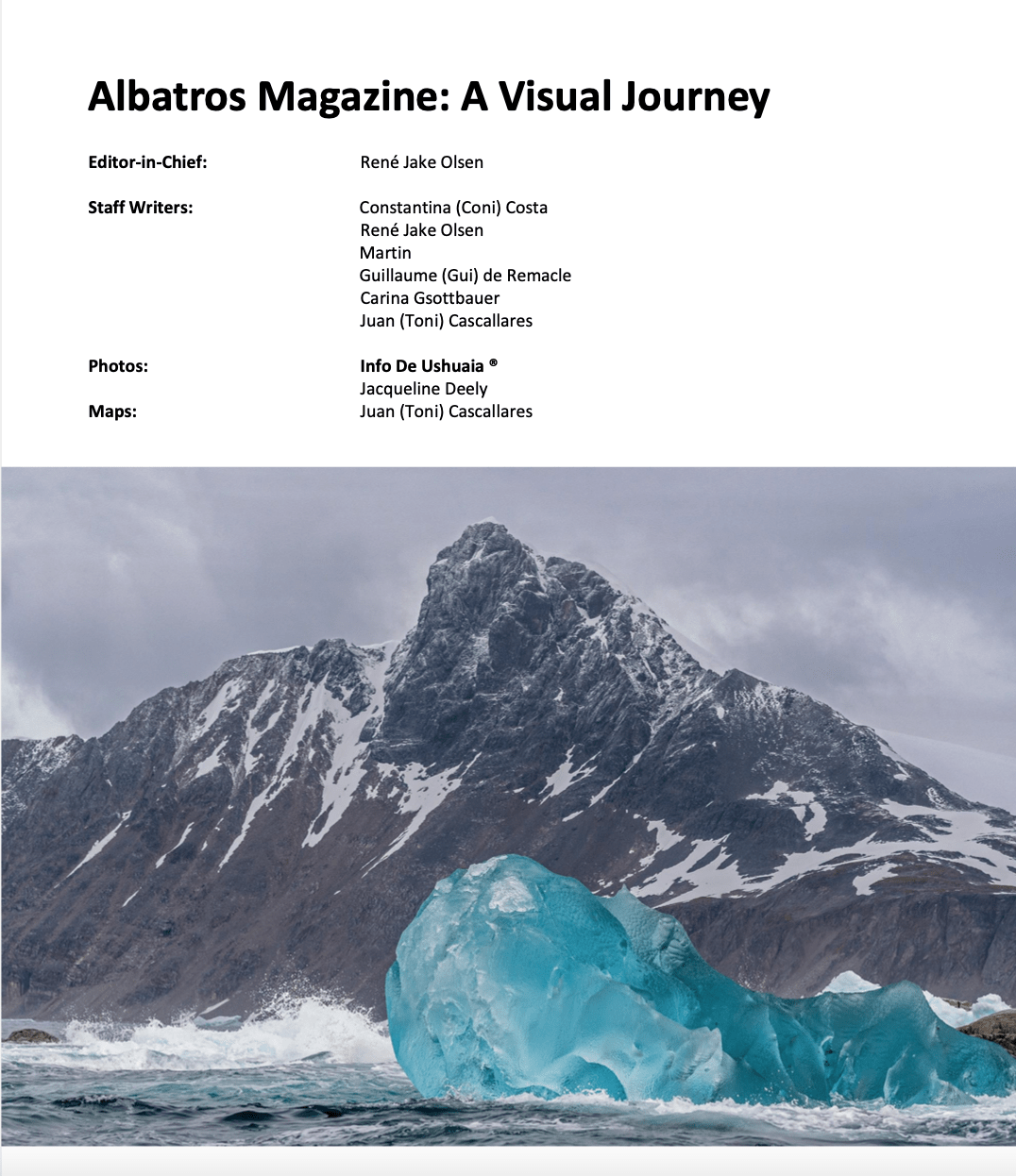
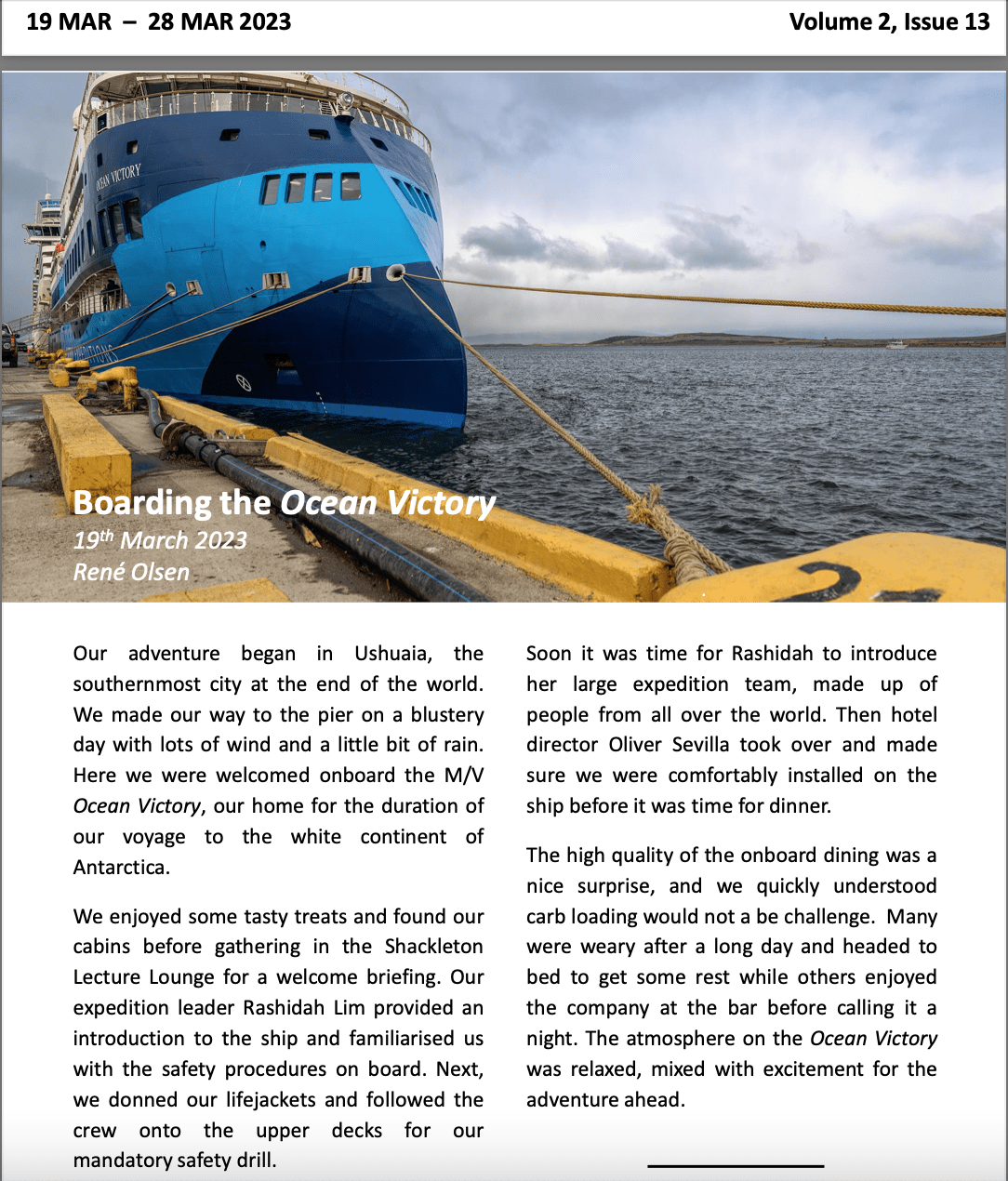
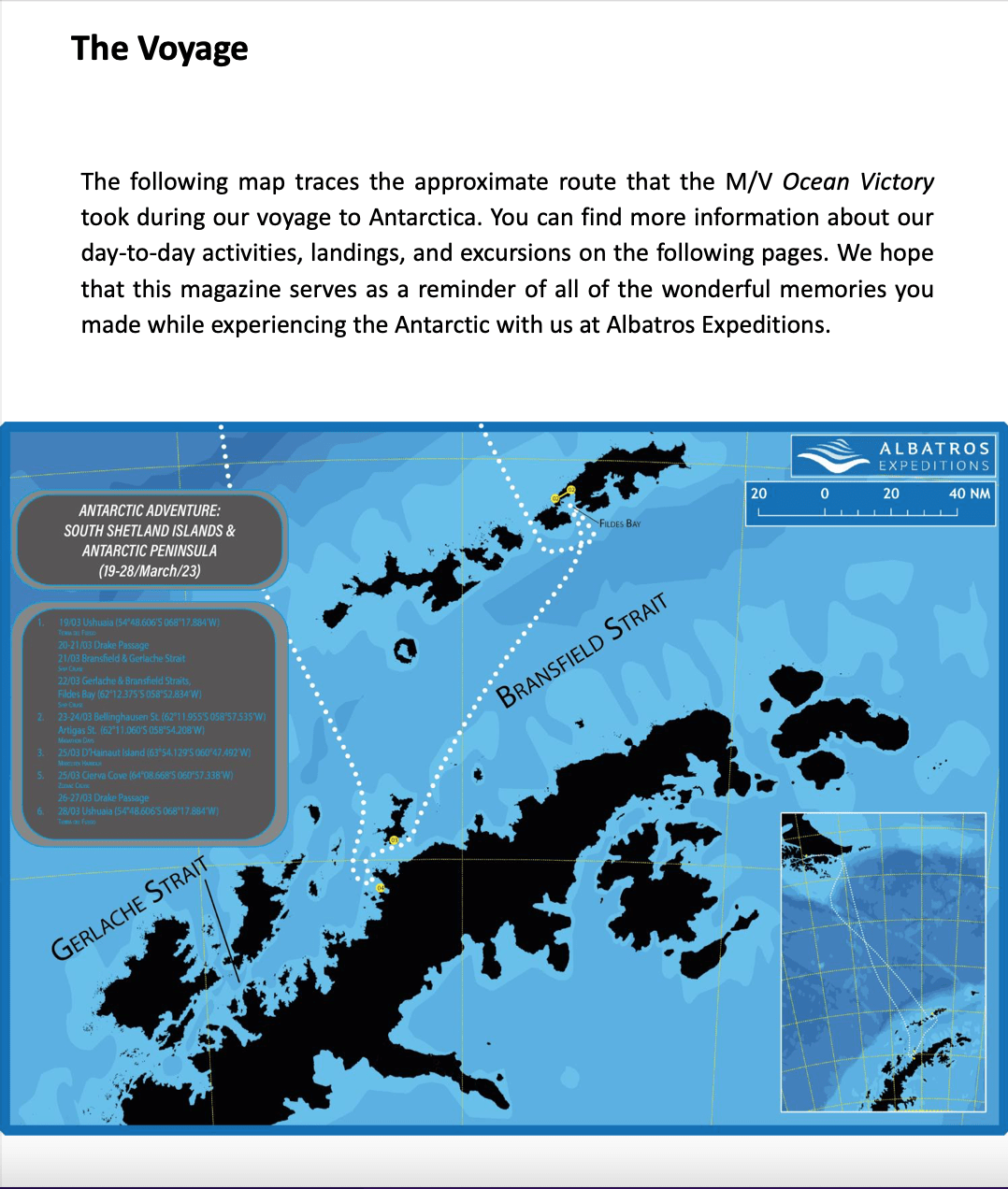
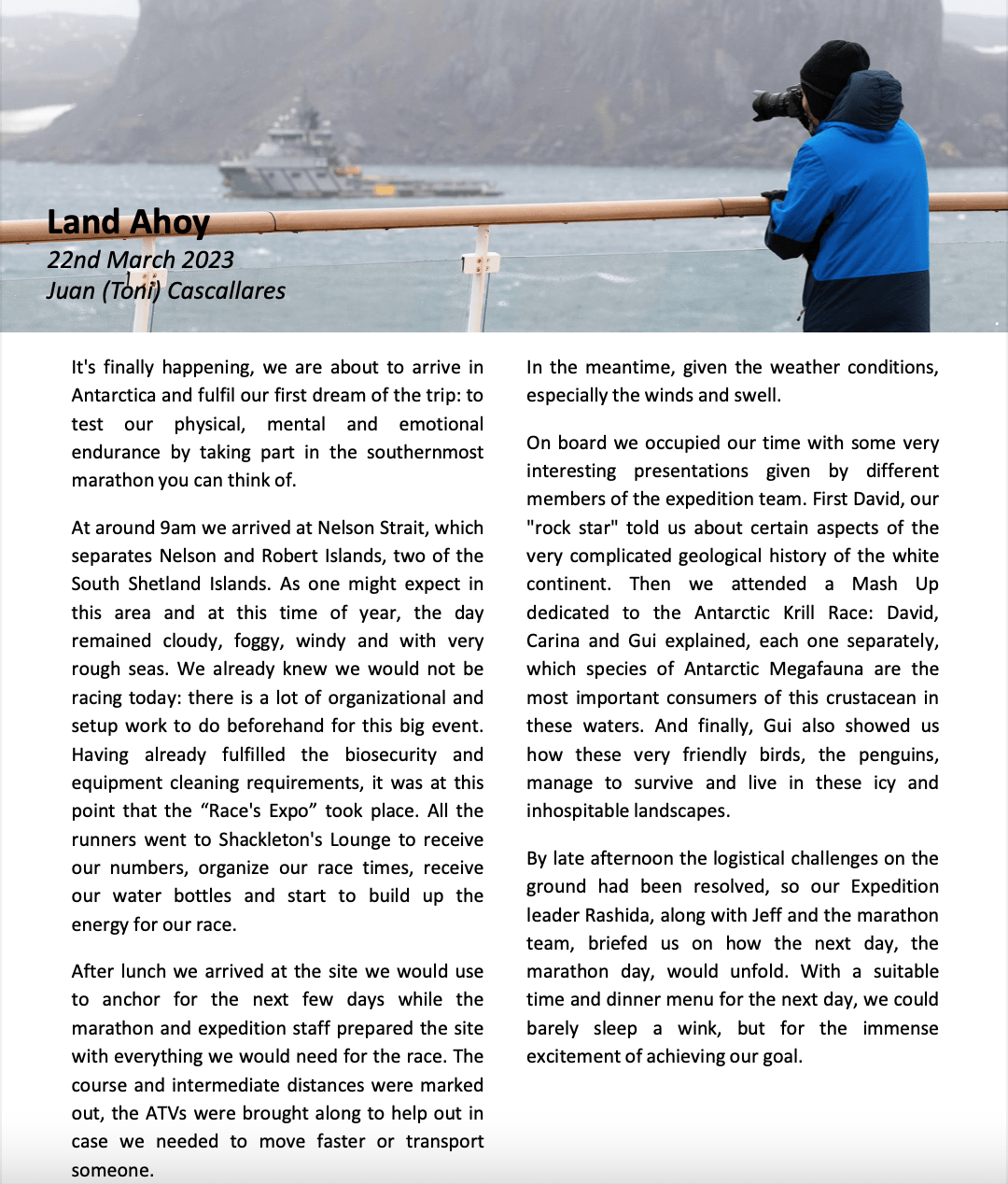
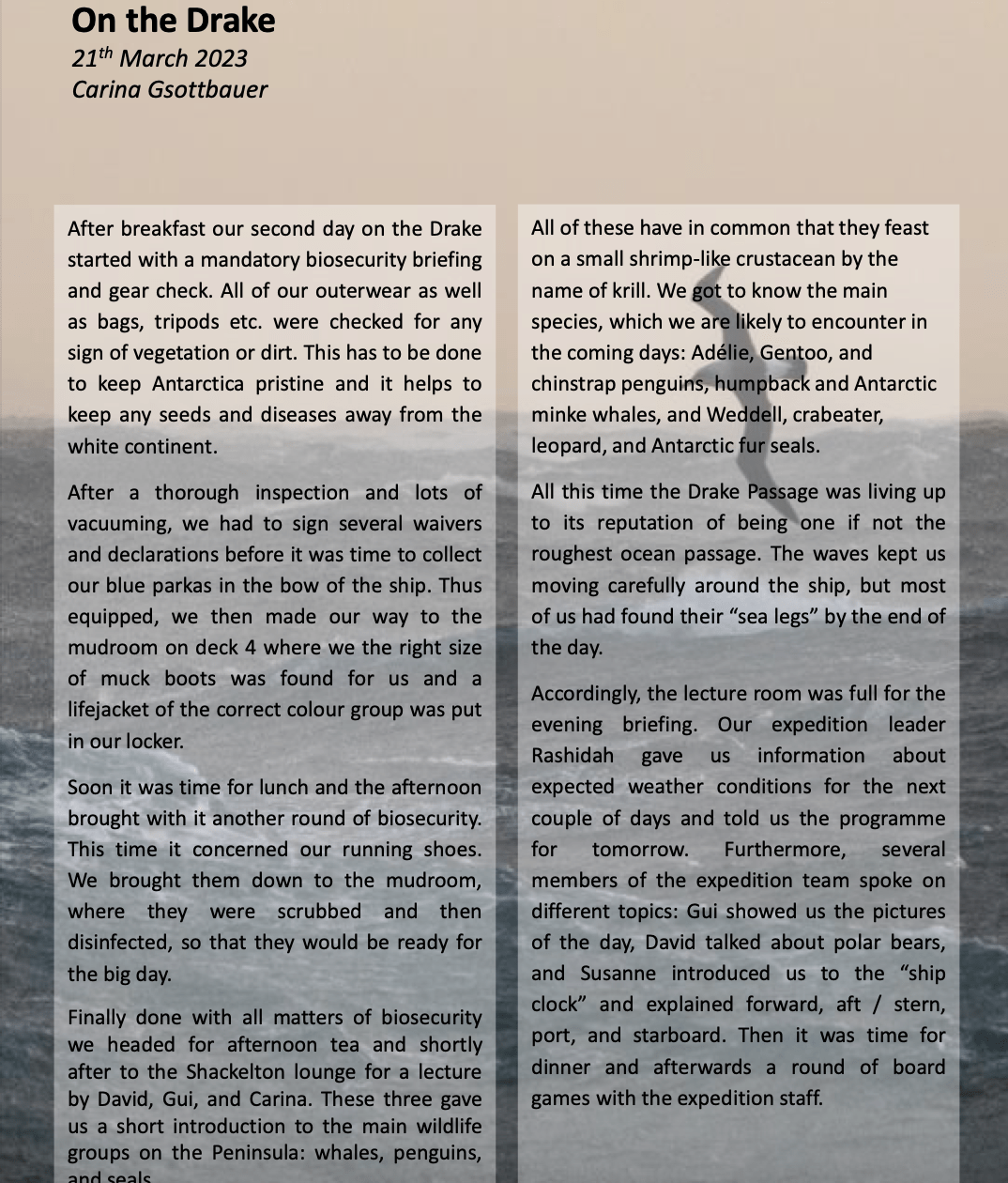
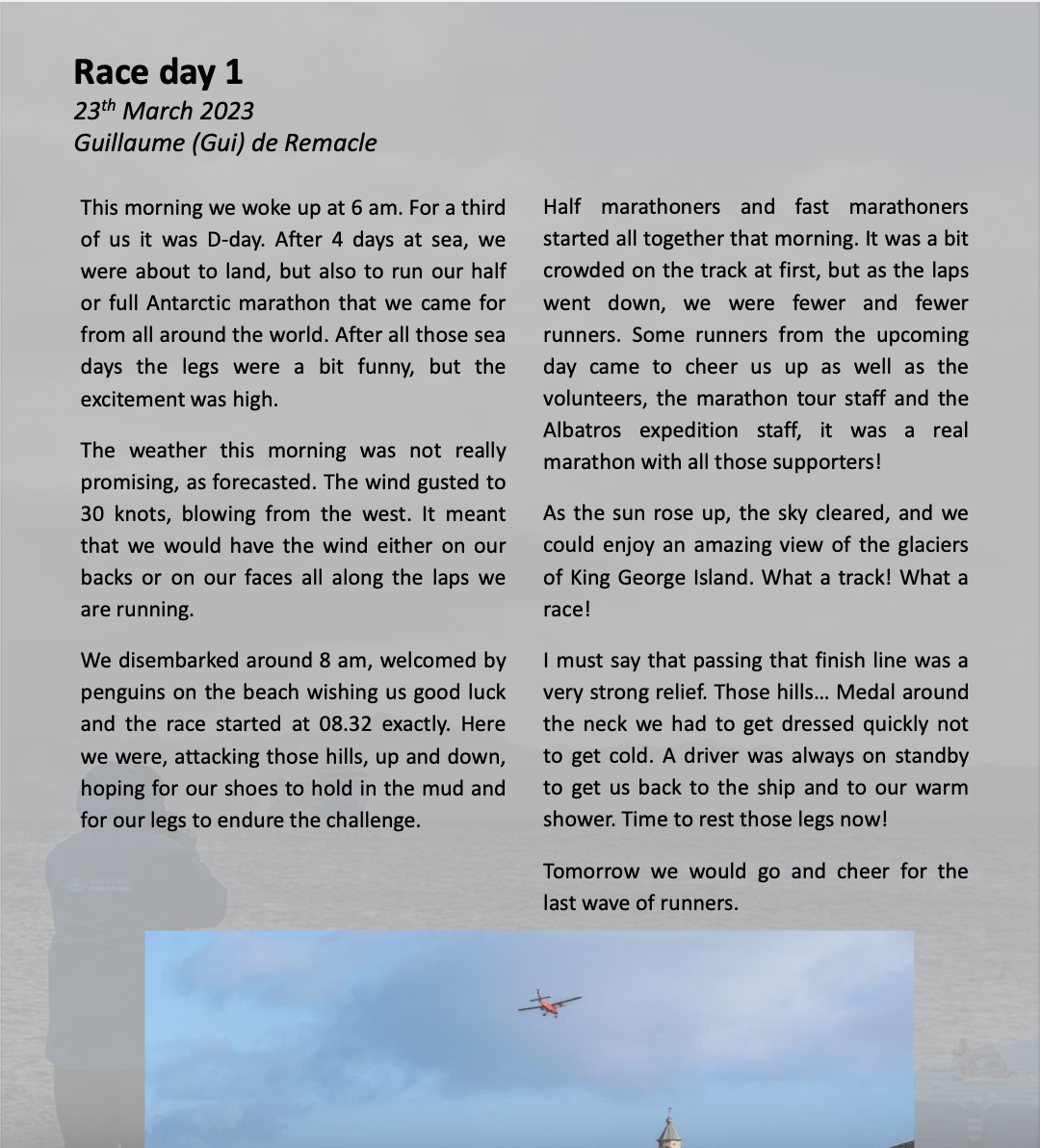
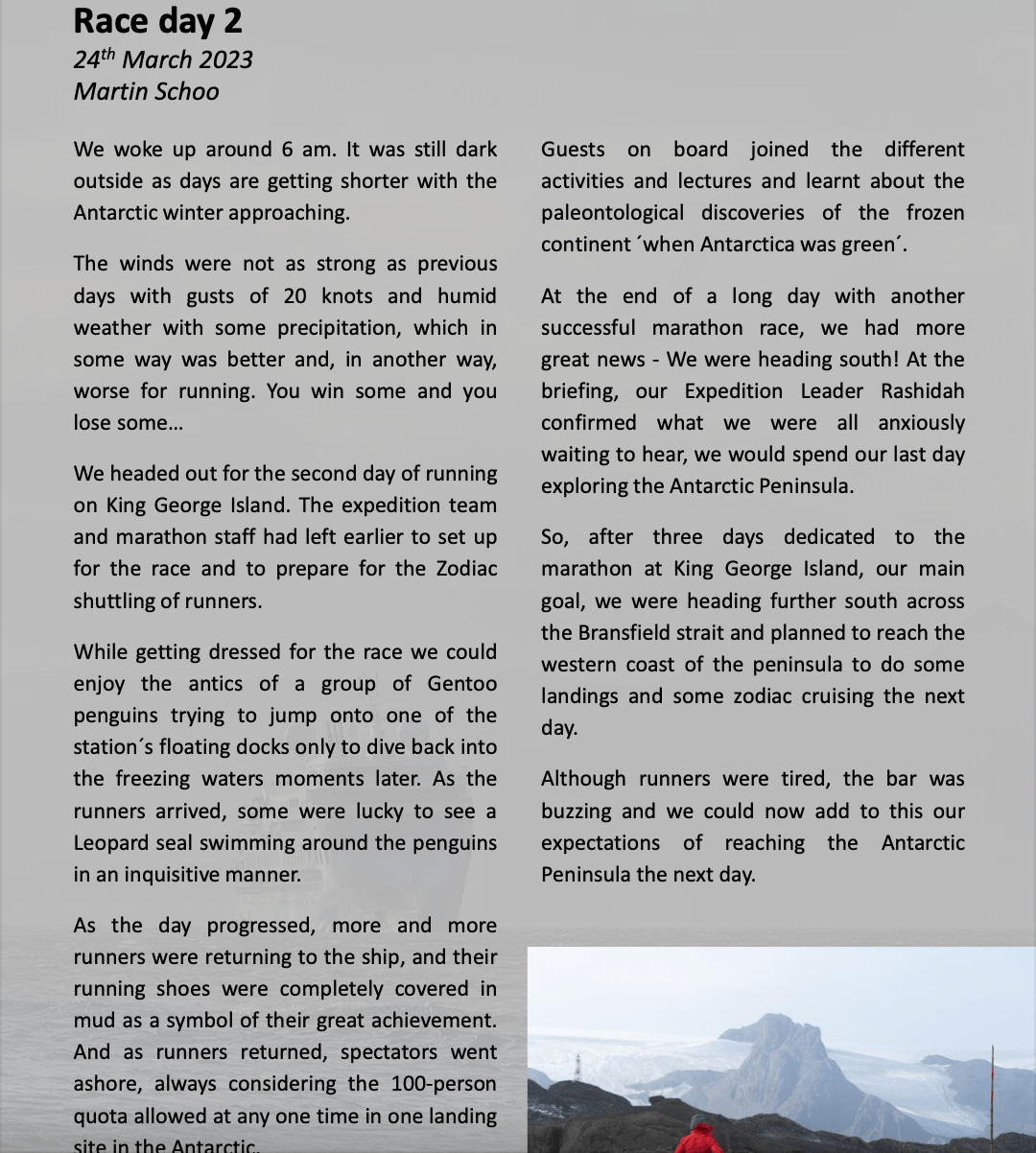
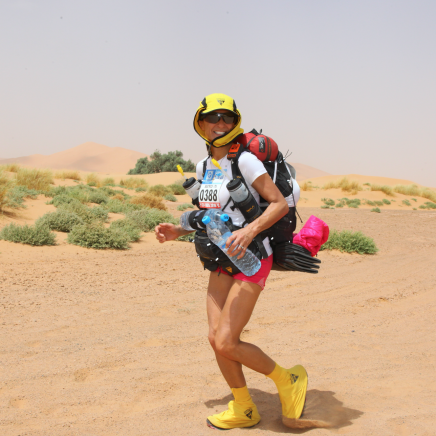
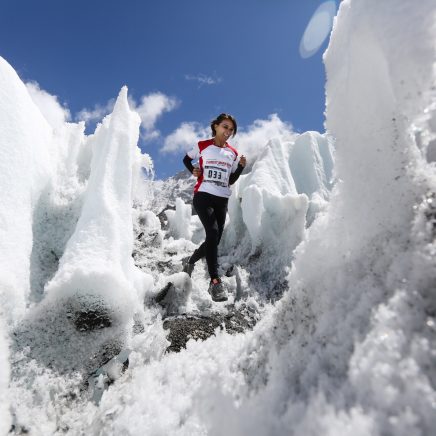
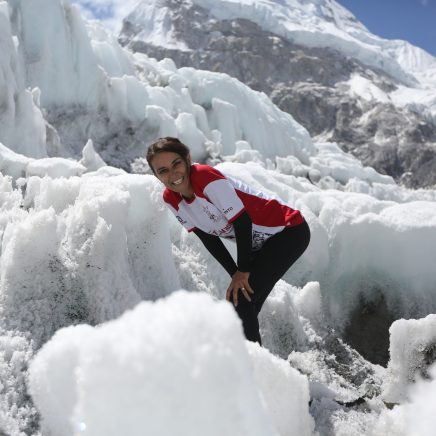
A fabulous account Beatrice of your expedition tour in Antarctica! Thank you also for noting myself as the onboard photographer. It was so nice to meet you and wish you all the best in your future travels and adventures!
Thank you Jacqueline – your photos are just amazing! Wishing you more fund adventures too!